Fall Conference Roundup
Contributions Edited by Leah Hinds (Executive Director, Charleston Hub) Begins on Page 14



It’s almost Charleston Conference time!!! In fact, by the time you’re reading this, the conference will be here! We’re looking forward to hosting over 2,000 of our friends in beautiful downtown Charleston and even more online next month during our virtual conference week.
Two Big Announcements from the Charleston Hub

Have you heard the news? Annual Reviews and the Charleston Hub announced on Monday, October 14, they will be hosting a new event in Bangkok in January 2026. Charleston Conference Asia will bring together librarians, publishers, and vendors to discuss regional and global challenges and opportunities. It will take place at the Royal Orchid Sheraton Hotel, Bangkok Thailand, January 26-28, 2026. The headline sponsor for the event is the iGroup (Asia Pacific) Limited, a Hong Kong-registered multinational organization with offices in 20 countries. Pote Lee, Chairman of iGroup noted that, “Information science and publishing are changing rapidly. This conference will give underserved stakeholders in Asia and Africa a great opportunity to participate in conversations and the decision-making process. It will have impact regionally and globally.” Subscribe to receive updates on this exciting new event!
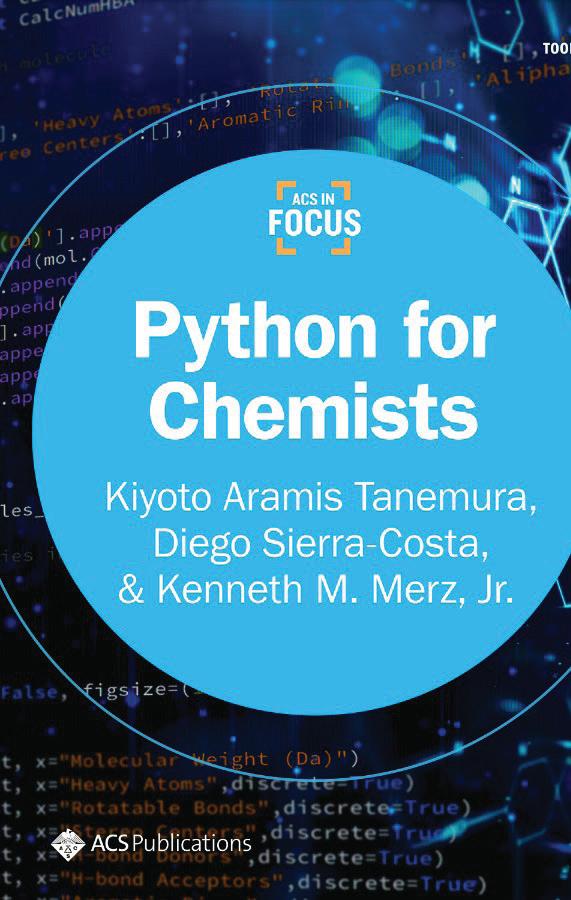
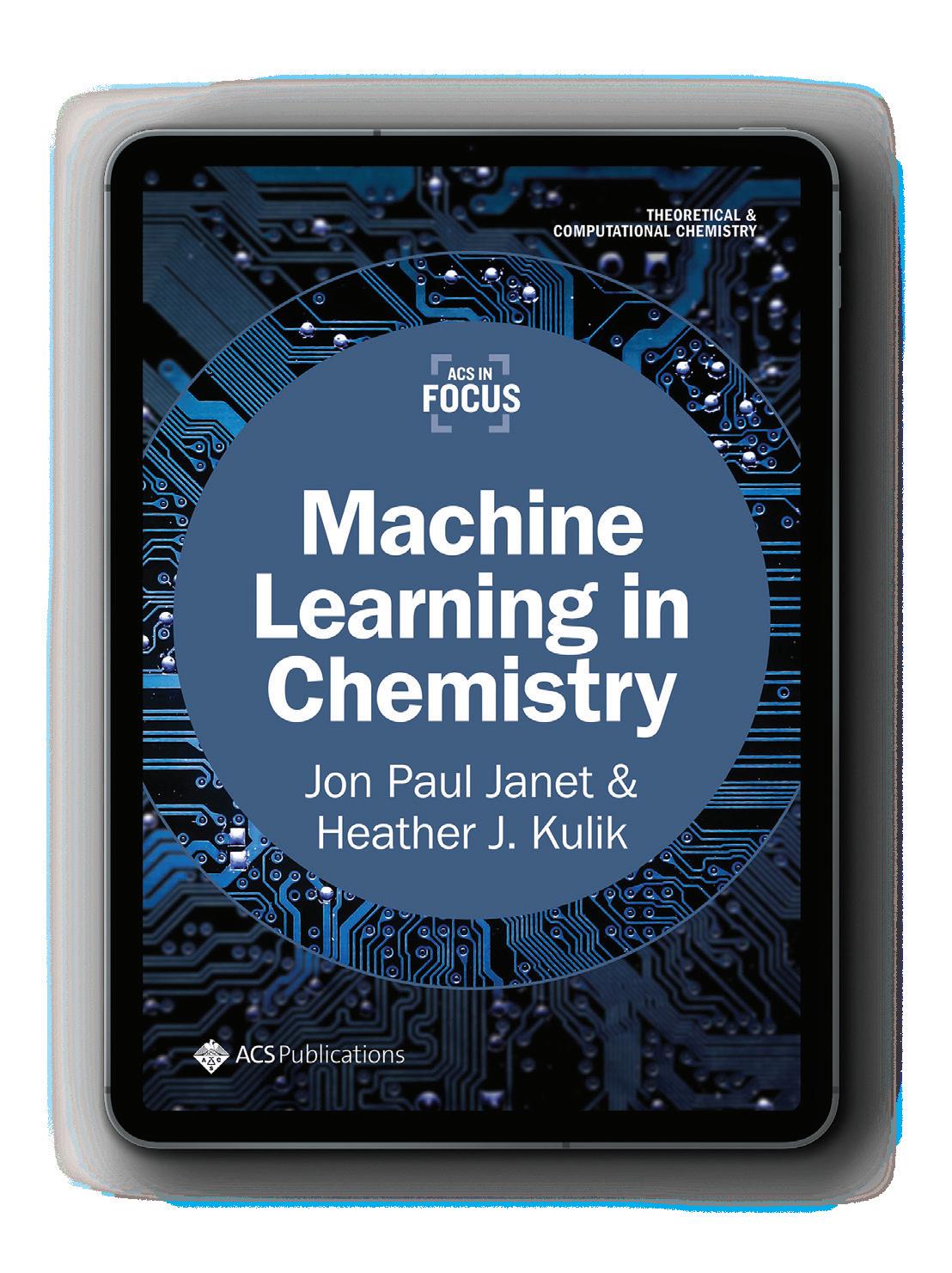
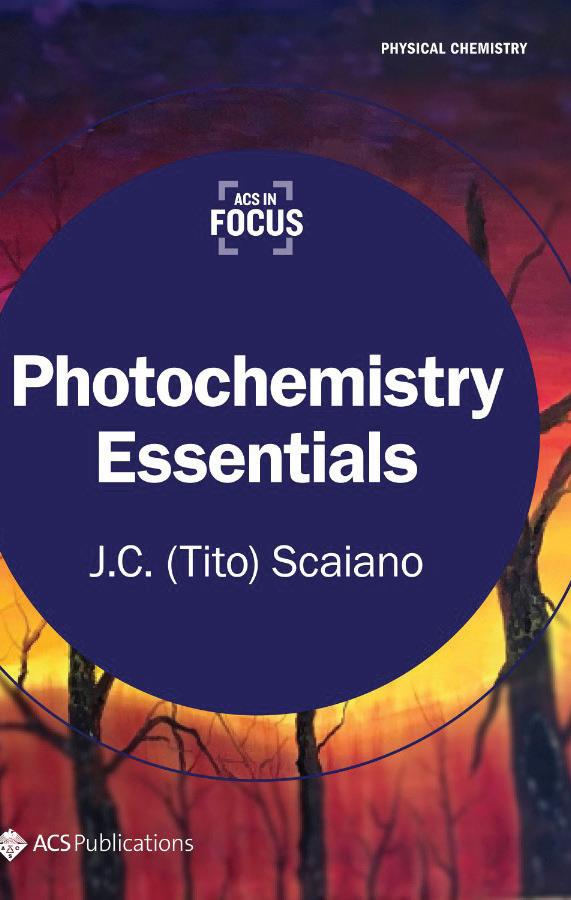
Students and scientists face the constant challenge of keeping pace with the latest advancements and technologies. ACS In Focus, a comprehensive digital resource from the American Chemical Society, empowers readers to overcome these challenges by providing the tools they need to get up to speed quickly on emerging topics.
Find out more

Includes over 2 million records, covering economics literature published over the last 135 years by leading institutions in 75 countries.
• Peer-Reviewed Journal Articles
• Working Papers
• PhD Dissertations
• Books and Book Reviews
• Collective Volume Articles
Against the Grain (ISSN: 1043-2094), Copyright 2023 by the name Against the Grain is published five times a year in February, April, June, September, and November by Against the Grain, LLC. Mailing Address: Annual Reviews, PO Box 10139, Palo Alto, CA 94303-0139. Subscribe online at https://www.charleston-hub.com/ membership-options/
Editor Emerita:
Katina Strauch (College of Charleston, Retired)
Editor:
Leah Hinds (Charleston Hub)
Manager:
Caroline Goldsmith (Charleston Hub)
Research Editor:
Judy Luther (Informed Strategies)
International Editor:
Rossana Morriello (Politecnico di Torino)
Contributing Editors:
Glenda Alvin (Tennessee State University)
Rick Anderson (Brigham Young University)
Sever Bordeianu (U. of New Mexico)
Todd Carpenter (NISO)
Ashley Krenelka Chase (Stetson Univ. College of Law)
Eleanor Cook (East Carolina University)
Kyle K. Courtney (Harvard University)
Cris Ferguson (Murray State)
Michelle Flinchbaugh (U. of MD Baltimore County)
Dr. Sven Fund (Fullstopp)
Tom Gilson (College of Charleston, Retired)
Michael Gruenberg (Gruenberg Consulting, LLC)
Bob Holley (Wayne State University, Retired)
Matthew Ismail (Charleston Briefings)
Donna Jacobs (MUSC, Retired)
Ramune Kubilius (Northwestern University)
Myer Kutz (Myer Kutz Associates, Inc.)
Tom Leonhardt (Retired)
Stacey Marien (American University)
Jack Montgomery (Retired)
Lesley Rice Montgomery (Tulane University)
Alayne Mundt (American University) Bob Nardini (Retired)
Jim O’Donnell (Arizona State University)
Ann Okerson (Center for Research Libraries)
David Parker (Lived Places Publishing)
Genevieve Robinson (IGI Global)
Steve Rosato (OverDrive Academic)
Jared Seay (College of Charleston)
Corey Seeman (University of Michigan)
Bruce Strauch (The Citadel, Emeritus) Lindsay Wertman (IGI Global)
Graphics:
Bowles & Carver, Old English Cuts & Illustrations. Grafton, More Silhouettes. Ehmcke, Graphic Trade Symbols By German Designers. Grafton, Ready-to-Use Old-Fashioned Illustrations. The Chap Book Style.
Publisher:
Annual Reviews, PO Box 10139 Palo Alto, CA 94303-0139
Production & Ad Sales: Toni Nix, Just Right Group, LLC., P.O. Box 412, Cottageville, SC 29435, phone: 843-835-8604
<justwrite@lowcountry.com>
Advertising Information: Toni Nix, phone: 843-835-8604
<justwrite@lowcountry.com>
Send correspondence, press releases, etc., to: Leah Hinds, Editor, Against the Grain <leah@charlestonlibraryconference.com>
Authors’ opinions are to be regarded as their own. All rights reserved. Produced in the United States of America. Against the Grain is copyright ©2024

















• Unlimited Open Access publishing for all corresponding authors in ACM's conference proceedings, journals, and magazines
• Unlimited read access for all authorized users to the full-text contents of the enhanced version of the ACM Digital Library
• Default CC-BY author rights on all accepted research articles (multiple CC options available to choose from)
• Articles are accessible via the world’s most widely used Digital Library dedicated to computing research
• Articles receive 2-3x the number of full-text article downloads
• Articles receive up to 70% more citations
• Authors are immediately compliant with the vast majority of Public and Private Research Funder Open Access Mandates
• Authors retain the copyright of their published article
ACM is committed to becoming 100% Open Access beginning January 1, 2026.
ACM Open is how we will get there.





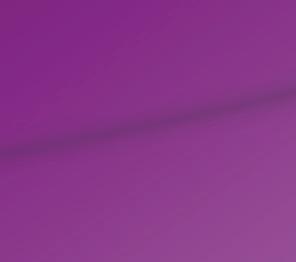

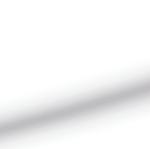












Iwas trying to remember the first conference that I attended. It was when I was working at Duke and I went to an audiovisual conference. There weren’t a lot of conferences back then and it was a real treat to be selected to go! Of course, Duke paid all expenses back then… But now a-traveling we shall go (in person or virtually) to many conferences far and wide! This issue provides a round-up of attendee reports from a variety of events and meetings in the library and information industry for fall 2024. Of course we couldn’t cover them all, so if you attended another event and would like to have your report included in a future issue, please contact us at editors@against-the-grain.com. Up first, we travel to Manchester, UK, for musical (and other) tales from the Association of Learned and Professional Society Publishers (ALPSP) 2024 Meeting from Heather Staines, Senior Consultant and Director of Community Engagement at Delta Think. Then, we fly to sunny Lisbon to see the miradouros over the open access landscape at the Open Access Scholarly Publishing Association (OASPA) 2024 meeting with Joanna Ball, Managing Director of DOAJ. Next, we travel the World Wide Web (remember when that’s what we called the Internet?) for the NISO Plus Global Online event
with Mary Beth Barilla, Director of Business Development and Communications at NISO. The AGU Conference Center in Washington, DC, was the site of the SSP New Directions Seminar, reported jointly by Janaynne Carvalho do Amaral, Postdoctoral Research Associate, University of Illinois at Urbana-Champaign, who attended and presented virtually, and by Lettie Conrad, Product Experience Architect, LibLynx, who attended and presented in person. And last but not least, we have a preview of the Frankfurter Buchmesse 2024 from our very own Leah Hinds, who will be attending the Book Fair and hosting a Charleston Conference event there on Friday, October 18. Of course, we’re also looking forward to the Charleston Conference and that will be here by the time you’re reading this column! Whew!!!

Also included in this issue are two excellent interviews: Peter Suber, Senior Advisor on Open Access, Harvard Library and Director of the Harvard Open Access Project, and Clifford Lynch, Executive Director, Coalition for Networked Information (CNI). Both interviews are excerpts of conversations on our ATG podcast, and the full episodes can be listened to at https:// www.charleston-hub.com/media/podcasts/.
Thanks for reading — let’s get to it! Yr.Ed.
Send letters to <editors@against-the-grain.com>, or you can also send a letter to the editor from the Charleston Hub at http://www. charleston-hub.com/contact-us/.
Dear Editor:
We became aware of your interesting publication. We really like it! We would therefore like to ask politely if we would be allowed to occasionally republish selected articles with text and images in one our magazines. Daniel Lenz suggested that this might be interesting for you, too.
Please do not hesitate to call us if you have any questions! Thank you very much for your attention and cooperation!
Best/Mit freundlichen Grüßen,
Michael Lemster (Head of Content Management, Digital Publishing Report GmbH) <michael@digital-publishing-report.de>
VOLUME 37 — 2025
Issue Ad Reservation Camera-Ready
February 2025 01/09/25 01/23/25
April 2025 02/20/25 03/13/25
June 2025 04/17/25 05/08/25
September 2025 06/12/25 07/10/25
November 2025 08/21/25 09/11/25
Toni Nix <justwrite@lowcountry.com>
Phone: 843-835-8604
Against the Grain / November 2024
Dear Michael:
Thank you for your email and for your interest in republishing articles from Against the Grain. We would be happy to have our content included with citation and link back to the article on our website. We would like to be notified in advance as well so we know which articles are being republished. Let me know if you have any questions.
Thank you,
Leah Hinds (Executive Director, Charleston Hub) <leah@charlestonlibraryconference.com>
Dear Leah:
I do hope you’re fine! Today, we’d like to notify you that, according to our helpful agreement of earlier this year, we’d like to re-publish Lucy Lu Wang’s article “Generative AI for Scholarly Information Access” in the next days. The article appears in your June 2024 issue (v.36-3) guest edited by Peter Brantley and Vessela Ensberg
Thanks for your consideration, and have a good week!
Michael Lemster (Digital Publishing Report GmbH)
Happy to help with your request Michael. We’ll send you a PDF file of Lucy’s article shortly. Thanks, Leah
<https://www.charleston-hub.com/media/atg/>
Brepols Online Databases


BREPOLIS BIBLIOGRAPHIES remain at the forefront of academic research, o�fering unparalleled access to a wealth of scholarly resources that empower researchers, students, and academics alike.
Enhanced User Experience: Our platform is designed with a new user-friendly interface and advanced search functionalities, in line with WCAG Guidelines.
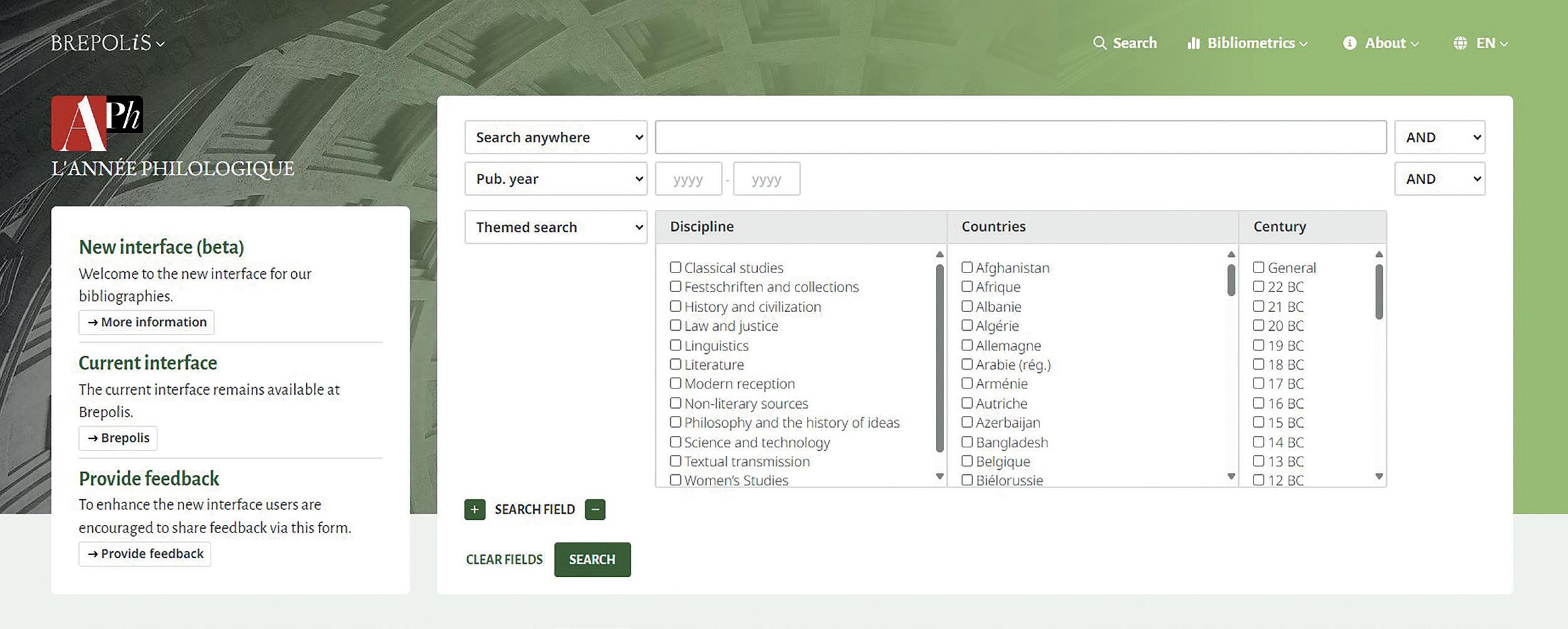

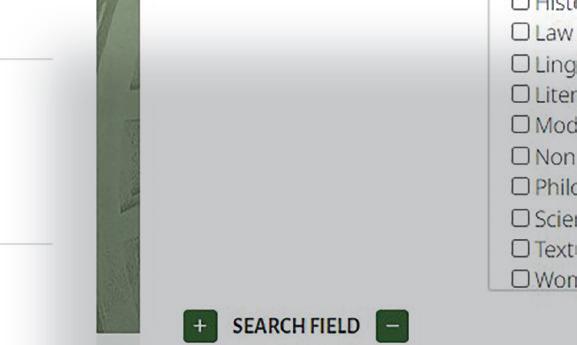

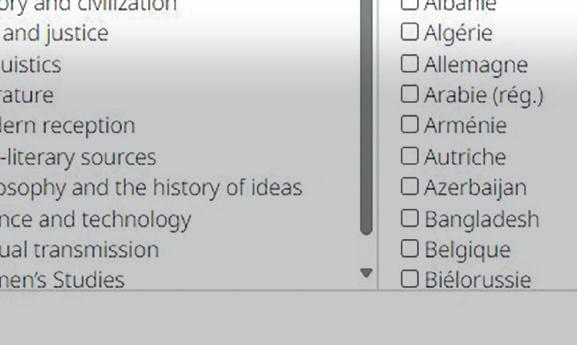

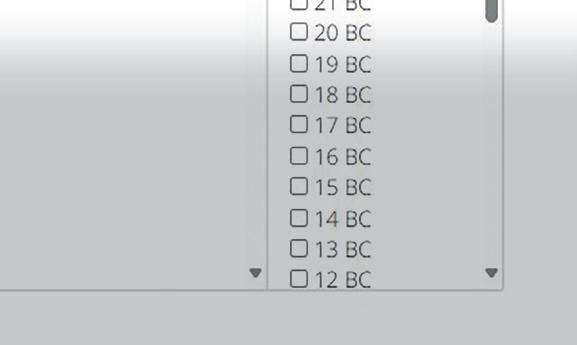
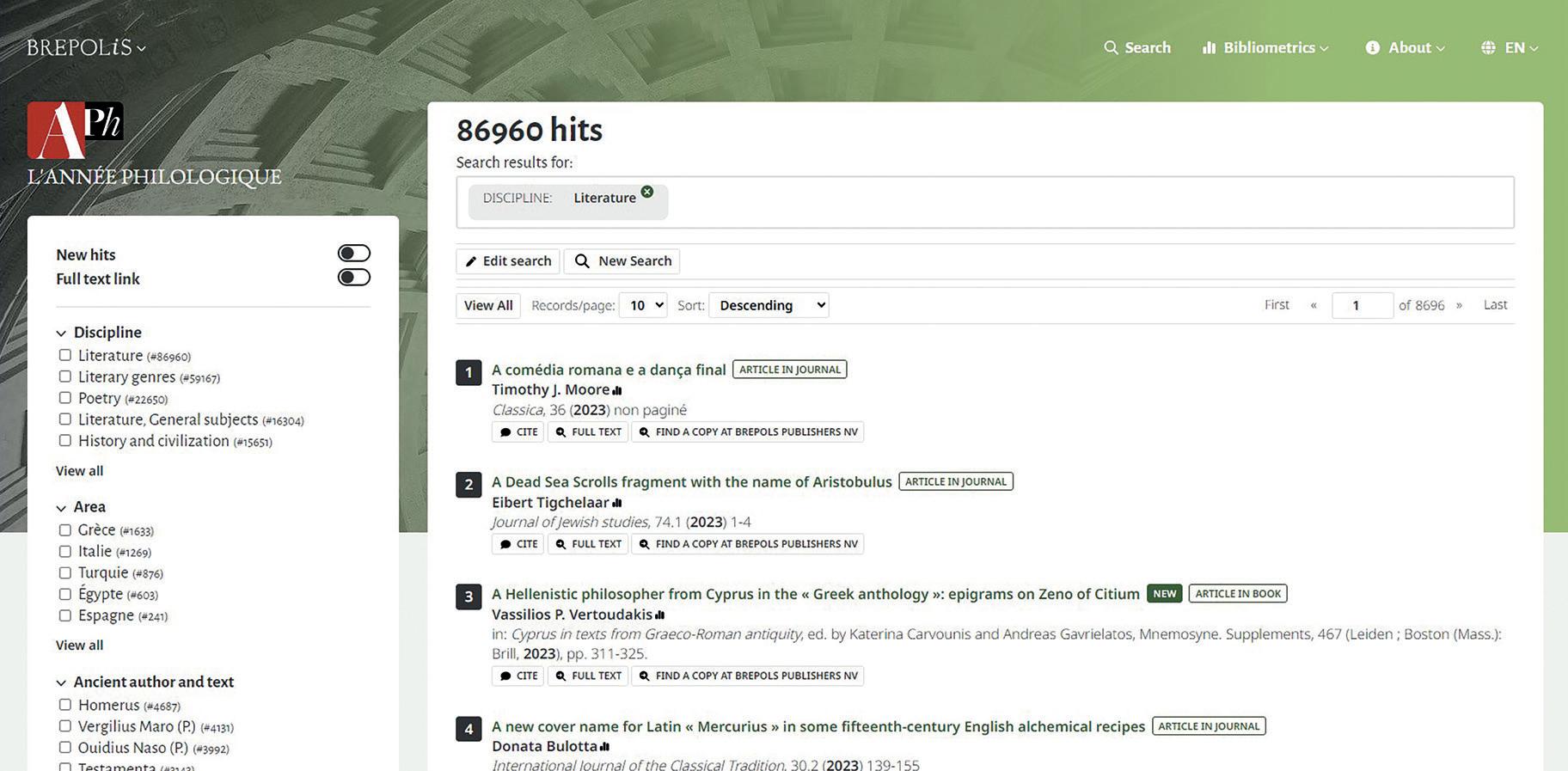



Comprehensive Coverage: 4,240,000 bibliographical records

Brepolis Bibliographies provide extensive and meticulously curated databases, ensuring your patrons have access to the most relevant and up-to-date information across various disciplines.
Rumors continued from page 1
The second big announcement is that we are pleased to announce the launch of Katina, a new digital publication that addresses the value of librarians to academia and wider society and elevates their role as trusted stewards of knowledge. I never dreamed I’d be asked to lend my name to a new publication, but here we are. They asked and I said yes! Katina is written by and for the international community of librarians and is also of special interest to publishers and vendors. The content is easy to understand, engaging, informative and accurate. Stay tuned for more details — visit the Annual Reviews booth (#10) at the Charleston Vendor Showcase, and we’ll have a special announcement following the opening keynote on Wednesday morning (featuring yours truly)! Hooray! www.katinamagazine.org

Appalachian State the day before the hurricane hit! She attended the 1989 conference which began a week after Hugo slammed Awendaw Island just 20 miles from Charleston. Now Eleanor and her husband Jim are living in the mountains of NC when Hurricane Helene descended. They had no power for 12 days! Fortunately, they had a generator, so they camped out, and had no significant property damage when all around them was chaos! Getting back to Eleanor’s bee, for a long time, Eleanor has been trying to arrange for a Charleston Conference documentary. She has made contact with Charles Germain, remember him?, who makes documentaries these days. Eleanor is hoping to locate someone who would like to take a lead on this project. Eleanor will be in Charleston and is rooming with Joyce Dixon-Fyle!
The world-traveler Matthew Ismail sends an update from Bali, following time spent in Kuala Lumpur, and will be traveling to Bangkok next! Wow! He’s started a podcast called “Interesting People, Interesting Conversations” that is hosted on Spotify. Be sure to check it out! We miss him as our host for the ATG Podcast but wish him the best in all of his travels.
Just got word from the industrious Adam Chesler that he is no longer working with AIPP. There was a restructuring, with lay-offs, of the Sales Department in February, and Adam’s last day was May 3 (he was asked to stay on for a couple of months, to help tie up some loose ends). Adam says he considers himself semi-retired; he’s not seeking another job in academic publishing, at least for now. Circumstances permitting, Adam plans to attend the Charleston Conference in November and would like to continue working on the board through the end of the year after the post-conference wrap-up is completed.
Speaking of semi-retired, I heard from Sven Fund that he enjoyed a week of sailing in beautiful Croatia prior to heading to Frankfurt for the Buchmesse. Sven moderated one of the panels for the Charleston Conference event there, among many other meetings and presentations. He claims to be retired but he sure seems busier than ever!
Tim Gillet has exciting news! He and colleague Jon Hunt have purchased Research Information. Gillett has been editor of Research Information since 2014, while Hunt was formerly head of business development and sales director at Europa Science, the previous owner of the publication. Congrats to both of you!
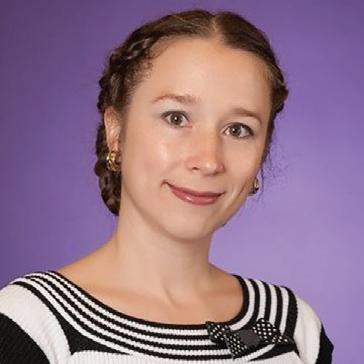
Congratulations are also due to Yulia Sevryugina, Chemistry Librarian at the University of Michigan, who is this year’s winner of the Cynthia Hurd Award. Cynthia Graham Hurd was a librarian for over 31 years in Charleston public and academic libraries. She worked as the branch manager of the popular St. Andrews Regional Library, and as a part-time reference librarian at the College of Charleston. On June 17, 2015, her life ended when a lone gunman entered the historic Emanuel AME Church and killed nine people during a prayer meeting. Cynthia is remembered as a “tireless servant of the community who spent her life helping residents, making sure they had every opportunity for an education and personal growth.” To honor her legacy, Springer Nature created an annual award for a librarian who has created a project or led an initiative that has made a positive impact on students, local communities, and/or the library profession. Thank you to Springer Nature for continuing to support this important initiative!
Eleanor Cook has had a bee in her bonnet for quite some time! She remembers Hugo well and was offered the job at
Have you heard of Bessie the Coburg Cow? The famous bovine even has a Halloween costume this year. She is wearing a pointy hat, black cape and holding a baby cow skeleton next to a bottle of milk. There are more than 22,000 followers. It is posted on the Coburg Cow Weather Report Facebook page with the “Caption BOO or MOO.”
Speaking of Halloween, Charleston was chosen as home of some of the kindest and most helpful locals and a city in which to celebrate Halloween, and South Carolina was selected as a top state for ghost sightings while driving. Heather Staines asked if she needs to be on the lookout for a ghost while she’s Ubering around downtown for the conference! You never know…
The beautiful Charleston Gaillard Center, home to the conference’s vendor showcase, plenary sessions, and more, was featured on the cover of Southeast Meetings + Events magazine! Congrats to our friends at the Gaillard!
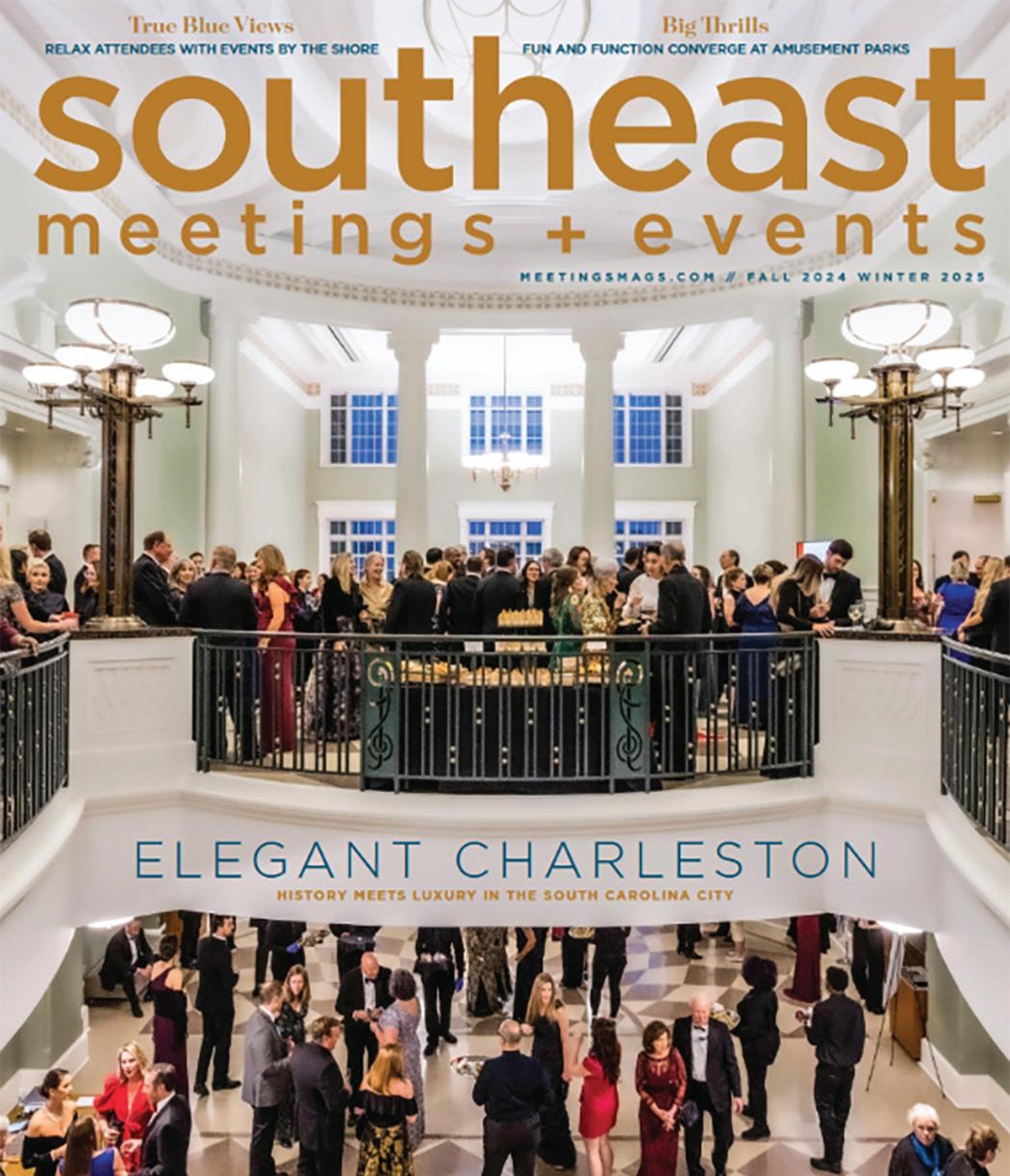
<https://www.charleston-hub.com/media/atg/>
Thank you for another great year at the Charleston Conference! Kanopy and Libby are proud to offer the best platforms for all your digital content needs. From streaming films to audiobooks and ebooks, we’re dedicated to providing digital resources that support instruction, research, and student success.
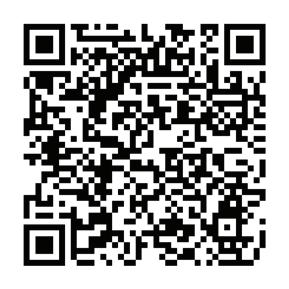

Let’s keep the conversation going. Reach out to discover how we can partner to meet your library’s needs.
Have you taken a look at the agenda for the conference? I’m especially excited to see my old friend David Shields presenting on “Recovering America’s Greatest Lost Fruits, Grains, and Vegetables — a Progress Report.” David is the Carolina Distinguished Professor at the University of South Carolina, Chair, Carolina Gold Rice Foundation, and Chair, Slow Food Ark of Taste Committee. He’s working with Bevin Cohen who spearheaded the seed library movement in the Midwest where local libraries sponsor the exchange of heirloom seeds. He also recently began production of a ETV television show called “The Flavor Savers.” Wow!!!
Another can’t-miss-it presentation is the keynote from Malika Pryor, the Chief Learning and Engagement Officer at the International African American History Museum. This talk will be followed by a short overview of the cultural history and significance of the Gullah Geechee sweetgrass basket tradition in Charleston, presented by Andrea Cayetano-Jefferson. Andrea recently let us know that Vice President Kamala Harris purchased one of her baskets while she was attending a rally in Savannah, GA this summer!
The Charleston Premiers are back again with five-minute previews of the new and noteworthy. This year’s event takes place on Wednesday, November 13, at 10:15 am in the Grand Ballroom 1 at the Gaillard Center. Presenters will have 5 minutes to do their talk, then the audience will have a chance for Q&A at the end for all presenters, followed by voting in 3 “best of” categories.
Back by popular demand! A Vendor Meet-Up will be held at Charleston Share House (23 Ann Street) where exhibitors can get together to network or just to say “Hi” and visit with each other. This will take place after the booth setup hours on Monday since we expect everyone will be very busy during the showcase on Tuesday. Light snacks and your first drink will be provided by a sponsorship from Jack Farrell & Associates.
Our one-year anniversary of being acquired by non-profit organization Annual Reviews was just a few weeks ago. AR hosts an annual employee appreciation event where they recognize company anniversaries, and in addition to all of the Charleston Hub employees celebrating one year with AR there were several big milestones for numbers of years working for the Charleston Hub. Toni Nix (ATG ads manager and vendor showcase organizer) celebrated 25 years! Sharna Williams (conference registrar) and Leah Hinds (executive director) both celebrated 20 years! Debbie Larsen (billing and registration assistant) has been with us for 15 years. Caroline Goldsmith (associate director) marked 14 years, Tom Gilson (associate editor) has been with us for 13 years, and Christy Anderson (social media specialist) celebrated 4 years. This adds up to an astonishing 110 years of service!!! The Charleston Hub wouldn’t be able to continue without the hard work of this group of people, so be sure to tell them congrats when you see them.
Well, that’s it for now. Thanks for reading and enjoy the holidays. Our next issue will be in February 2025!
<https://www.charleston-hub.com/media/atg/>
Column Editor: Bruce Strauch (The Citadel, Emeritus) <bruce.strauch@gmail.com>
Chess was actually the first abstraction of war. But in the late 18th century, Johann Hellwig invented a more elaborate variant he named Kriegsspiel. It was the first real war game as we now know it.
All major militaries use a form of this simulation plus federal agencies. It inspired Dungeons & Dragons, Warhammer, and combat based videogames.
Hellwig replaced the chess pieces with modern arms, like artillery, and the king with an objective like a fixed fortification. Von Reisswitz, a Prussian of course, replaced squares with wet sand as imaginary landscapes. Games took weeks and cats were banished from the home.
Gen. von Moltke was inspired by it to alter military formations leading to the decisive victory over the French in 1870. He formed the first General Staff and had them play Kriegsspiel. Together, they made war into a science, testable and rigorous.
See: Kelly Clancy, “The Original War Game,” The Wall Street Journal, June 15-16, 2024, p.C5. Kelly Clancy is a neuroscientist and author of “Playing With Reality: How Games Have Shaped Our World,” by Riverhead Books.
For a mere $65 million, you could be the owner of 2,000 acres and a Gilded Age wedding cake mansion in Millbrook, NY. That’s in the Hudson Valley, 90 miles north of NYC. It’s owned by the Hitchcock siblings, heirs to Mellon banking money.
Along with the big house, there’s a 5-bedroom “cottage” by Addison Meisner of Palm Beach fame and a Bavarian chalet bowling alley. The mansion has the usual high ceilings, carved wooden staircases, stained glass windows, etc.
More important to our little saga, Peggy Hitchcock had an affair with Tim Leary when he was an acid-pioneering Harvard prof and invited him and assorted merry pranksters to dwell there. They dedicated the site to psychedelic awakening. And of course Allen Ginsburg, Jack Kerouac, and Aldous Huxley dropped in and dropped some 3-way sunshine. And there was naked gamboling on lawns and in the forest.
Caleb Carr (1955-2024) was the son of Lucien Carr, poet, journalist, and catalyzing force of the Beat Movement. The home in downtown Manhattan was a hangout for Allen Ginsberg and Jack Kerouac, a place of drunken revelry and “bohemian chaos.”
Caleb’s dad was a violent drunk who had done time for manslaughter. He beat Caleb unmercifully, often knocking him down flights of stairs. Caleb wrote with a fascination for the roots of evil and a sense of outrage. He wrote multiple novels, but the big one was The Alienist (1994) about a forensic psychiatrist and the murders of male prostitutes.
See: “The damaged author who wrote The Alienist,” The Week, June 7, 2024, p.35.
Herewith, some of the year’s best:
Anne Byrn, Baking in the American South: 200 Recipes and Their Untold Stories (Harper Celebrate, $45) (encyclopedic 485 pages from humble to high-falutin’. Recipes drawn from department stores, school cafeterias, tearooms, boarding houses, historic homes, cookbooks, churches, synagogues, restaurants, farms, mills, pastry shops, catering kitchens and home kitchens.);
Marcelle Bienvenu, Who’s Your Mama, Are You Catholic, and Can You Make a Roux? (Susan Schadt Press, $48) (“We were not aware that we were assimilating any special kind of cuisine. We only knew that our food was good.”);
Melissa M. Martin, Bayou: Feasting through the Seasons of a Cajun Life (Artisan, $35) (étouffées, jambalayas, gumbos, seafood boils with no upscaling or fancifying);

The locals were not amused. Plus, Richard Nixon had pronounced Leary “the most dangerous man in America.”
G. Gordon Liddy, then assistant DA for Duchess County, swung into action. The property was raided and pranksters hauled off in cuffs. Leary went to prison on drug charges, escaped, and fled to Algeria.
This slice of ’60s history could be yours with the right creative financing.
See: “A Hudson Valley Estate Where The King of LSD Once Reigned,” The Wall Street Journal, June 28, 2024, p.M3.
Stephen and Evie McGee Colbert, Does This Taste Funny? Recipes Our Family Loves (Celadon Books, $35) (yes, the late-nite TV host with Lowcountry fare inspired by the covid quarantine when he and wife rediscovered their South Carolina roots);
Edward Lee, Bourbon Land: A Spirited Love Letter to My Old Kentucky Whiskey (Artisan, $30) (“Bourbon is a path into a part of our lives that remains dormant without it.”);
Ashleigh Shanti, Our South: Black Food Through My Lens (Union Square & Co., $40) (Who could resist boiled peanut and Virginia ham soup?).
See: Jonathan Miles, “Steaming Hot Cookbooks,” Garden & Gun, Aug.-Sept, 2024, p.40.
<https://www.charleston-hub.com/media/atg/>
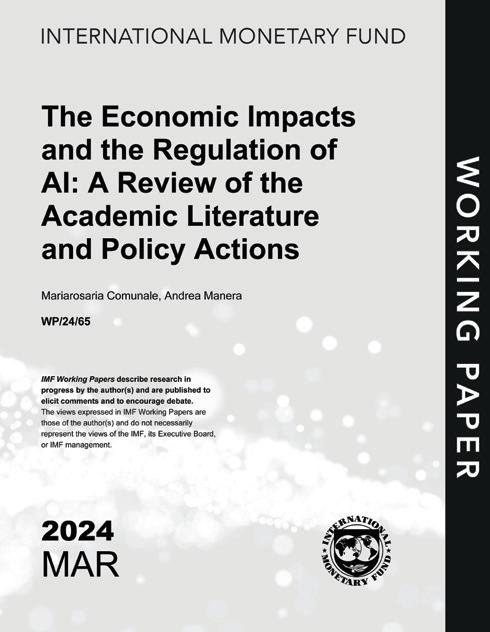
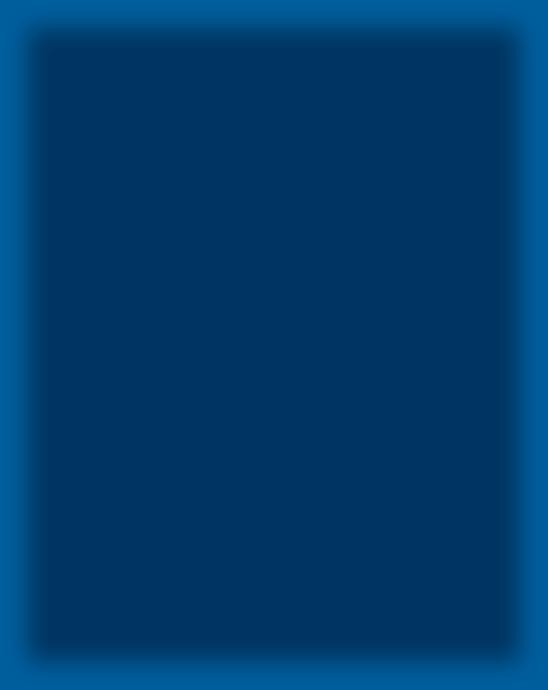
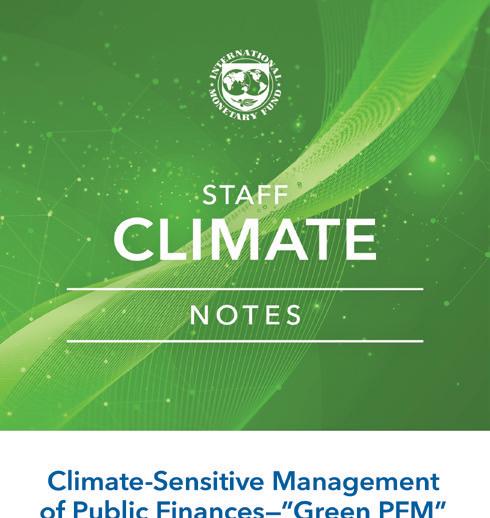


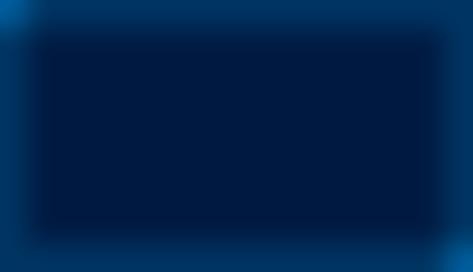
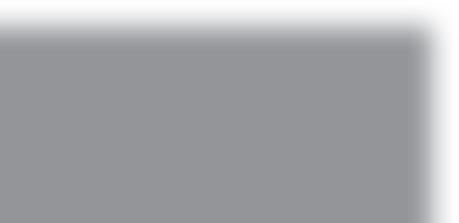

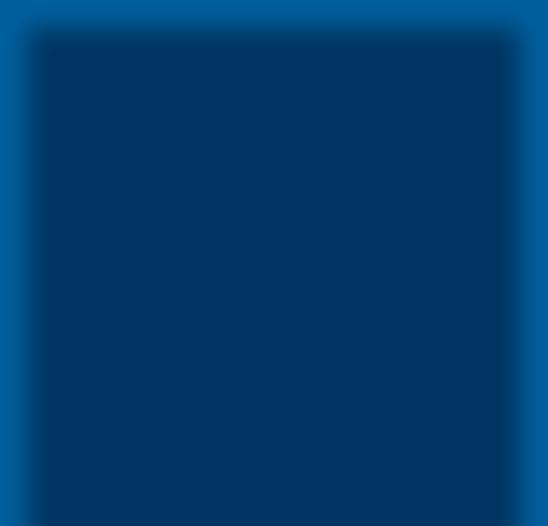
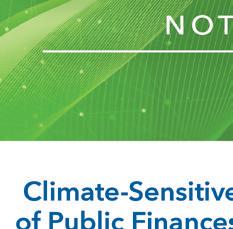
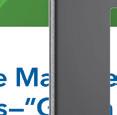
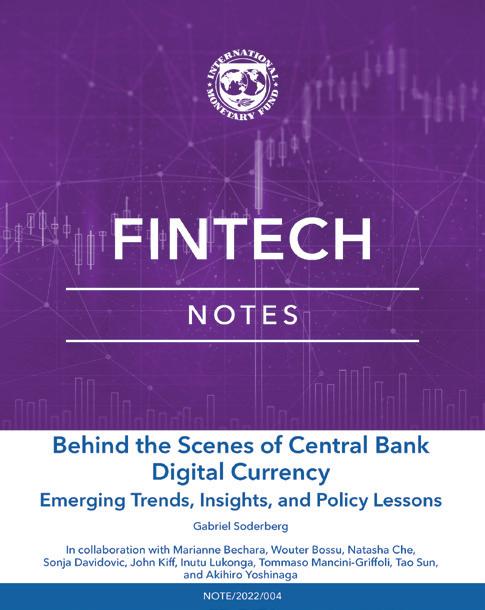
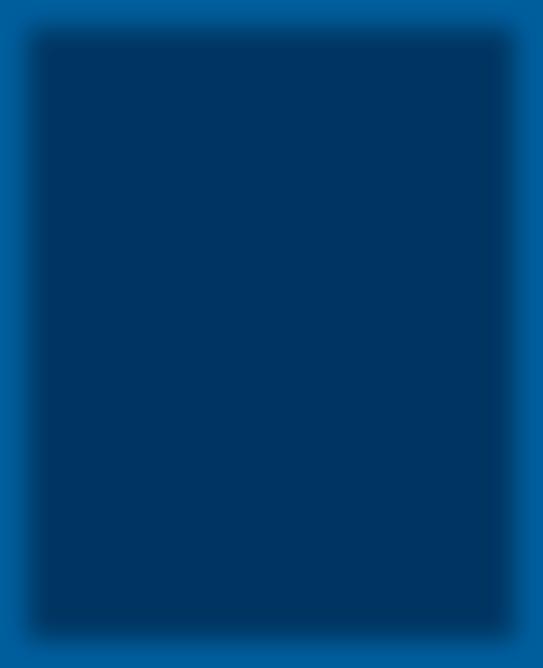
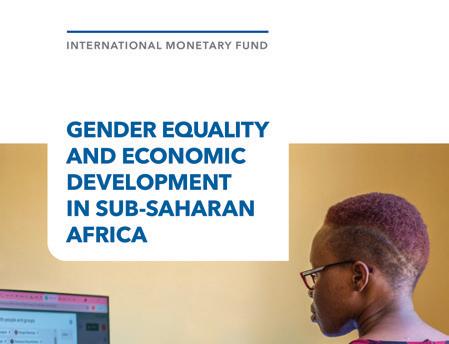
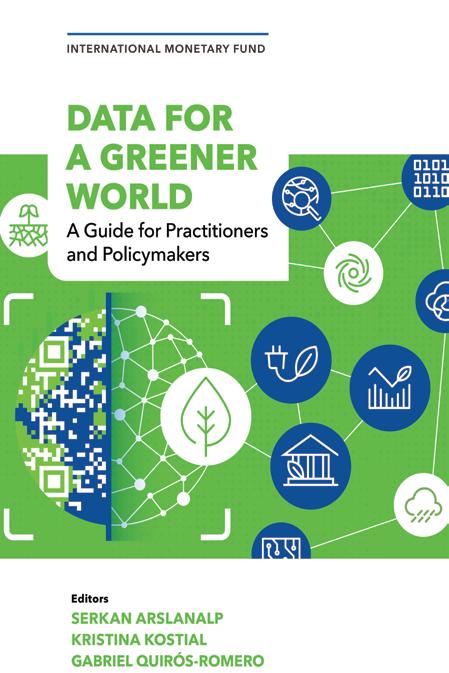

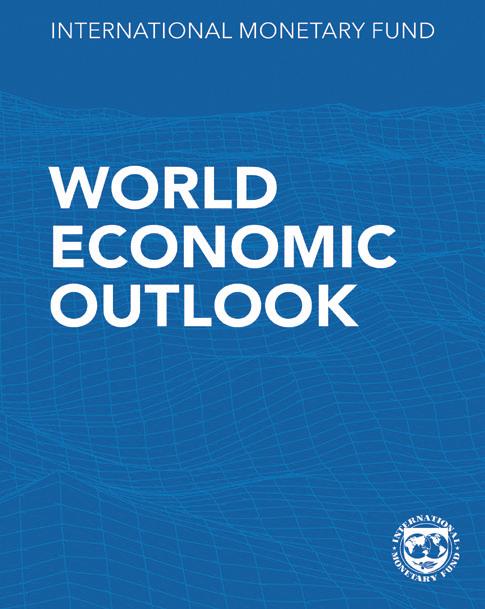


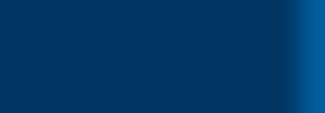

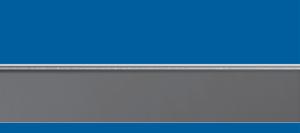







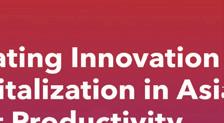
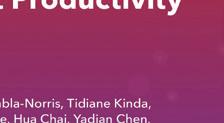
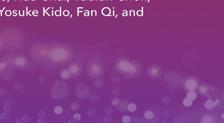
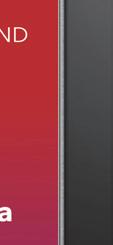





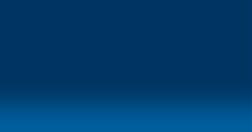

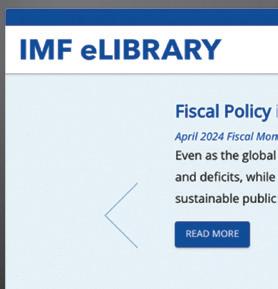
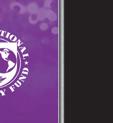

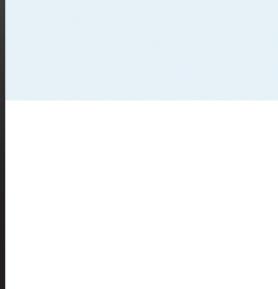

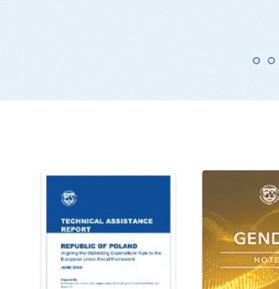
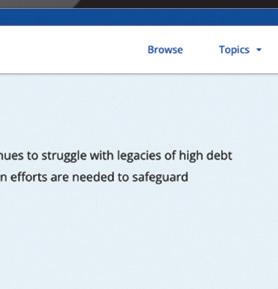
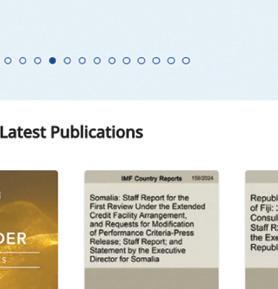



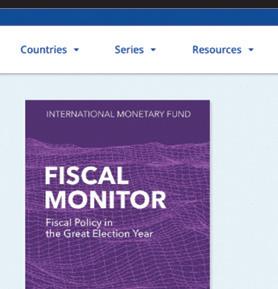

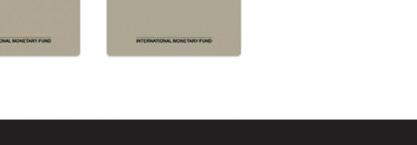



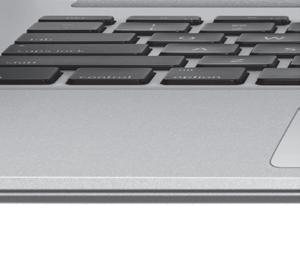




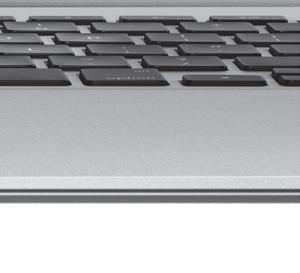
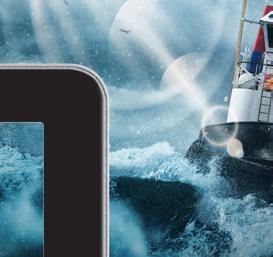


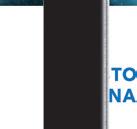


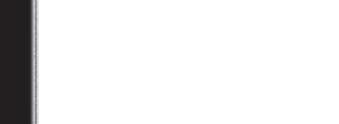
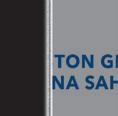

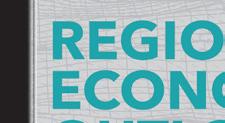
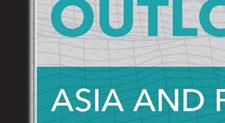

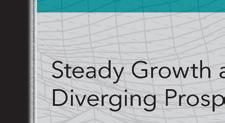
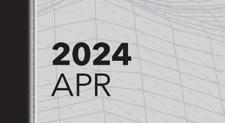

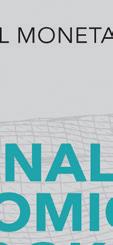
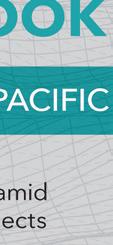


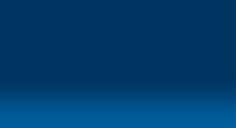
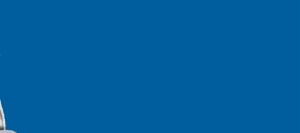





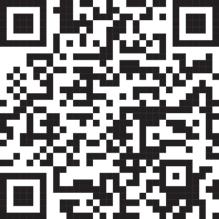
The repeal of the British newspaper tax in 1855, growing literacy, and an Industrial Revolution middle class led to a boom in magazines and newspapers. Short stories and serializations were widely devoured. The ghost tale was ideal for this.
Interest peaked in the winter with magazine Christmas numbers. Dickens wrote few of these stories although his Christmas Carol is famous. But he was editor of several magazines and published work by Sheridan LeFanu and RS Hawker.
MR James, provost of Eton, was probably the best of them all. Robert Lloyd Parry of www.nunkie.co.uk argues for Arthur Machen.
Check out nunkie for Ghost Writers on the Cam.
And here, some of the best:
Henry James, The Turn of the Screw (1908); Elizabeth Gaskell, The Old Nurse’s Story (1852); Sheridan LeFanu, In A Glass Darkly (1872); Charles Dickens, The Signal-Man (1866) (Tale of an apparition in a railway tunnel. Dickens was inspired by being in the Staplehurst boat train accident); MR James, Canon Alberic’s Scrap-Book; The Mezzotint; Oh, Whistle, And I’ll Come To You, My Lad (1910) (all in James’ first collection, Ghost Stories of an Antiquary); MR James, A Warning To The Curious (1925).
See: Ettie Neil Gallacher, “Victorian ghost stories and the spirit of change,” The Field, Jan. 2019, p.91.
(1) Peter Watson and Cecilia Todeschini, The Medici Conspiracy (2006) (Giacomo Medici’s international art smuggling ring ran from 1960-2005 when he was finally jailed. He was found with meticulous records and loot from 50 significant tombs.); (2) Michael Finkel, The Art Thief (2023) (French waiter living with his mother who stole $2 billion in art treasures using nothing more than Swiss Army knife); (3) Robert K. Wittman with John Shiffman, Priceless (2010) (Wittman created the FBI Art Crime Team.); (4) Michael Blanding, The Map Thief (2014) (100 maps pilfered from the great libraries of the world); (5) Stephen Kurkjian, Master Thieves (2015) (biggest art theft in history is still an open case. $500 million from Isabella Stewart Gardner Museum.).
See: John Barelli, “Five Best,” The Wall Street Journal, July 13-14, 2024, p.C8. (John Barelli and Zachary Schisgal are authors of Stealing the Show: A History of Art and Crime in Six Thefts.)
<https://www.charleston-hub.com/media/atg/>
Explore 120 years of groundbreaking research with The Physics Archive—granting your institution perpetual access to discipline-shaping research charting every theory, application, and advancement, on any device, forever.
AN EXTENSIVE COLLECTION: Access over 120 years of groundbreaking physics research, spanning a wide range of topics and sub-disciplines.
PERPETUAL ACCESS: With a one-time purchase, your institution can secure perpetual access to The Physics Archive, ensuring continuous availability of valuable resources.
NO DRM RESTRICTIONS: Unlock researchers’ needs with industry-leading permissive contract language and user permissions. No digital rights management.
TRUE ONE-TIME PURCHASE: Enjoy the simplicity of a true one-time purchase with no annual or maintenance fees, providing your institution with uninterrupted access without recurring costs.
UNLIMITED USE FOR UNLIMITED USERS: Benefit from unlimited access for an unlimited number of users, allowing researchers, students, and faculty to explore the archive from anywhere.
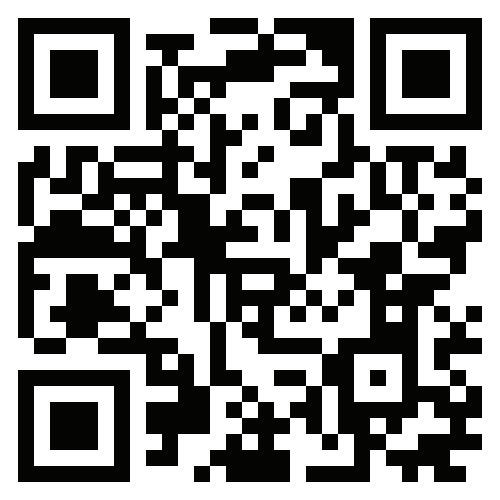
By Heather Staines (Director of Community Engagement and Senior Consultant, Delta Think) <heather.staines@deltathink.com>
The scholarly communications community gathered in September in Manchester, UK, for the ALPSP Annual Conference to discuss issues of broad concern from the future of Open Access, Artificial Intelligence, and Sustainability, to Research Integrity. This meeting traditionally kicks off the fall (in the Northern hemisphere) travel sprint that leads up to the OASPA meeting, the Frankfurt Bookfair, and ultimately the Charleston Library Conference. (I sometimes joke that, during this period, I see colleagues more than I see my family.) This was the third year that the organizers had selected Manchester to host, and the historic city doesn’t disappoint, despite some overcast skies and cooler temperatures. (The venue is a brief walk from the ruins of a Roman fort, the Mamucium, and the marvelous round Portico Library, built between 1802-1806.)
Keynote speaker Jake Okechukwu Effoduh, Assistant Professor at Lincoln Alexander School of Law, Toronto Metropolitan University, set the tone with his talk: Scholarly Publishing in the Era of Open Access and Generative AI, touching on the tensions of open access initiatives in “democratizing access to scholarly content.” As an academic and researcher from the “global south,” Professor Effoduh spoke not just of barriers to accessing research but also of how to promote accessibility to content. In reflecting upon his research journey, he spoke passionately about receiving his first new book as a child and how ownership of that book changed his mindset. He encouraged ALPSP members to collaborate to shape the future of publishing and to pursue innovation. We were fortunate that he was able to stay and participate fully in the whole conference
An annual highlight is the culmination of the ALPSP’s Impact and Innovation Awards program. After submission and preliminary presentations over the summer, finalists present on the opening day of the meeting, and winners are announced during dinner on the second evening. This year, the Impact Award winner was JSTOR Access in Prison Initiative, which provides academic journals and scholarly resources to the estimated 10.3 million people who are incarcerated globally. The testimonials included in the presentation were both heartbreaking and inspiring. A runner up, The Forest of Biologisits was Highly Commended for their focus on biodiversity. For each article published, and each peer review completed, a tree is planted in the real world with a corresponding virtual forest that anyone can explore.
With wide-ranging alarm about research integrity dominating many conversations, it came as no surprise that the 2024 Innovations award went to The Papermill Alarm by Clear Skies which works to detect fraud before peer review using novel AI Language Models to screen submissions at scale. In addition to these higher profile awards, five early career professionals received the Rising Star Awards — a brand new offering, and industry great David Worlock was honored with the ALPSP Award for Contribution in Scholarly Publishing for his decades-long work preparing publishers for the digital age.

Edu-tainment (education plus entertainment) in the form of a musical was on offer with The Eras Tour: A Scholarly Communications Tour Through Time by yours truly and four enthusiastic players, Jude Perera (Wiley), Romy Beard (Chronoshub), Ravi Venkataramani (Kriyadocs), and Heather Kotula (Access Innovations). As part of a time travel dissertation project, the audience is taken on a journey, first to the year 1610 to learn about the early dissemination of print books, to 2007 when format proliferation of eBooks was rampant, and into the future to see how humans and AIs will work together in the library. (Spoiler: The librarians are the keepers of time travel!) You can read a witty review in the Scholarly Kitchen by Charlie Rapple. (An entirely different musical, also with a time travel bent, will be presented in Charleston during the breakfast time on Friday November 15, so plan ahead!)
Day two of the event began with a timely topic of interest to libraries: Three Months to Go: Are we ready for OA? With the cOAlition S deadline for a shift to OA looming, where are we with transforming journal content? Framed with some numbers gathered by Jisc (Helen Dobson), speakers, including Ben Ashcroft (De Gruyter Brill), Chris Bennett (CUP), and Gaynor Redvers-Mutton (The Biochemical Society), looked into the varying degree of success of transitional agreements, how publishers have navigated the shift, and the overall impact that the funder deadline has had on publication strategies.
Next up, I stuck with the topic of OA, attending a breakout session on the Value of Open Access Books , which focused on maximizing the impact and increasing the reach of such publications with short presentations by Kate Silvester (CUP), James Watson (Taylor and Francis), and Joe Deville (Open Book Collective / Lancaster University). It was wonderful to have a session on books, as sometimes publishing conferences focus exclusively on the journal landscape. A concurrent program India Rising: How Society Publishers can Prepare for the Coming Surge in Quality Submissions created significant attendee buzz around the growth of publishing in India, including challenges and opportunities. I look forward to going back and watching the recorded session.
With my long-running personal interest in exploring new modes of publication, I then attended Deconstructing Journals: Reinventing Research Communication with updates from the Coko Foundation’s collaboration with UC Gump South Pacific Research Station, University of California Berkeley; eLife’s update on Review, Publish, Curate; and the Chief Strategy Officer of WACREN (the West and Central African Research and Education Network). Stephen Pinfield from the University of Sheffield also contributed from his deep interest in this topic. Attendees considered whether we will ever break out of more traditional publishing models to explore other options.
<https://www.charleston-hub.com/media/atg/>
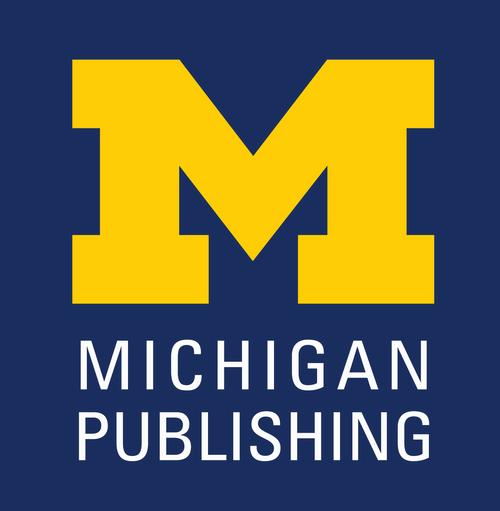
Your support extends beyond individual collections to open access infrastructure. Check out these distributed presses who host their content on Fulcrum, a leading opensource platform for media-rich digital publications, developed by the University of Michigan Library.


Lever Press
Lever Press offers a collective solution to open access book publishing. With the participation of more than 50 academic institutions and publishing support from Michigan Publishing, Lever Press produces peer-reviewed, openaccess monographs at no cost to authors or their academic institutions.
leverpress.org
These distributed publishers are fully accessible on Fulcrum. The Fulcrum platform places a strong emphasis on durability, accessibility, flexibility, discoverability, and integrity.
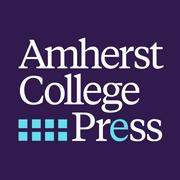
Amherst College Press produces pathbreaking, peer-reviewed scholarship and makes it available to readers everywhere as digital, open-access work and affordable paperback books. As a diamond/platinum open-access press, they charge no fees to authors, their institutions, or readers.
acpress.amherst.edu

Aberdeen University Press
Aberdeen University Press publishes a range of high-quality peer-reviewed journals, book series and stand-alone monographs. They aim to be a Diamond Open Access publisher, with no charges to authors for publication or to readers for accessing their titles.
aberdeenunipress.org

Visit the distributed publisher sites above or go to fulcrum org to learn more about how your library can support open access infrastructure through Michigan Publishing.
Another highlight of the gathering is the annual quiz. Attendees strategically line up tablemates leading up to the Awards dinner, hoping to create an international, intergenerational powerhouse team that will take the top prize. Topics this year included music, science, and a “table round” on global literature. Teams compete hoping to avoid last place which wins the “Wooden Spoon Award,” and the outcome is always close. I’ve only ever been on one winning team, and this year did not add to that total. Oh well, there’s always next time!
Wherever you go these days, you encounter sessions on Artificial Intelligence, so I was particularly interested in The Role of Human Editors in an AI World. With authors and researchers already using a variety of AI tools, editors find themselves having to counter with tools of their own to ensure the integrity of the scholarly communications record. In a session moderated by Journalology’s James Butcher, speakers included Jessamy Bagenal (The Lancet), Emily Chenette (PLOS One), Ian Mulvany (BMJ). (Also in this same time slot was a session about the impact of AI on workforce development, so I’ll need to go back to watch the video of this one, too!)

present, and future, and librarians are often finding themselves in a communication and educational role. The development of these products and tools is introducing more complexity into library contracts as well.
Another AI-related topic — licensing of content to AI tools — rounded out the afternoon. Libraries have a vested interest in this area as well, as they increasingly find AI presented as both a feature of their existing tools and also as stand alone products. Publisher licensing efforts also impact researchers who need to have an awareness of what is being done with their works, past,
The conference concluded, as is traditional, with an industry leaders panel with Lauren Kane (BioOne), Tim Britton (T&F), Sven Fund (Reviewer Credits), Wendy Queen (Project MUSE), and our returning keynote speaker Jake Okechukwu Effoduh (Toronto Metropolitan University). The lively roundtable format enabled attendees to raise discussions about topics covered throughout the meeting, generating, as always, more questions than answers and ensuring that the debate will continue next year — also scheduled for Manchester, UK. So note this on your travel calendars!
<https://www.charleston-hub.com/media/atg/>

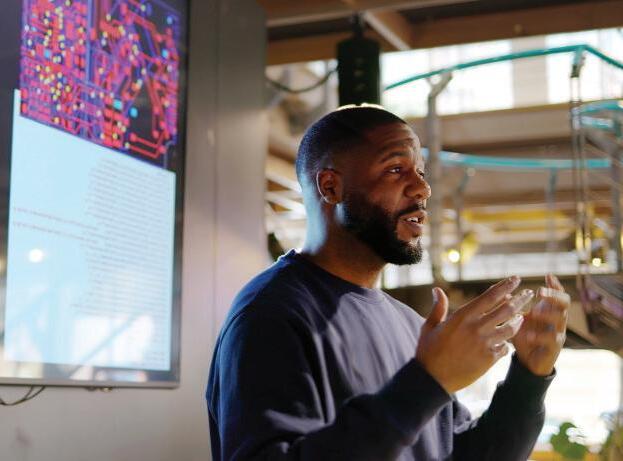



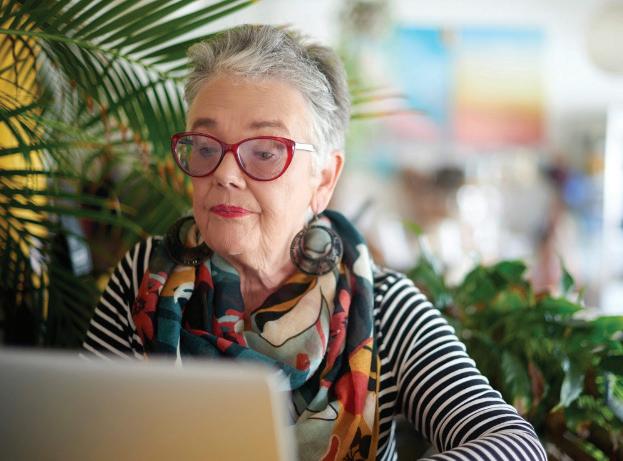

By Joanna Ball (Managing Director, DOAJ) <joanna@doaj.org>
Miradouros, or viewpoints, are an important feature of the hilly city of Lisbon. They offer breathtaking panoramic views taking in the city’s unique blend of history, culture, and natural beauty. Each miradouro has its own distinct character, often surrounded by gardens, cafés, and street art, creating spaces for relaxation and reflection. Many of them are not only tourist attractions but also function as community hubs, where locals come to socialise, enjoy music, or simply enjoy the sunset.
The exact number of miradouros to be found in Lisbon is debatable (8, 13, 30?). Taking a step back from the bustle of the city streets, they provide an opportunity to enjoy the iconic skyline from a different perspective, and to see the overall patterns that reflect the deeper historical and cultural sections of the city, including the castle of São Jorge, the grid-like city centre rebuilt after the disastrous earthquake in 1755 and the colourful rooftops of Alfama.
Libson also provided the setting for this year’s OASPA (Open Access Scholarly Publishing Association) conference in September. Held for the first time as an in-person conference since before the pandemic in Copenhagen in 2019, the event served as a series of miradouros for the open access landscape, providing an opportunity for discussion and reflection from different viewpoints.
The conference brought together 163 delegates from 132 organisations, just over half of whom had a publishing programme: publishers, librarians, service providers and researchers. Most came from Europe, but there was representation from other areas of the world, including North America, Latin America, Africa and India.

The conference opened with a powerful panel session from the vantage point of equity, presenting different perspectives from across the world and from infrastructures, researchers and publishers. The panel focused on themes of fairness, justice, and inclusion: how can we ensure that access to resources is equitable on a global scale? Durhane Wong-Rieger of the Canadian Organization for Rare Disorders drew on her experience from the patient community’s approach of “nothing about us without us” and challenged delegates to constantly ask themselves to identify who is missing from important discussions and to actively include them, thereby ensuring that diversity is reflected in our governance structures, decision-making and membership. Joy Owango of the Training Centre in Communication, University of Nairobi, provided the example of Tanzania’s new science and technology open access policy as a potential for local actions to inspire broader changes, and encouraged us to have uncomfortable conversations around equity with our communities.
The topic of equity in scholarly communications was a recurring theme throughout the three days, picked up by Reggie Raju in a compelling call for social justice and the philosophy of ubuntuism and communityism in publishing, based on collective responsibility, communal support and equitable access to knowledge creation and dissemination. Reggie argued that whereas many of the discussions around OA focus on the reallocation of funding, in Africa which is underfunded, the focus must be upon the principles and process of making meaningful change. Devika Madalli extended this in her keynote, with a call not for action but for disruption to how knowledge is published and distributed and to how we evaluate research.

Precarity within open access was also a theme, both at the institutional level for individual researchers and within the diamond business model. The precarious nature of diamond OA pointed to a broader trend of instability within the academic community. Focussing on open access books, Joe Deville from Mattering Press stressed the necessity of building networks and fostering collaborations to support a more sustainable publishing ecosystem, while Judith Fathallah from Coventry University highlighted the importance of including authors in the publishing process and collaborating with librarians to create a more inclusive environment. There was a call to inspire and empower more women in academia from Noni Dube, who gave the example of her network SWAN (Southern Women Academics
<https://www.charleston-hub.com/media/atg/>
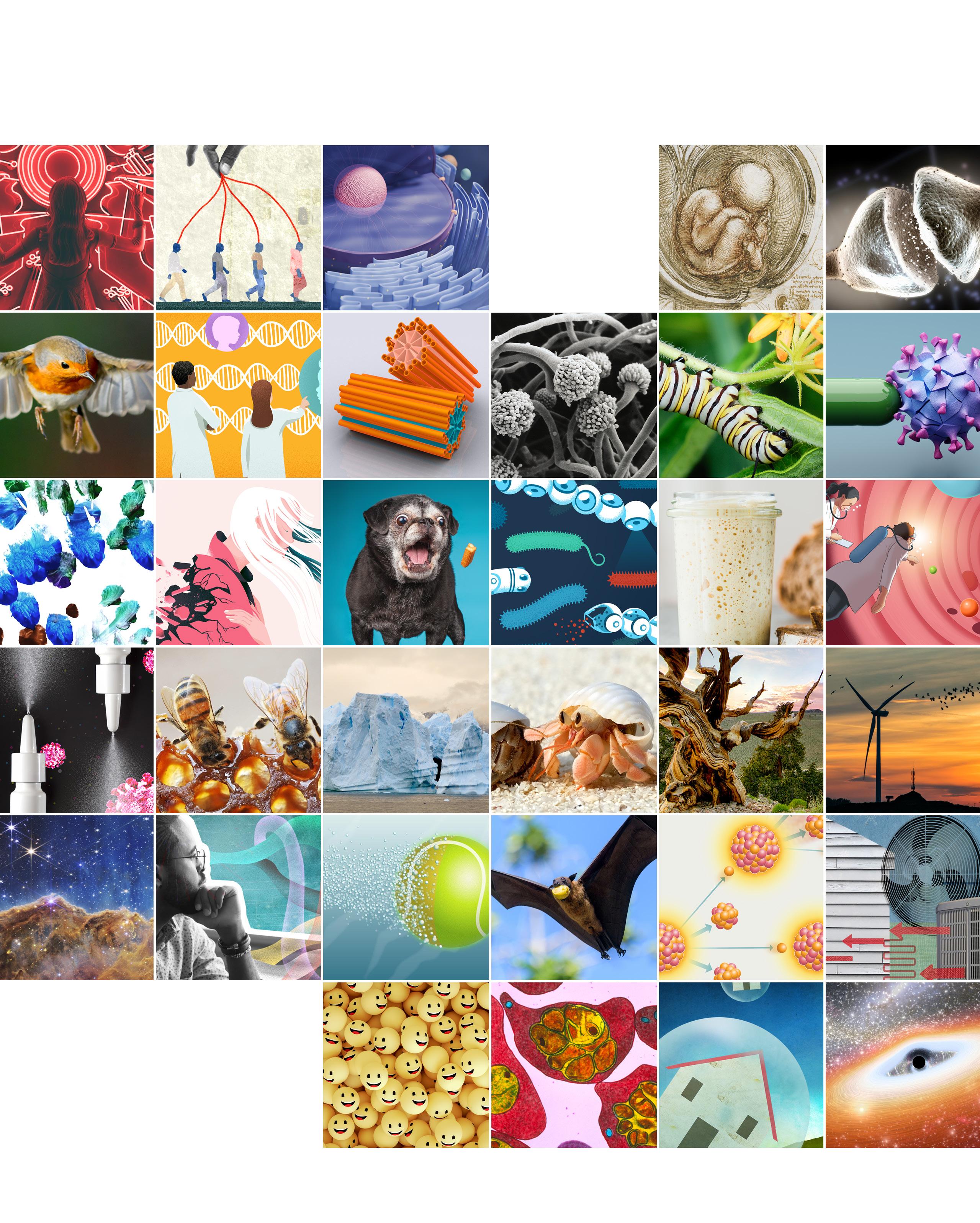
Network) which connects over 100 women of Global South origins to collaborate over bids, share experiences and challenges and co-mentor each other. Elsewhere, Catherine Mitchell (California Digital Library) highlighted the problem of institutional publishing being seen as a “labour of love,” and called for the community to be honest and open about the sustainability challenges of invisible labour. The technical challenges faced by institutional publishers were addressed in another panel, with an overwhelming response from the audience on the requirements for help with metadata, visibility and more.
Further panels featured discussions on assessing the real-world value and return on investment for open access publishing; tools, frameworks and recommended practices to reduce inequities in open access; ways to build trust and support research integrity; and also generative AI and how it intersects with openness and research integrity.
It was clear that delegates valued the return to an in-person edition of the OASPA conference, and made the most of the networking opportunities, including an evening reception in the nearby beautiful botanical gardens of Estufa Fria.
The keynotes from Rebecca Ross (Open Climate Campaign) and Maurice York (Big Ten Academic Alliance) epitomised the sense of hope and collaboration throughout the conference. OA is a prerequisite to solving the climate crisis. “What if the planet can’t wait for us to sort out our business model?” asked Rebecca, as she launched the Open Climate Campaign’s Unbinding project to open up access to climate science and biodiversity research articles. The presentation left a buzz of energy in the room, and several publishers reached out afterwards to request their lists of closed papers and to offer support. Maurice highlighted that our community shares the North Star of a just, trustworthy, scalable and sustainable open knowledge ecosystem, but that this will require new ways of thinking. He gave the example of the goal of cost-effectiveness for library consortia, traditionally measured by cost savings. If we are truly mission-led, our values and principles are just as, if not more, important but we don’t yet have the metrics to measure progress in equity, openness, justice and public good. The business models and ways of working together in

the future are still to be created and will require a paradigm shift in the approach of all members of the scholarly publishing community. He ended with a call for the OASPA community to come together to contribute our unique perspectives and expertise to find solutions: “only all of us know enough.”
Recordings of all sessions will be made available via the OASPA website.
<https://www.charleston-hub.com/media/atg/>
By Mary Beth Barilla (Director of Business Development and Communications, NISO) <mbarilla@niso.org>
The NISO Plus conference, now in its fifth year, was established to bring professionals from across the information community — representatives from libraries, publishers, service and technology providers, government agencies, and more — together to explore shared problems and brainstorm ways to address them. The first conference was held in person in February 2020, but in response to the Covid-19 pandemic, we shifted to a virtual meeting format for 2021–2023. Approaching 2024, the NISO team knew that many in our community were eager to return to onsite meetings, but we were also reluctant to give up the inclusivity that virtual meetings offer. As a result, we held two NISO Plus meetings this year: NISO Plus Baltimore, an event held in person last February, and NISO Plus Global/Online, hosted virtually on September 17–18.

which participants were encouraged not only to pose questions to presenters but also to engage in a broader discussion of opportunities for collaboration.
Session proposals for the meeting, reviewed and selected by the NISO Plus Planning Committee and the NISO team (including Assistant Program Manager Keondra Bailey and Director of Strategic Initiatives Jason Griffey), reflected the big issues and challenges on the minds of members of the information community. Three of these issues rose very quickly to the fore: open research (including open access), metadata, and AI in scholarly communications. The first, open research, remains an important topic as institutions and organizations work to make science more transparent, build trust in scholarly research, and ensure that research is accessible.

In keeping with NISO’s mission to develop standards that reflect the diversity of the global information community, including perspectives from outside the US is an important goal of NISO Plus Global/Online. The virtual conference format makes this goal more achievable, allowing attendees to participate without taking on the considerable time and expense often required for international travel. Representing 19 countries, roughly 20% of all attendees and 35% of speakers at the conference were from outside the U.S. To accommodate participants logging in from multiple time zones, we organized the meeting into two time slots, and recordings were made available to all attendees.
A second goal of the meeting, one shared by all NISO Plus events, is to generate ideas with the potential to become NISO initiatives or projects. (Our most recently published Recommended Practice, for the Communication of Retractions, Removals, and Expressions of Concern, originated in a conversation that took place at a NISO Plus conference.) Of course, we don’t require speakers or attendees to attend with a fully formed idea or proposal for a standard! Rather, we host conversations in which participants work together to identify common challenges or pain points and brainstorm potential solutions. To support these conversations, each session at NISO Plus Global/Online included an interactive portion in
The opening keynote speaker, Rachel Bruce, Head of Open Research at UK Research and Innovation (UKRI), set the tone for a meeting program focused on this topic. UKRI is the largest funder of research in the UK and Rachel’s talk, entitled Open research, incentivising change, and underpinning infrastructure: A UK perspective , presented the organization’s vision of a more transparent, collaborative, and trusted research culture. She outlined some of the efforts undertaken by UKRI and other organizations to develop better infrastructure to support open research and research integrity. She also highlighted the need for changes in how research is assessed and considered how to better incentivize researchers to adopt open research practices. One change recommended was the use of narrative CVs, which can “make the invisible visible” and encourage a more equitable assessment of a researcher’s skills and qualifications.
Several panel presentations also addressed issues related to open research, from PIDs and open data to open access (OA). Two sessions focused specifically on OA. Evolving Library Practice toward the Sustainability of Open Access featured a panel of librarians with extensive experience supporting OA in their respective institutions — Miranda Bennett (California Digital Library), Matthew Goddard (Iowa State University), Joshua Shelly (University of Potsdam), and Maureen Walsh (The Ohio State University). Together they explored the challenges involved in implementing and managing multiple, complex transformative agreement models and the need for more standardized workflows to address these challenges. In a lively discussion entitled The Virtuous Cycle, a panel representing publishers, libraries, and research institutions — Wendy Hesford (The Ohio State University), Lily Bergh (University of Toronto Press), Peter Potter (Paradigm Publishing Services/De Gruyter),
<https://www.charleston-hub.com/media/atg/>
David Prosser (Research Libraries UK), and Karin Wulf (Brown University) — shared perspectives on the sustainability of OA, particularly OA monographs, in the humanities and social sciences.
Metadata, so critical to the flow of information in scholarly communications, is a perennial topic of interest at NISO meetings, and NISO Plus Global/Online was no exception. Heather Campbell (Iowa State University), Harriet Wintermute (University of Nebraska at Lincoln), and Harrison Inefuku (Iowa State University) presented highlights from the recently published DEIA Metadata Handbook (https://doi.org/10.31274/ isudp.2024.153), a reference for metadata creators developed by librarians and published by the Iowa State University Digital Press. This informative session offered many practical tips and advice on revising existing metadata to be more inclusive as well as creating new metadata that is informed by DEI principles. Other metadata-focused sessions in the program addressed persistent identifiers (PIDs). Although PIDs play an essential role in supporting open research, several presentations weighed in on some of the challenges to adopting them in countries outside of the Global North. For example, Joy Owango, Executive Director of the Training Centre in Communication (TCC-Africa), described the difficulty of making research conducted in Africa more visible. Investing in research infrastructure can be prohibitively expensive for some institutions, and existing identifier systems are inadequate for the purpose of protecting and preserving Indigenous knowledge and cultural heritage. In response, the African PID Alliance has developed their own unique, multilinear approach to these challenges and are working to develop a Digital Object Container Identifier (DOCiDTM) that better supports research data and outputs across the entire life cycle of research conducted in Africa.
while practicing their prompt engineering skills, and it generated some creative (and humorous) results.
The end of the conference returned to the topic of open research with an inspiring closing keynote, “How journals can survive and thrive in an age of innovation and disruption,” from Dr. Ginny Barbour, Editor in Chief of the Medical Journal of Australia and Adjunct Professor at Queensland University of Technology. Suggesting that, in addition to their traditional purposes of dissemination and discussion, journals should make advocacy part of their mission, Ginny offered six observations to keep in mind when considering how journals can remain relevant in a rapidly changing environment. She also gave several compelling examples of how journals have acted as a force for social good, including the MAJ’s work to support Indigenous health researchers in Australia. The talk was a great reminder that journals still have the power and influence to effect real social change, and that leaning into that role could contribute to their longevity.
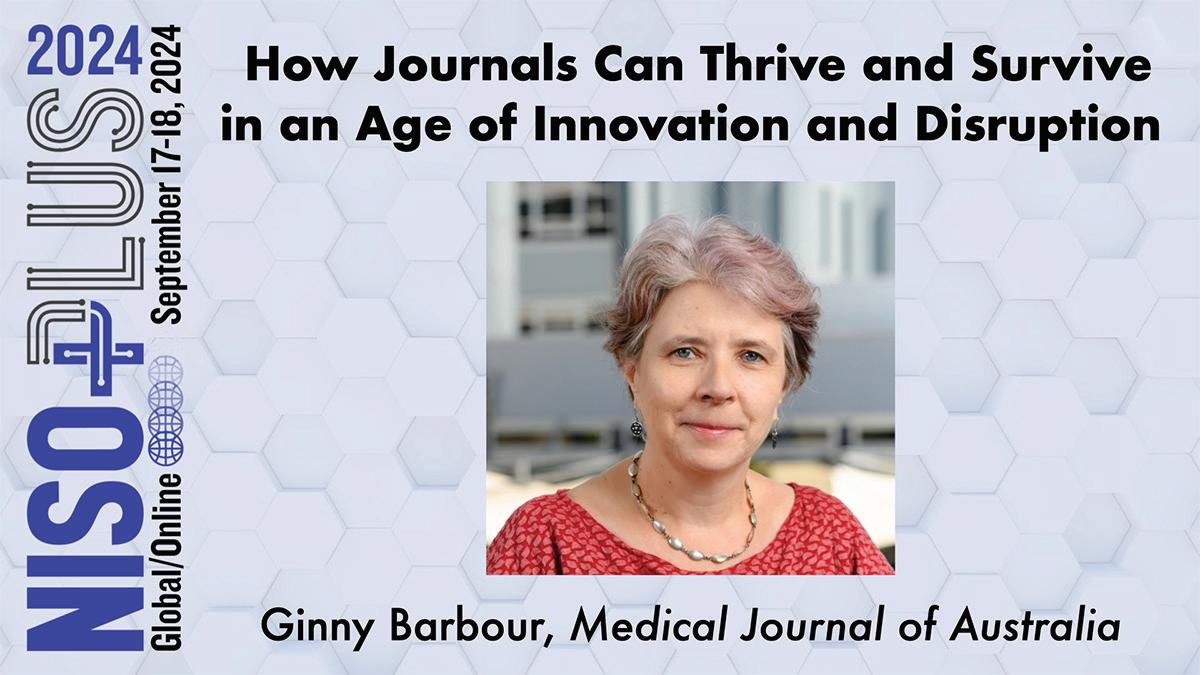
Finally, what would a conference in scholarly communications be in 2024 without sessions focused on AI? Our community continues to explore the potential of emerging AI technologies while grappling with their ethical implications. Jay Holloway (OCLC), Ken Varnum (University of Michigan), and Julie Zhu (IEEE) discussed the impact of AI on library discovery services. In “Exploring Emerging Technologies in Archiving and Preservation,” Aaron Pahl (University of Alabama at Birmingham) shared how he uses generative AI in his work as well as how he navigates some of the ethical questions and pitfalls that can arise from using this technology for research. And the conference social event, a team-based activity, was a contest to see who could develop the best illustration capturing the spirit of NISO Plus using text-to-image AI technology. Emceed by Melroy Almeida of the Australian Access Federation, the activity was a fun way for people to meet other attendees
It’s impossible to do justice to the entire conference in one article. Rebecca Lawrence (F1000), Blaine Butler (Center for Open Science), and Kathryn Funk (National Center for Biotechnology Information) presented an idea for trust markers for research that would help readers, including those among the general public, better assess the quality of published research and avoid misinformation. The Data Conversion Laboratory’s David Turner took a creative approach to highlighting the importance of metadata and XML tags in supporting research integrity, examining the topic through the lens of the Spielberg film Catch Me If You Can (2002). And of course there were several sessions covering NISO standards, including an introduction to the information standards process as well as updates from Working Group members on current standards projects like Open Access Business Processes and Accessibility Remediation Metadata. NISO is grateful to the speakers and volunteers who gave freely of their time and expertise in producing the meeting content, as well as to all the attendees, who contributed to the many discussions and helped to generate new ideas. We are looking forward to sharing outputs from the discussions with NISO’s Topic Committees, who will review them with an eye for possible future projects.
If you weren’t able to join us in September, recordings of the keynotes from Rachel Bruce and Ginny Barbour are now open and available in our online video library (https://niso.cadmoremedia. com/). In the meantime, another opportunity to experience NISO Plus is coming soon! Consider joining us for the next series of conversations, to be hosted in person February 10–12 at the Baltimore Marriott Waterfront. Registration is open — check out our website at https://niso.plus/ to learn more!
<https://www.charleston-hub.com/media/atg/>
Renew your INFORMS operations research, management science, analytics, and mathematics subscriptions for 2025. INFORMS titles cover important discoveries that meet the needs and interests of researchers, practitioners, students, and business leaders.
There is still time to renew your subscription access for the remainder of 2024.
Subscribe and save on all 17 INFORMS journals and save over $4,200 on the entire INFORMS PubsOnline Suite.
DID YOU KNO W…
97 % of the 100 Best MBA Business Schools, according to the Financial Times 2023 Ranking, subscribe to INFORMS journals?
88 %
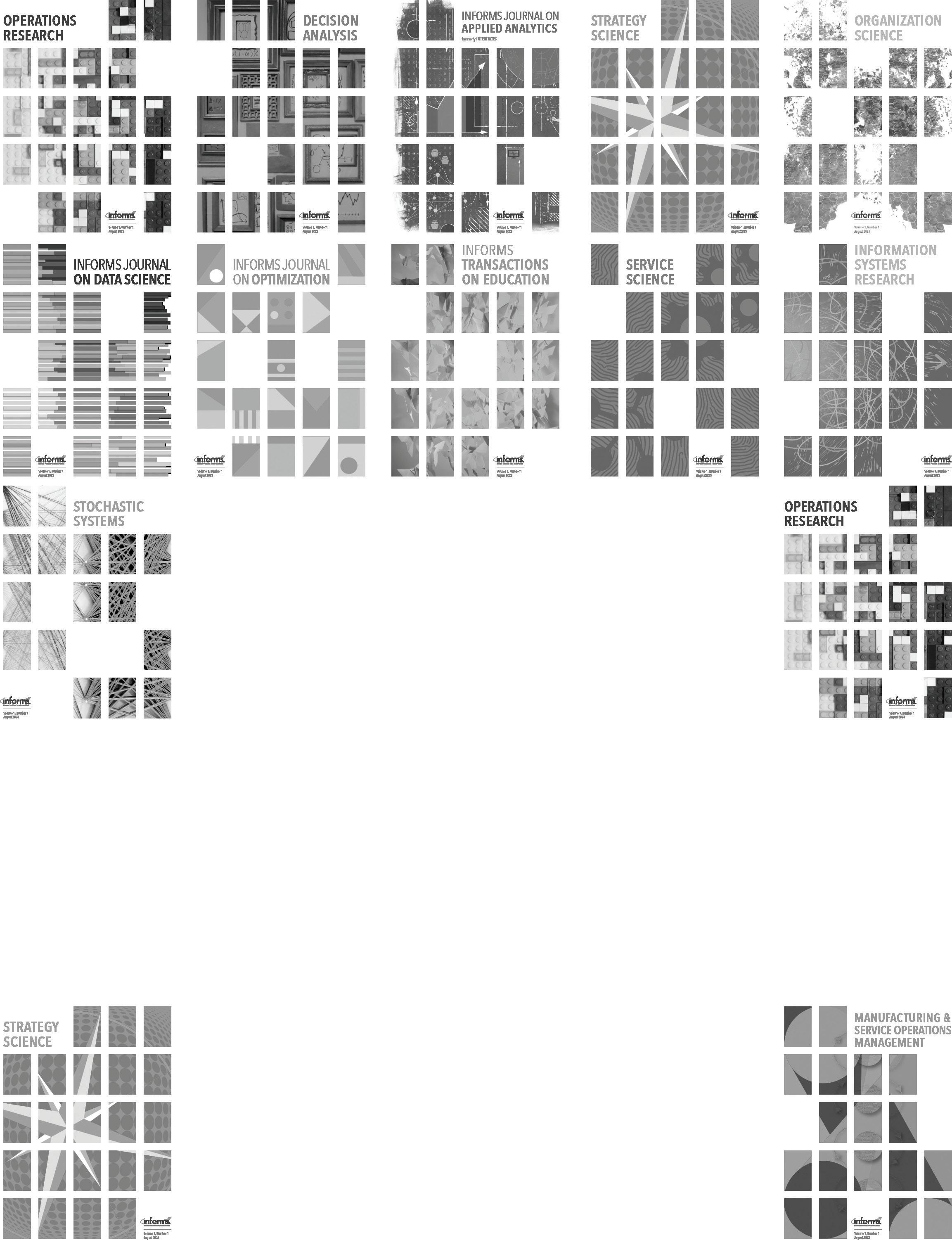
o f t he To p 100 Global En g i n eeri n g Sc h ool s, a cc o rding t o U.S . New s & World Re p or t 2023 - 2024 Ra n ki n g, h a v e INFORMS journ a ls in t h e ir c o l l ect ions ?
ww w. informs.o r g /su b scription s
By Janaynne Carvalho do Amaral (Postdoctoral Research Associate, University of Illinois at Urbana-Champaign) <jamaral@illinois.edu>
and Lettie Conrad (Product Experience Architect, LibLynx) <lettieconrad@gmail.com>
Almost 200 speakers and attendees gathered online and in person at the AGU Conference Center in Washington, DC, on October 1 & 2, 2024 to explore New Directions in Scholarly Publishing. As SSP’s annual fall seminar, hosted in a hybrid format, this year’s event looked beyond future trends and abstract projections, focusing on practical solutions for current challenges facing publishers, libraries, researchers, professors, and funders, such as the use of AI in the workplace, research, publishing, and teaching, transparency in research, challenges to build partnerships, technologies in scientific publishing, library led-initiatives, and more. The goal was to generate actionable insights and practical ideas we can use in our everyday work to address the realities of the next <5 years.
The seminar kicked off with a keynote address by Michele Avissar-Whiting, Director of Open Science Strategy at HHMI, who outlined emerging traits in scholarly publishing. Michele shared her observations of benefits found in post-publication peer review and curation — a model she believes is best suited to revolutionize scholarly communication and empower researchers to disseminate their work more quickly and establish a public peer-review record. She painted a picture of a “new world of research communication,” which “allows scientists to showcase not just static representations of their findings but the full richness of their work.”
Unsurprisingly, AI (artificial intelligence) was a topic of discussion in panel topics ranging from Adapting Your Workforce to New Paradigms in the Shift to Publishing-as-a-Service. Speakers and attendees engaged in vigorous conversations about responsible uses of AI, including information ethics (e.g., keeping human biases out of training models) and environmental impacts (e.g., the energy and water consumption required for high-volume data centers). There were hearty debates about the relative hopes and fears of potential solutions to improve repetitive or pattern-detection tasks where humans do not excel, while not undermining the unique value of editors and their instincts, common sense, and value-based judgments.
One of the most popular activities was an interactive session called Reverse Roundtables, where expert moderators circulated topics for discussion within the seminar room and Zoom room.

Attendees and speakers enjoyed the opportunity to engage in small-group conversations about the seminar’s focus on new paradigms of research communication and adapting to new demands from authors, editors, reviewers, and other stakeholders. It was such a hit, the organizers are considering an extended roundtable session for the 2025 seminar.
Day 2 began with a panel discussion about Changing Research Landscapes where Dr. Anna Hatch, Program Officer at Open Science Strategy at HHMI, discussed shifting research assessment to quality over journal prestige, citing DORA and CoARA as solutions. Dr. Maurice Johnson, a Social Scientist at the FDA, highlighted AI’s transformative role as well as data-sharing challenges, researcher recognition, and valuing reproducibility and null results. Jennifer Kemp of Stratos emphasized the expanding scholarly publishing community, with preprints and open-access models enabling greater integration of research outputs. Jenny Peng of OUP addressed diverse publisher partnerships and challenges in the research ecosystem, including geopolitical tensions, the publish-or-perish culture, and journal brand trust. Together, they underscored the need for transparency, collaboration, and a broader view of research impact and value.
The seminar concluded with a lively dialogue among scholars at diverse career stages sharing their first-hand experiences with publishing their research. The two doctoral students spoke of their program requirements for participation in both authorship and peer review, as well as what guidance they have received regarding the use of AI and other ethical considerations. The more seasoned scholars discussed challenges with securing timely expert reviews and were eager to hear suggested solutions from publishers in the audience. All panelists were interested in greater support from publishers when it comes to marketing their work and assessing the usage and impact of that work.
The New Directions program demonstrates that the background of the invited speakers was as diverse as the audience of the seminar. The seminar considered not only giving voice and listening to the perspectives of all scholarly communication stakeholders but included industry professionals and academic professionals at different career stages. In this sense, the seminar was a great opportunity for the exchange of expertise and experiences among different players of scholarly communications to solve common problems that we are better able to address together.

The organizers hope to continue fostering dialogue and encouraging cooperation and partnerships among
<https://www.charleston-hub.com/media/atg/>
Support your researchers and institution with OA publishing
• Predictable and sustainable budgeting through various institutional plans, allowing for better financial planning.
• Improve your time-management capabilities with reduced administrative complexity and enhanced workflows.
• Simplify the publishing process by removing funding barriers for your research.
The Frontiers Institutional Partnerships program works with hundreds of research institutions, libraries, consortia, and funders to streamline the way in which researchers are supported when publishing open access.
Find out more by scanning the QR code | frontiersin.org
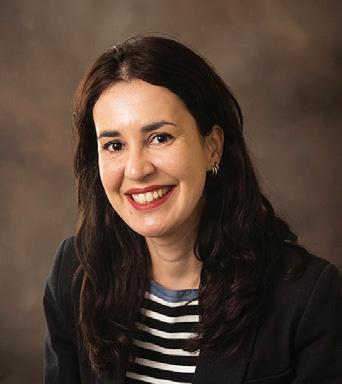
Janaynne Carvalho do Amaral
Postdoctoral Research Associate
PhD, Information Science, Federal University of Rio de Janeiro/Brazilian Institute of Information in Science and Technology, Rio de Janeiro, Brazil
MAnth, Social Anthropology, Federal University of Goias, Goiás, Brazil University of Illinois at Urbana-Champaign https://ischool.illinois.edu/people/janaynne-carvalho-do-amaral
scholarly communication stakeholders, in particular early career researchers, from undergraduate to post-graduate students. New Directions is a hybrid seminar, increasing its affordability and accessibility to students, researchers, librarians, publishers, and other communities in and outside the U.S. Organizers were attentive to online attendees by sending instructions on how to join the lobby on Zoom and sending simple tips for a better online experience, such as putting a sign on your office door to
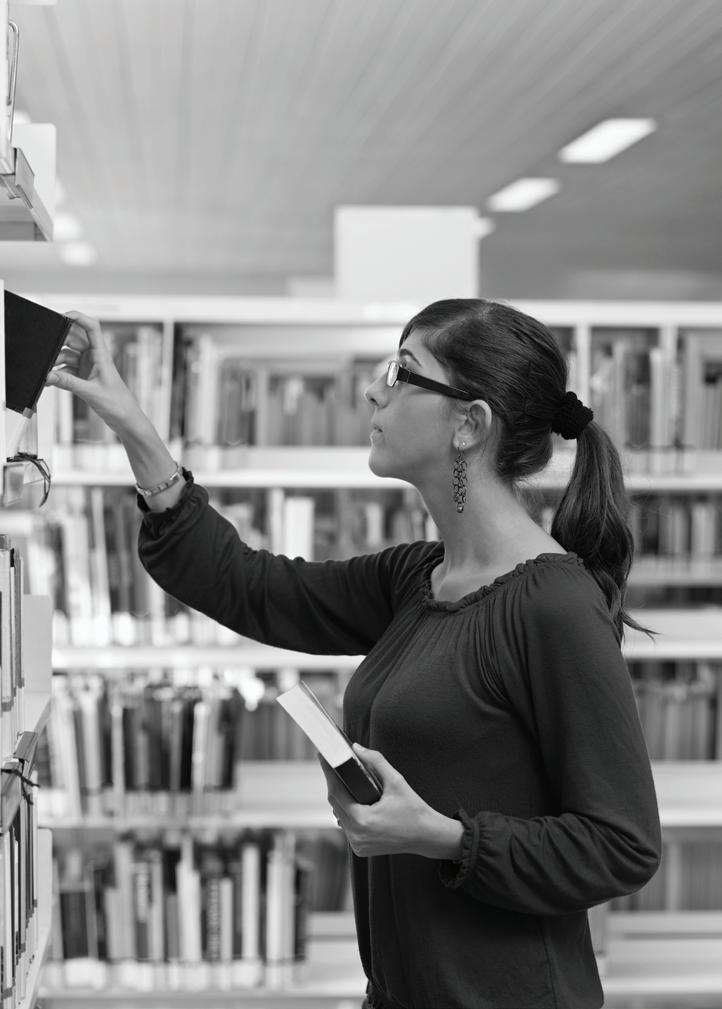
For more information about our partnerships please contact us at institutions@frontiersin.org
allow uninterrupted time for online attendance. Some speakers were also able to present remotely, bringing in new voices and perspectives; virtual moderators also increased the positive online experience.
While hybrid events are a challenge, New Directions aims to bridge gaps across our community’s leading conferences, allowing for deeper discussion and collaboration across constituencies. We hope to see you at a future seminar, either online or in DC, as SSP invites your contributions to the 2025 seminar and beyond!
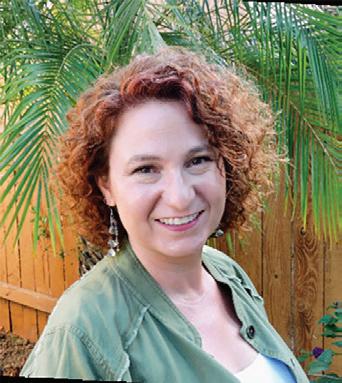
Lettie Y. Conrad, PhD
Product Experience Architect, LibLynx
Senior Consultant, DeepDyve
Instructional faculty, School of Information, SJSU
Chef in The Scholarly Kitchen
LinkedIn • Read more via ORCID
<https://www.charleston-hub.com/media/atg/>
By Leah Hinds (Executive Director, Charleston Hub) <leah@charlestonlibraryconference.com>
The 76th Frankfurter Buchmesse, the largest book fair in the world, will take place October 16-20, 2024. I’m personally looking forward to attending and to all the meetings and events taking place there!
The guest of honor this year is Italy, and their motto is “Roots in the Future.” The Guest of Honor programming will include a diverse range of authors, including many emerging voices, and more than 150 new publications have been translated into German from Italian. Detailed schedule info and more information can be found at https://www.buchmesse.de/en/ highlights/guest-honour
Scholarly Publishing.”
AI has been a key topic at every publishing conference since the beginning of 2023 at the latest. Numerous publishers and service providers are experimenting with its application in various areas, whether to reduce costs or more often to increase sales. The panel will use examples from differently structured publishing houses to show which solutions industry participants are working on and how they are applying the different, rapidly developing forms of artificial intelligence in practice. Panel members have been selected from a cohort of participants at a hackathon that took place at ALPSP on September 10.


The Charleston Conference is presenting a micro academic conference event on Friday, October 18, as part of the Publishing Perspectives Forum. The event will be held on the Hall 4.0 Academic Stage and is free and open to all book fair attendees. Please make plans to join us! The day will begin with a networking breakfast at 9:30 am, offering attendees the chance to connect with peers and industry leaders in an informal setting. This is an excellent opportunity to foster new relationships and exchange ideas before the start of the formal sessions. The presentations will launch at 10:00 am with a panel moderated by Sven Fund, Managing Director of Reviewer Credits, called “Putting Theory to Practice: The Case of Artificial Intelligence in

The second panel will begin at 11:00 am: When more means less? The unanticipated consequences of Scholcomm trends on library resourcing . It will be moderated by Jude Perera, Associate Director, Communication/Engagement, Global Strategic Partnerships Wiley, and features Heather Staines, Senior Consultant, Delta Think, Lisa Janicke Hinchliffe, Professor and Coordinator for Research Professional Development, University of Illinois at UrbanaChampaign, and Ádám Dér, Head, Scientific Information Provision, Max Planck Digital Library as panelists. Ever feel like you are the proverbial camel — just waiting for the straw that’s going to break your back? As complexity around scholarly communications increases, trends around content access from open research to artificial intelligence clash with practical realities around library staffing, budgets, and time. One real world result may be fewer staff responsible for “keeping the lights on” with routine work processes, as dedicated Open or AI point persons are peeled off for more “glamorous” work. Another may be a seemingly endless allocation of headcount for managing open access agreements/charges or repository deposits to comply with local data mandates — what will happen when those folks retire? Can technology somehow step in to empower fewer people to do more with flat or dwindling resources? Could shared burdens around collections, pooled resources, or shared job functions be another answer? How can publishers and service providers help save the breaking backs of their library partners (as well as researchers and students) enabling them to work smarter, not
<https://www.charleston-hub.com/media/atg/>
harder? Join our session for a lively debate around these ever-changing tides. More details at https:// www.charleston-hub.com/thecharleston-conference/welcome/ the-charleston-conference-at-thefrankfurt-book-fair/.
In other big news from the Charleston Conference, an announcement will be made during the week of the Book Fair about a new and exciting venture! We’re pleased to announce the inaugural Charleston Conference Asia. This three-day gathering will bring together librarians, publishers, and vendors to discuss regional and global challenges and opportunities. It will take place at the Royal Orchid Sheraton Hotel, Bangkok Thailand, January 26-28, 2026. The Charleston Conference has always fostered open, meaningful dialogue in an informal setting. We’re thrilled to bring this approach to the library and publishing communities across this region and to share knowledge, spark innovation, and build community. See the full press release for more information, or contact sales@annualreviews.org or Charleston.Conference@igroupnet.com
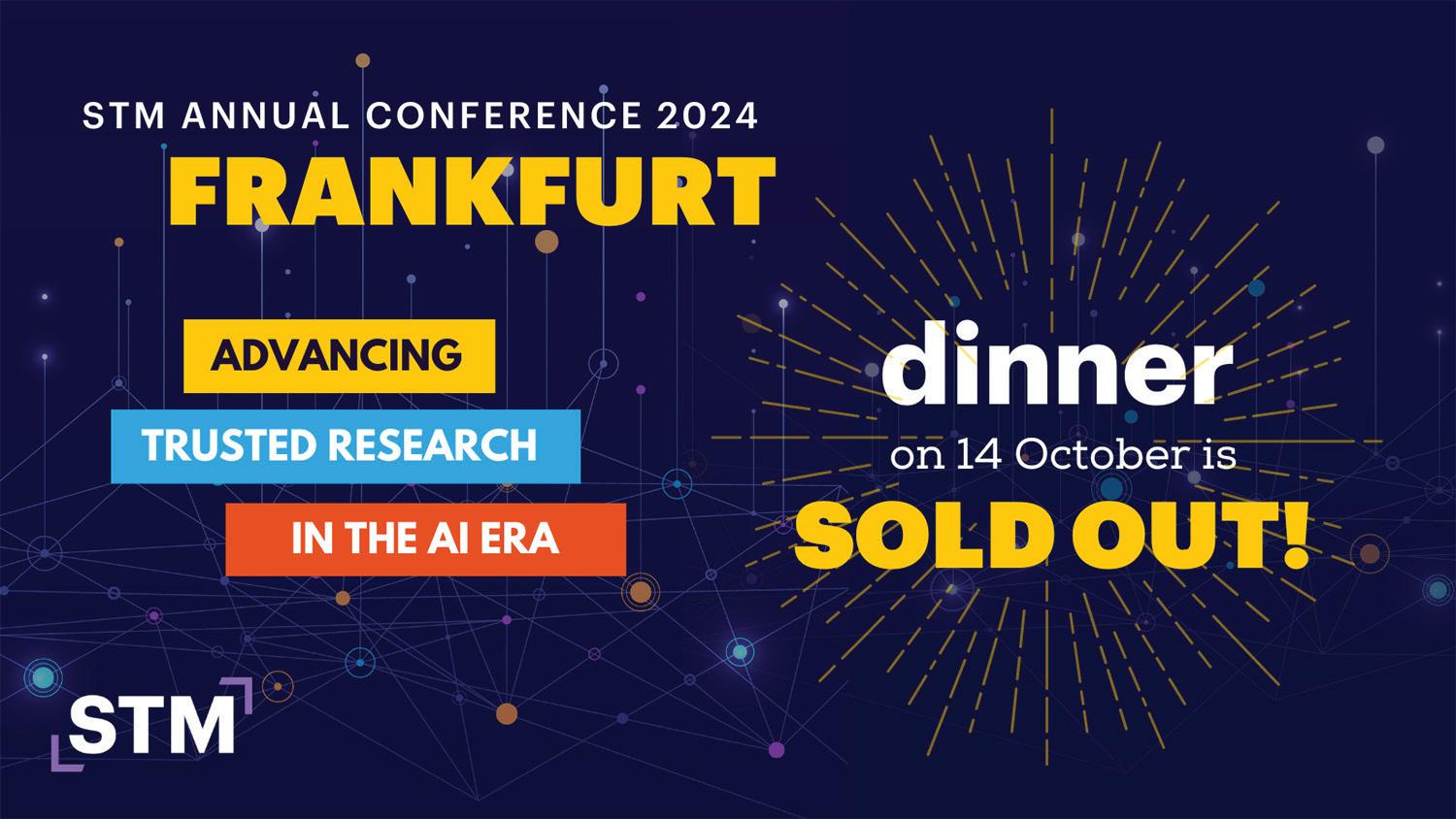
New at Frankfurt this year is a cultural-political program called “ Frankfurt Calling ” that aims to “bring together international voices from the fields of politics, culture and the arts to explore new approaches to today’s pressing challenges from a global perspective.” Scheduled events range from group conversations to book readings to moderated roundtable discussions, but all have the goal of addressing the pressing issues of current world affairs and forming strategies to shape a more promising future.
In an interview with Publishing Perspectives, President and COO of Frankfurter Buchmesse Jurgen Boos said, “The Frankfurt Calling program is organized by Frankfurter Buchmesse and its partners. Among our 2024 partners — in addition to the United Nations — are Amnesty International, the human rights organization Memorial, and the International Publishers
Association (IPA), just to name a few. Together with these international organizations, a program has been created to address major global issues such as democracy, human rights, diversity, artificial intelligence, and sustainability. Further cultural-political topics will also be discussed — the program includes events about Russia’s war against Ukraine, the Middle East conflict and reactions to it, Black feminism and the global rise of populism. There will be thought-provoking speakers from many regions of the world, such as, for instance, Anne Applebaum, Stella Gaitano, Atef Abu Saif, Roberto Saviano, Yuval Noah Harari, and Kohei Saito.”
Prior to the fair itself, another major event is the STM annual dinner and conference, which will be held October 14-15. This year’s theme is Advancing Trusted Research in the AI Era. The lively, dynamic program can be found at https://www.stmassoc.org/events/stm-dinner-conference-2024-frankfurt/ and features a keynote presentation from Linda S Bishai, Research Staff Member, Institute for Defense Analyses, called Our Future with AI – Getting it Right.
I’m looking forward to all the exciting events and meetings happening in Frankfurt. Hope to see you there!
<https://www.charleston-hub.com/media/atg/>
Column Editor: Corey Seeman (Director, Kresge Library Services, Ross School of Business, University of Michigan) <cseeman@umich.edu> Visit him at https://www.squirreldude.com/
Column Editor’s Note: I have started writing these notes four times. I was trying to write something inciteful or clever about the election. I even had a great picture that I took recently in Ann Arbor that showed the state of our political discourse. But every time I started typing, I could feel my heart contract a little bit and a headache development. And since I just turned 60, the last thing this ticker needed was to think about the election and what the next four years might look like.
So instead, I am taking a different path. For my own sanity and yours. And I changed the picture to one I took just this morning.
Instead of speaking about the election, it should be more fun to talk about our ever-present camera. Just this morning while I was out walking with my dog Runyon, I was able to get this wonderful photo on my Samsung Galaxy 22+. I did not always like taking photos with my phone, but that changed a few years ago as they improved and enabled me to take some great shots. I still do not use that for my nearly daily squirrel pictures on campus, but this way, I can always have a camera on me. I even started a new talk for public libraries and other community groups called “The Ever-present Camera: Understanding Photography on Your Smartphone.”1 Excited to have my first two sessions given last week.
As you may have gathered from my columns and my presentations, I feel very much that the individual as a media creator is a fascinating part of our current information environment. With the vast majority of individuals in the United States owning a smartphone, we realize that the state of photography is completely different these days. Just in 2007, before the introduction of the iPhone, cameras were needed if you were to capture what your world looks like. These days, we are all taking photos all the time. You can see if when you watch a big game or see an important speech, the phones are out capturing everything.
And while the lack of a photo does not disprove a statement we might be making, we should be far more critical of assertions that are made without evidence. While there are many instances where taking a photograph is not permitted or not encouraged, but if we saw something that was share-worthy, we take the picture. In many ways, it replaces language for us.
Understanding and grasping the complexity

of all these objects into the telling the story of these times is truly challenging. But that is one of the roles of information professionals as we help people understand how information is created, how it flows and how it is used. Maybe few will love my photo of Runyon, but it is documenting the fact that we were out by the retention pond this morning. And sometimes, that is really all that we can ask from a photograph.
From a book or a database, we have far more to ask about. Is it a useful tool to help people understand a topic? Is it helpful for staff and librarians to offer better programs? Is it an accurate resource that our community can use? In many ways, books and other resources are similar to politicians in that we assess them based on a variety of elements and hope they help us grow and prosper. Maybe that is a bit of a stretch, but fundamentally, if you have a good resource, it can help your patrons find their way in the world. And that is a great goal for a library to have.
With that, we have a number of reference and library-science related works that should be useful for your libraries. The books included here cover a great number of library issues including how to manage challenges coming from the community, how to support members on the Autism spectrum, and how to deal with an equitable collection that addresses all the issues that a community might have.
Special thanks to our five expert reviewers who have a great understanding of the types of works that are needed in libraries. Special thanks to my reviewers for this issue: Sandra Yvette Desjardins (Texas A&M-Central Texas), Carolyn Filippelli (University of Arkansas-Fort Smith), Fatemeh (Mahta) Kholoosi Raftar (Texas A&M University-Commerce), Jylisa Kenyon (University of Idaho Library), and Jasmine Lefresne (University of Toronto). As always, I want to thank them for bringing this column together.
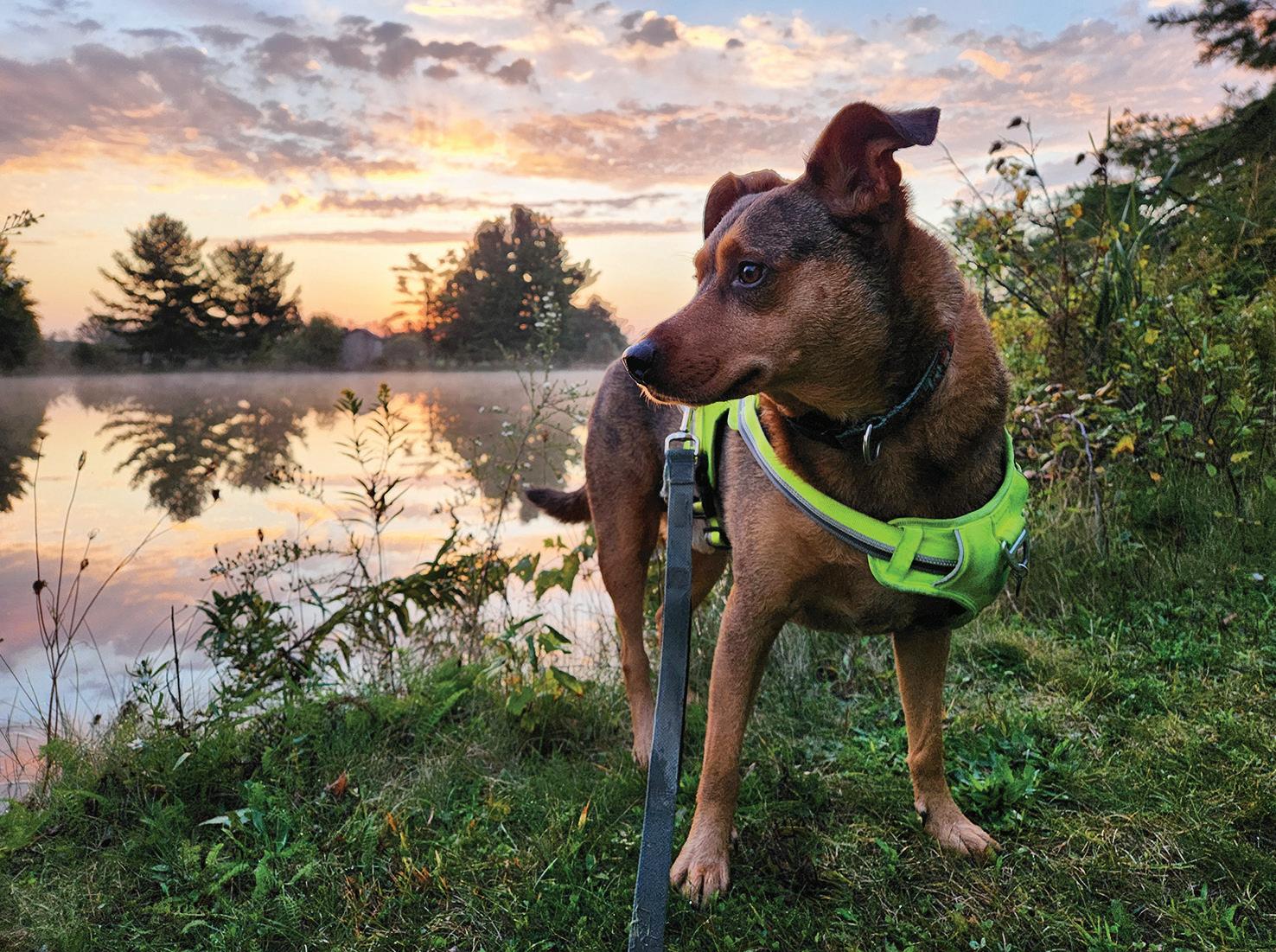
If you would like to be a reviewer for Against the Grain, please write me at <cseeman@umich.edu>. If you are a publisher and have a book you would like to see reviewed in a future column, please also write me directly. You can also find out more about the Reader’s Roundup here — https://www.squirreldude. com/atg-readers-roundup.
Happy reading and be nutty! — Corey
<https://www.charleston-hub.com/media/atg/>
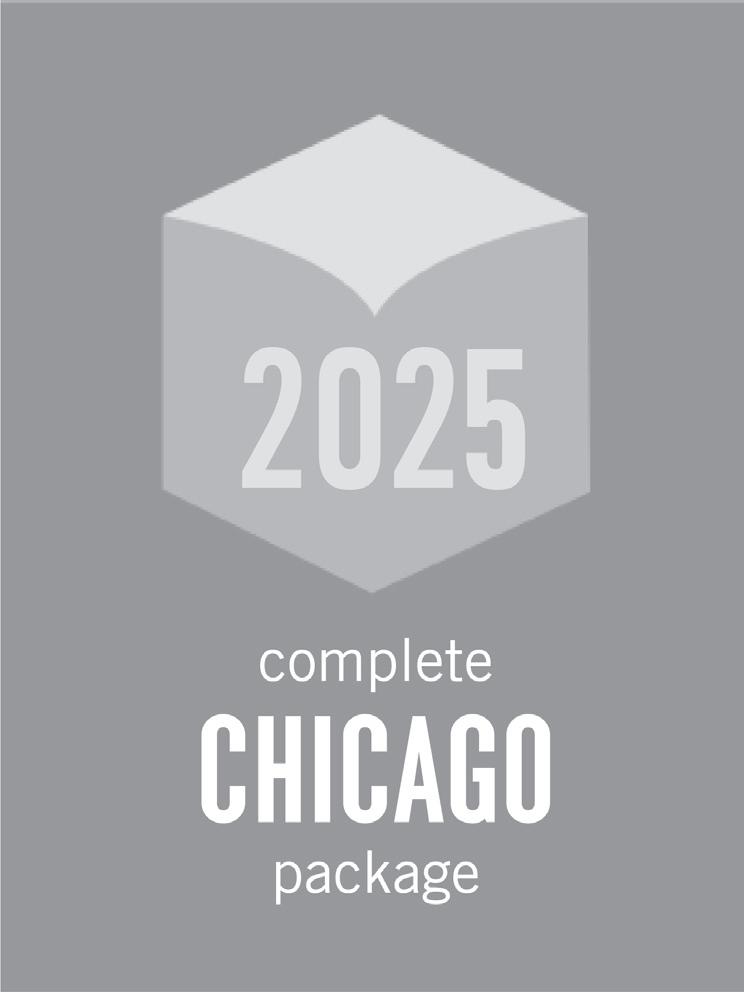
The Complete Chicago Package (CCP) is used by institutions worldwide to support their faculty’s strong research output, their flourishing and emerging academic departments, and their engaged student populations. Subscriptions provide electronic access to all of the more than 90 journals in our portfolio, including every issue published since each journal’s born-digital volume (comprising more than 140,000 articles).
The Full Run CCP upgrade provides access back to volume 1, issue 1 for every journal (more than 460,000 articles).
Learn about pricing and other CCP subscriber benefits at journals.uchicago.edu/ccp.
Anderson, Amelia. Library Programming for Autistic Children and Teens (2nd ed.). Chicago: ALA Editions, 2021. 9780838994856, 208 pages. $54.99
Reviewed by Sandra Yvette Desjardins (Library Specialist III, Texas A&M-Central Texas, Killeen, Texas) <sandra.desjardins@tamuct.edu>
Librarians pride themselves on their ability to engage with a variety of populations that their institution’s serve. Additionally, many librarians are particularly interested in creating fun, unique, and educational experiences for children and teens. There are certain groups within this demographic of our communities served, however, where acquiring additional information from colleagues is good practice so that librarians can provide the best possible services and experiences for these patrons. Children and teens diagnosed with autism are one such group. In general, working with these patrons is no different than working with other children and teens, however, there are some considerations librarians can keep in mind when planning programs for them.
The aim of this book is to provide a foundation for librarians interested in creating programs for autistic children and teens. It begins by providing an overview of autism and many of the terms and conditions associated with this spectrum disorder. Armed with this basic knowledge, librarians interested in creating programs for this population can plan accordingly. For instance, when working with autistic children and teens, librarians should consider staff training to ensure that everyone at their library is
creating a supportive, inclusive, and welcoming space for autistic children, teens, and their families.
Additionally, librarians interested in creating programs for autistic children and teens should keep the principles of universal design in mind and include those in their considerations when arranging their library spaces. As the author states, it’s also important to keep outreach and marketing efforts in mind as “parents of autistic children in low-income families may not have the resources for expensive early interventions or understand how to access them.” In terms of marketing and outreach for this population, it’s also vital to remember that, unlike other programming efforts, it’s best to limit enrollment for these events, as it’s easier to control the environment and other factors that may be unappealing to autistic children and teens when there are fewer people present.
From then on, the bulk of the book focuses on specific programs for particular age groups. Chapter four discusses story time programs for young children, with informative descriptions about different types of story time programs librarians can offer autistic children. It also offers four sample sensory story time programs with helpful lists of activities, songs, and tools. Chapter five focuses on programming for school-age children and provides useful information about book discussions for a variety of grade ranges, as well as other fun programming ideas that this group can enjoy, such as group dog therapy sessions and yoga. Chapter six focuses on programming for teens, with special considerations that involve STEM programs, crafting, creative writing, fandom, gaming, and photography. This chapter also provides helpful information for ways to incorporate life skills, citizenship, and career exploration programs for autistic teens.
<https://www.charleston-hub.com/media/atg/>
Chapter seven discusses programming for families and delves into how important it is to not only provide programs for autistic children and teens, but to also provide support for their parents and other family members.
Author Amelia Anderson has extensive experience working with autistic children and teens through work and research-related experience, as well as through two IMLSfunded initiatives, Project PALS, and Project A+. It is with this knowledge and experience that she provides several useful appendices that include information about training and education, intersectionality — as it pertains to autistic populations — building autistic friendly collections, finding potential funding sources for autistic patrons, and suggestions on keys to successful library visits and resources for providing sensory integration activities.
Overall, I found this book to be very informative, engaging, and useful. It is organized in a way that will make it a valuable tool for librarians interested in creating programs for autistic children and teens. It provides a wealth of knowledge, and it should be readily available for staff members who are involved in outreach, marketing, and programming, especially as it pertains to autistic and underserved populations.
ATG Reviewer Rating: I need this in my library. (I want to be able to get up from my desk and grab this book off the shelf, if it’s not checked out.)
Calzada, Becky, Val Edwards, and Maegan Coffin Heindel. Prepared Libraries, Empowered Teams: A Workbook for Navigating Intellectual Freedom Challenges Together. Chicago, IL: ALA Editions, 2024. ISBN: 979-8-8925-5564-7, 85 pages.
Reviewed by Fatemeh “Mahta” Kholoosi Raftar (Research & Instruction Librarian, Texas A&M University-Commerce (TAMUC)) <fatemeh.kholoosi.raftar@tamuc.edu>
In a time where intellectual freedom is increasingly under threat, Prepared Libraries, Empowered Teams by Becky Calzada, Val Edwards, and Maegan Coffin Heindel is a timely and essential resource for library professionals. This workbook provides a comprehensive guide for preparing library teams to face and navigate challenges to intellectual freedom with confidence and resilience.
The authors bring extensive experience and insights to this work. Becky Calzada is a library coordinator in Leander, Texas, known for her dedication to providing high-quality resources and supporting librarians facing challenges. Val Edwards has worked extensively as a consultant with many teams in conflict, bringing a conflict resolution lens to the topic. Maegan Coffin Heindel, a district library services coordinator, has firsthand experience navigating informal and formal challenges. Together, their combined expertise and practical approach offer a valuable resource for the profession.
The book is organized into three main parts, each meticulously designed to build upon the previous one, ensuring a logical and thorough approach to preparedness. The first part lays the groundwork by helping readers understand the current environment of intellectual freedom challenges. The authors provide a sobering overview of the rising number of book challenges and bans in recent years, using statistics and realworld examples to illustrate the urgency of being prepared. They emphasize the importance of knowing the strengths and
The ATG Reviewer Rating is being included for each book reviewed. Corey came up with this rating to reflect our collaborative collections and resource sharing means and thinks it will help to classify the importance of these books.
• I need this book on my nightstand. (This book is so good, that I want a copy close at hand when I am in bed.)
• I need this on my desk. (This book is so valuable, that I want my own copy at my desk that I will share with no one.)
• I need this in my library. (I want to be able to get up from my desk and grab this book off the shelf, if it’s not checked out.)
• I need this available somewhere in my shared network. (I probably do not need this book, but it would be nice to get it within three to five days via my network catalog.)
• I’ll use my money elsewhere. (Just not sure this is a useful book for my library or my network.)
weaknesses of one’s organization and community, offering practical advice on leveraging existing structures and forming strategic alliances to bolster the library’s defenses.
One of the book’s standout sections focuses on the necessity of having robust selection and reconsideration policies in place as collection items fall under scrutiny. The authors offer a detailed checklist for evaluating current policies and provide guidance on making necessary updates, ensuring that libraries have a strong foundation to support their teams during challenges. This practical utility is invaluable, offering a clear path for libraries to fortify their policies and procedures against potential challenges.
As the book progresses, it shifts focus to actionable strategies. The authors highlight the importance of team cohesion and readiness, stressing the need for thorough training and clear communication. They provide the readers with templates and checklists that are easy to implement. These tools help guide libraries step-by-step through the process of creating a tailored action plan. The emphasis on developing a response mindset within the team ensures that staff members are not only prepared on paper but are also mentally and emotionally ready to face challenges. This holistic approach to preparedness reinforces the idea that it is an ongoing process, requiring continuous professional development and practice.
The final part of the book focuses on maintaining and institutionalizing readiness. The authors provide strategies for ensuring that the library remains prepared for future challenges, emphasizing the importance of continuous improvement and capacity-building. Effective communication with all stakeholders is highlighted as crucial for building trust and transparency, offering practical advice on how to achieve this. The inclusion of real-world examples demonstrates how the prepared action plan can be applied effectively, helping readers visualize the implementation of the strategies discussed throughout the book.
<https://www.charleston-hub.com/media/atg/>
Overall, Prepared Libraries, Empowered Teams is an indispensable resource for library professionals. The authors have crafted a practical and comprehensive guide that empowers libraries to protect intellectual freedom proactively. Their approach is thorough, practical, and grounded in real-world experience, making this workbook a valuable addition to any library’s toolkit.
By following the detailed strategies and templates provided, library teams can navigate intellectual freedom challenges with confidence, ensuring that their collections remain diverse, inclusive, and representative of all viewpoints. This book is not only a guide but also a call to action for all library professionals committed to upholding the principles of intellectual freedom.
ATG Reviewer Rating: I need this in my library. (I want to be able to get up from my desk and grab this book off the shelf, if it’s not checked out.)
Depression Handbook & Resource Guide. Amenia, NY: Grey House Publishing, 2024. ISBN: 978163700564. 647 pages. $165.00 Print, with free online access through the Salem Press/Grey House platform. Also available separately as an ebook ($206.00) via various vendors.
Reviewed by Jylisa Kenyon (Social Sciences Librarian, University of Idaho Library) <jylisadoney@uidaho.edu>
The Depression Handbook & Resource Guide is the eighth volume in the Heath & Wellness Guides series published by Grey House. The first edition of this essential reference work includes useful statistics; republished journal articles, reports, factsheets, and infographics; lists of relevant resources and agencies; and two indexes and a glossary.
This volume is arranged into four sections. Section One: Studies & Statistics includes more than 380 pages of materials authored by researchers and government agencies, including the Surgeon General’s Office and the Substance Abuse and Mental Health Services Administration. Within the table of contents, readers can find brief annotations for each source, with content focused on the primary types of depression; mental health in children, college students, and in the workplace; and 28 common comorbidities or complications of depression. Materials in this section range from short information sheets, FAQs, and booklets to detailed journal articles and reports. In particular, the series of booklets released by the National Institute of Mental Health covering depression, chronic illness and mental health, depression in women, and perinatal depression (pp. 5 - 35); the 2020 National Survey on Drug Use and Health (pp. 333 - 369), and Suicide Prevention: Resource for Action (pp. 371 - 378) are particularly informative.
Section Two: Depression Resources is an annotated directory of agencies and organizations, libraries, research centers, support groups and hotlines, websites, and other resources that provide assistance and support to those experiencing depressive disorders. This directory is also useful for families, friends, and caregivers of those experiencing depression. At only eight pages, this section is short when compared to Section One, and although readers could likely identify many of these resources via search on the web, the breadth of coverage and timesaving organization into a categorical list make this section a valuable contribution to the volume.
Section Three: Common Comorbidities of Depression expands upon the materials provided in Section One. Brief overviews written by Patricia S. Edens (PhD, RN, LFACHE) introduce each comorbidity and its relationship to depression and describe treatment options. An annotated directory of resources, utilizing the structure introduced in Section Two, is also included for each comorbidity. Rounding out this volume is Section 4: Appendixes & Indexes which includes a short glossary of terms as well as alphabetical and geographic indices of all resources listed in Sections Two and Three.
Although useful overall, this volume does have a couple of issues that libraries should note. The first is that many of the materials included in Section One do not have publication dates or revision dates listed. A quick internet search indicated that some of these materials were revised or published in 2023, but asking the reader to determine the currency of content is a frustration that could have been easily remedied. Another challenge is that some of republished materials appear in landscape orientation, which would make them difficult to read if accessing an electronic copy of the book. Nevertheless, this volume would make an excellent addition to psychology collections, health collections, or general reference collections in academic and public libraries. Although the individual materials in Section One and the directory of resources in Sections Two and Three can be found elsewhere, their compilation into a single volume makes them more accessible for readers and researchers.
ATG Reviewer Rating: I need this in my library. (I want to be able to get up from my desk and grab this book off the shelf, if it’s not checked out.)
Nappo, Christian A. The National Librarians of Medicine and Their Predecessors. Lanham, MD. Rowman & Littlefield, 2024. 9781538180495, 195 Pages. $95.
Reviewed by Carolyn Filippelli (Reference Librarian, Boreham Library, University of Arkansas-Fort Smith)
<Carolyn.Filippelli@uafs.edu>
Author Christian Nappo has produced a history of the National Library of Medicine through a chronologically-arranged list of twenty-seven biographical sketches of the Library’s various administrators. Through these personal profiles, the story of the National Library of Medicine comes to life. Army Surgeon Generals, heads, and directors instrumental in the development of the National Library of Medicine are listed along with the specific challenges, accomplishments, and legacy for their tenure in this office. Biographical summaries also include information on their early life, education, military experience, and career highlights. In addition to their roles as library administrators, many of these individuals were also noted for their expertise in other fields such as ornithology, psychiatry, and neurology and for their scholarly publications in the history of medicine. Some, like Walter Reed, were physicians who made notable contributions in efforts to combat diseases such as yellow fever. Other library administrators were bibliophiles with fluency in multiple languages. Several present-day administrators made use of their valuable expertise in computer systems. A few such as John Shaw Billings, Betsy Lamson Humphreys, and Patricia Flatley Brennan were noted for their professional training and experience as librarians. A reading of these biographical sketches reveals much of the human side of historical events
<https://www.charleston-hub.com/media/atg/>
related to the history of the National Library of Medicine. These are details that are often missing in official narratives.
Obstacles to progress along with triumphs of the National Library of Medicine are chronicled, beginning with its origin as a Library in the office of the Army Surgeon General and an initial collection based on the personal library of Dr. Joseph Lovell, the first de facto head in 1836. The experiences of the Library’s successive leaders highlight basic administrative problems faced, such as the lack of congressional funding and inadequate and cramped facilities. The survival and continued progress of the NLM in its early years is something of a miracle. Various leaders worked diligently and creatively to preserve and enlarge the scope of the Library’s collections. Contributions often came from the personal libraries of physicians or from purchases arranged through U.S. and foreign book agents. Journals were also added to the holdings in addition to books. All of the Library’s obstacles and successes were connected with a flurry of national and international events including epidemics, wars, and the complexity of national politics.
Through many challenges, the Library somehow managed to survive and flourish. Determined leaders succeeded in moving the Library forward, transforming its collections, establishing catalogs of holdings, devising new classification schemes, securing funding for purchases and a new building, converting Library collections from a collection of cards and printed catalogs to modern computerized databases like Medline and PubMed, and increasing efforts in medical outreach and service to the medical community.
The modern National Library of Medicine is a testament to the contributions of all the persons profiled here. Through many changes in leadership and vicissitudes, the National Library has lived up to its guiding mantra to serve as a national library providing medical information to the nation and the world.
Notes and the bibliography are especially useful features of the book. Although pictures or images might have created added interest, visuals are readily available on the National Library of Medicine’s website and from other sources.
ATG Reviewer Rating: I need this available somewhere in my shared network. (I probably do not need this book, but it would be nice to get it within three to five days via my network catalog.)
Zvyagintseva, Lydia & Mary Greenshields, (Eds.). (2023). Land in Libraries: toward a materialist conception of education. Library Juice Press.
Reviewed by Jasmine Lefresne (Data Librarian, Map and Data Library, University of Toronto) <jasmine.lefresne@utoronto.ca>
A core value of libraries and librarians, as outlined in the ALA code of ethics, is to provide equitable and unbiased access to information and to confront inequity and oppression. How these values are put in practice varies across institutions, but to do this work meaningfully it’s important to understand how libraries are embedded in and contribute to systems of oppression, historically and in the present. This includes recognizing that libraries exist in specific places and shape/are shaped by the land on which they exist.
Land in Libraries: Toward a Materialist Conception of Education is a collection of essays that explore the relationship between libraries and land, with an emphasis on decolonization and
climate change. The collection is thoughtfully organized, beginning with Andrew Weymouth’s “Civilizing, Separating, and Organizing” — a historical analysis of libraries in North America and their role in western expansion and the colonial “civilizing mission.” This opening chapter sets the tone for the rest of collection by providing historical context and challenging the modern notion that libraries are “objective” spaces. The subsequent essays highlight how modern libraries influence (and are influenced by) our perception of the land they occupy through their collections, physical spaces, policies, and programming. A recurring theme is the privileging of Westerncentric forms of knowledge over Indigenous ways of knowing. For example, Laura Marie Judge and Jedidiah Crook’s review of New Hampshire public library local history collections highlights how prioritizing Western sources as authoritative shapes our understanding of land and contributes to the “delegitimization and devaluation of Indigenous Knowledges” (p. 65). However, Marie Bitz’s chapter, “Downstream,” best explores the theme of Indigenous Knowledges. Bitz shares her experience of a canoe trip on the South Saskatchewan River to explore the ideas of embodied knowledge, linking this to her experience as a Métis woman and an academic librarian (Métis refers to Indigenous people whose homelands include portions of Canada’s Prairie Provinces). For me, this chapter was the highlight of the collection — while other contributions do an excellent job emphasizing the importance of centering Indigenous knowledge paradigms, Bitz’s use of personal narrative allows us to explore what this might look and feel like at the institutional and personal level.
The final chapter in this collection, “Refusing Growth,” stands out for its focus on climate change. Author Ariel Hahn draws on feminist and anti-colonial divestment movements to discuss the impact of cloud computing on the environment and offers some ways that libraries can tackle this challenge. On first read, some of Hahn’s suggestions may seem radical, particularly her call for degrowth and “scaling back our technological investment” (p. 177). However, considering Hahn’s ideas in the context of the larger collection, I found myself thinking about the question that runs throughout the book — what could libraries look like if we gave equal priority to Indigenous ways of knowing? If we want to meaningfully engage with questions of decolonization and tackling climate change, then maybe radical change is necessary.
Overall, Land in Libraries is a thought-provoking collection that draws attention to crucial issues, asking us to rethink how we view libraries and their relationship with the land. One of the collection’s strengths is grounding theory in practice. While it doesn’t provide a step-by-step guide to decolonizing libraries (nor does it attempt to), it illuminates how these issues are embedded in our institutions and offers new ways of thinking about and addressing them.
ATG Reviewer Rating: I need this in my library. (I want to be able to get up from my desk and grab this book off the shelf, if it’s not checked out.)
1. For information on this program, please visit https://www. squirreldude.com/photography-programs/everpresentcamera
<https://www.charleston-hub.com/media/atg/>
Column Editor: Donna Jacobs (Retired, Medical University of South Carolina, Charleston, SC 29425) <donna.jacobs55@gmail.com>
In this day and age, a short story with the title “War” would not personally create the draw to read. In fact, it might be like two adjacent wrong poles of a magnet — repulsive.
But this short story penned by Luigi Pirandello is only four pages long. “Quando si comprende” was the original title given to the story published in 1918 as part of the collection “Un Cavallo nella Luna.” An introductory paragraph given in the book Great Stories by Nobel Prize Winners that houses this story ends with the following statement: “‘War’ shows his ability to suggest in a word or phrase as much as others less skillful convey in a page.” Maybe it is worth a few minutes of reading time.
First, a bit about Luigi Pirandello. He was awarded the 1934 Nobel Laureate in Literature that praised the extensive body of work created by Pirandello “for his bold and ingenious revival of dramatic and scenic art.” Pirandello was born to an upperclass family in Sicily, Italy. Home schooled in his early years and fascinated by the magical and popular stories shared with him by a servant, Maria Stella, Pirandello gravitated to the humanities in his more formal educational training. Life, love and family obligations created the environment that would ultimately influence his writing career. He evidently settled into a pursuit of his doctorate in Philology.
Sidebar: I had to look up the discipline of Philology. Fascinating and pertinent was the information that emerged. The word philology is of Greek origin meaning “love of words.” I particularly liked the description: “intersection of textual criticism, literary
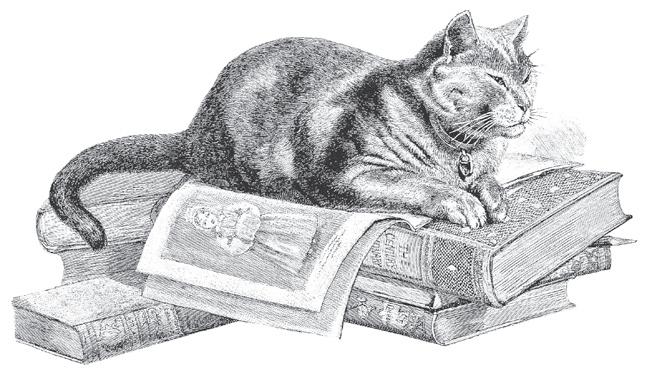
criticism, history and linguistics with strong ties to etymology” credited to Ferdinand de Saussure. What a fascinating thesis study for someone who would go on to win the Nobel Prize in Literature.
Back to the four pages of this story.
“War” is set on a train in Italy during World War I. The passengers in one carriage are the parents of sons. Sons who are at the front or about to be deployed. Only sons going to war. Sons dying at the front. Parents grieving. Parents debating whose grief is deeper.
“‘You should thank God that your son is only leaving now for the front. Mine has been sent there the first day of the war. He has already come back twice wounded and been sent back again to the front.’
‘What about me? I have two sons and three nephews at the front,’ said another passenger.
‘Maybe, but in our case it is our only son,’ ventured the husband.”
The debate continues until mothers then fathers release profound grief.
Four pages. Over hundred years later. The conversation is still happening.
<https://www.charleston-hub.com/media/atg/>
Section Editors: Bruce Strauch (Retired, The Citadel) <bruce.strauch@gmail.com> Jack Montgomery (Georgia Southern University) <jmontgomery@georgiasouthern.edu>
Column Editor: Marci Wilding (Public Services Law Librarian at the Grisham Law Library and Assistant Professor of the Practice of Law at the University Mississippi School of Law, Oxford, MS) <macarte3@olemiss.edu>
The traditional path to a career in law librarianship has been rigorous and demanding, requiring a thorough understanding of both the legal field and library management by obtaining both a master’s in library science (MLIS) and a Juris Doctor (JD) degree. The MLIS provides training in the theoretical and practical aspects of library operations, including cataloging, reference services, and user instruction. The JD, on the other hand, equips individuals with a deep understanding of the law, legal research methodologies, and the judicial system. This combination was thought to provide the optimal blend of legal knowledge and library science skills necessary for the complex tasks faced by law librarians. Combining these degrees has long been seen as essential for success in academic law libraries.
Recent developments, however, suggest a growing flexibility regarding the qualifications needed for law librarianship. Increasingly, libraries are recognizing the value that JD-only candidates can bring to the profession with an increasing number of libraries considering candidates who hold only a JD or only a MLIS for non-supervisory roles. According to the American Association of Law Libraries, “about one-third of all law librarians also have a law degree from an ABA-accredited law school, but fewer than 20% of the law librarian positions being filled require both degrees.”1
This shift is not merely a trend but reflects broader changes in the field and the evolving needs of academic law libraries. For example, on August 23, 2024, a job advertisement for a Faculty Research Librarian position appeared on the Harvard Law School Library’s career page for which either a JD or a MLIS degree is required. 2 To illustrate these points, as we explore this shift’s implications, we will consider the University of Mississippi’s Grisham Law Library as a case study. This library has increasingly welcomed JD-only candidates for nonsupervisory roles, reflecting a broader shift within the field that includes expanding the horizons of academic law librarians and the richness of their program.
One of the most profound implications of the shift toward increasing acceptance of JD-only candidates is its potential impact on diversity within the profession. According to Hulbert

and Kendrick, 85 percent of librarians are white, and they estimate that between 500-1100 additional BIPOC students would need to graduate from MLIS programs every year for the next 10 years if the profession is to become 25 percent BIPOC.3 According to the Department for Professional Employees, women represented 82 percent of librarians working in all types of library settings as well as graduates in Master of Library Science programs in 2023.4
The dual-degree requirement may have limited access to the field for individuals who could otherwise excel in law librarianship but could not afford or choose not to pursue an MLIS. By opening up non-supervisory roles to JD-only candidates, libraries can tap into a broader pool of talent, which may help to increase diversity within the profession. This change could lead to a more inclusive and representative workforce, bringing diverse perspectives and experiences that enrich the law library environment and improve services for a varied patron base.
For the Grisham Law Library, the lack of diversity in MLIS graduates is evident in the applicant pools generated from our law librarian position advertisements. However, 50% of our law library positions are held by male professionals serving in the roles of Director, Assistant Director, Library Coordinator, Public Services Law Librarian, and Manager of Technical Services. This diversity on its own challenges existing stereotypes and encourages a wider range of individuals in law school and in practice to consider careers in the field.
The traditional model of law librarianship often emphasized a strong academic component, with librarians holding dual degrees (MLIS/JD) and playing significant roles as adjunct professors or contributors to legal scholarship. The dual-degree requirement ensured that librarians were not only proficient in library science but also deeply knowledgeable about legal theory and practice. This alignment allowed them to integrate seamlessly into academic settings, enhancing their ability to support faculty research and contribute to the legal education of students. Fore summarizes from the 2021 AALL Salary Survey results stating that “85 percent of those with the titles “instructional” librarian hold both degrees.”5
<https://www.charleston-hub.com/media/atg/>
However, the recent shift towards opening non-supervisory librarian roles to JD-only librarians has introduced a new dynamic. While these professionals may not have formal training in library science, their legal expertise allows them to offer substantial practical insights, especially in legal research. This shift has sparked conversations about how the role of librarians in academia might evolve, particularly in relation to teaching responsibilities, titles, and academic scholarship.
At the Grisham Law Library, we have four JD-only Public Services Law Librarians that have been granted the faculty title of Assistant Professor of the Practice of Law at the law school. Each of these individuals brings rich and substantial practical experience in areas such as: small local law practice, law firm and case load operations, risk management and compliance work, judicial staff attorney practice, and large firm practice and clerkships. These rich and diverse experiences have transferred into the classes that they develop and teach like: Law and Technology, Risk Management and Compliance Law, Risk Management and Compliance Practicum, Professional Identity Formation, Research for Legal Scholarship, Legal Writing for Judicial Clerkships, Legislative History, and Advanced Legal Research. By acquiring professor titles, the librarians gained voting rights, faculty and university committee service, and perceived credibility, facilitating expansion into teaching, speaking, and writing endeavors.
3. Changes in Academic Publishing
The evolution in librarian qualifications and titles could also influence academic publishing. Law librarians with both MLIS and JD degrees have traditionally been well-positioned to contribute to academic journals, edit collections, and provide expert reviews. JD-only librarians may have different strengths, potentially focusing more on practical legal research and less on theoretical contributions. This shift could lead to new dynamics in academic publishing, with a potential increase in publications centered around practical legal issues, technology, and contemporary legal research methodologies, reflecting the unique expertise of JD-only librarians.
At the Grisham Law Library, the JD-only Public Services Law Librarians with the title of Assistant Professor of Practice have only been at the law library for 3-4 years, but they have begun stretching their academic writing and publishing muscles. They have publications in Public Services Quarterly, Information Today, and Against the Grain. They have book chapters in books published by Georgetown University Press, De Gruyter Publishing, and Rowman and Littlefield. They have also published articles in AALL’s New Voices Spectrum and Perspectives sections. Though the topics published may not all be “traditional” for law librarians, widening the impact and exposure of the law librarian profession and the complexities of our varied spaces and experiences has been a clear asset for this library in building credibility with our law school faculty, our state, and our profession.
One of the most immediate impacts of this trend is on patron services. JD-only librarians bring a wealth of legal knowledge and practical experience that can enhance the quality of legal research assistance, guidance provided to patrons, and variety of outreach opportunities. They are adept at understanding complex legal issues and can offer nuanced support that may be less accessible to librarians without a legal background.
This can improve the overall effectiveness of legal research services and help users navigate complex legal information more efficiently. These enhancements broaden the scope of service the library can provide and the opportunities for collaboration with communities.
Due to the depth and scope of experience held by the JD-only law librarians at the Grisham Law Library, library outreach and services have been strengthened and expanded. Examples of the JD-only law librarian’s outreach include presentations: “AI and the Law” to the MS State Legislature, “AI and the Courts” to the Trial Court Judges of Mississippi, “Technology and the Law” to the Mississippi Prosecutors Association, “AI and the Courts” to the MS Appellate Court Judges, “Legal Terminology” to newly elected Chancery Court Clerks, and “Legal Terminology” at the MS Court Clerk Conference.
Most importantly, these JD-only librarians were able to help the law school meet the new ABA requirement for professional identity formation by using their practical knowledge and experience to plan, develop, and teach a course with lectures like wellness, time management, note-taking, and organizational skills. The students benefited from the backgrounds and skills of these librarians in immediate and yet-to-come actionable ways. The JD-only librarians have had the opportunity to speak at national conferences on topics such as JD-only librarianship, productivity, and equitable instruction practices and pedagogy.
Collection development is another area where the qualifications of law librarians can have a significant impact. JDonly librarians are likely to have a keen understanding of current legal trends and emerging areas of law, which can influence the development of a law library’s collection. They can help identify critical resources and ensure that the collection remains relevant and comprehensive. MLIS-trained librarians are adept at managing collections from a library science perspective. While JD-only librarians cannot do that, they can provide valuable input based on their legal expertise and practical experience.
At the Grisham Law Library, the director and assistant director are very receptive to input from the JD-only public services law librarians concerning collection needs, requests, and input. Law librarians serve specific faculty members as faculty liaisons which are both assigned and assumed; thus, they have specialized knowledge about what faculty members are needing or simply thinking about during their research. The JD-only librarians are able to collaborate with the faculty with a focus on their practice areas and provide a curated library service for their faculty and their students within their own classes. With professional experience beyond the library field, they are well-positioned to stay informed about new developments and emerging concerns in these areas, which can enrich and contribute to the library’s collection development.
While the dual-degree requirement for law librarianship has historically been seen as the gold standard, the evolving landscape and changing needs suggest that there is room for both MLIS and JD qualifications in contemporary librarianship. JD-only candidates may offer valuable perspectives and skills that complement the traditional role of law librarians, and their growing presence highlights the importance of adaptability and innovation in the field to enhance relevance and ensure longevity. As Zook stated in her AALL RIPS blog, “What I am
<https://www.charleston-hub.com/media/atg/>
suggesting is that insisting on the dual degree requirement during the hiring process may no longer be as useful as it once was. You may need to broaden the scope of your search to find the candidates you need.” What the Grisham Law Library has customized is a remarkably good fit for their library, service, and expertise needs, which came with wonderful, sometimes unanticipated, results. In Zook’s experience, “removing the requirement helped attract a new generation of law librarians.”6
American Association of Law Libraries. Become a Legal Information Professional. https://www.aallnet.org/careers/ about-the-profession/education/ Harvard Law School. Harvard Careers. Faculty Research Librarian. August 23, 2024. 66706BR. https://sjobs.brassring.com/TGnewUI/Search/home/ HomeWithPreLoad?partnerid=25240&siteid=5341&PageType= searchResults&SearchType=linkquery&LinkID=3185662#job Details=2010657_5341
Hulbert, Iona G., Kendrick, Curtis. Assessing the Racial Diversity of Librarians. IthakaS+R. April 18, 2023. https:// sr.ithaka.org/blog/assessing-the-racial-diversity-of-librarians/. Department for Professional Employees. Library Professionals: Fact and Figures. 2024 Fact Sheet. (webpage) Retrieved September 12, 2024. https://www.dpeaflcio.org/ factsheets/library-professionals-facts-and-figures
Zook, Genevieve. No JD, No Problem: Is the Dual Degree Requirement’s Usefulness Fading? RIPS Law Librarian Blog. Research, Instruction, and Patron Services Special Interest Section (RIPS-SIS) AALL. October 17, 2023. https:// ripslawlibrarian.wordpress.com/2023/10/17/no-jd-no-problemis-the-dual-degree-requirements-usefulness-fading/
Fore, Joe. Academic Law Librarians are Paid 47% Less than Their Faculty Counterparts. RIPS Law Librarian Blog. Research, Instruction, and Patron Services Special Interest Section (RIPSSIS) AALL. February 4, 2022. https://ripslawlibrarian.wordpress. com/2022/02/04/academic-law-librarians-are-paid-47-lessthan-their-faculty-counterparts/
1. American Association of Law Libraries. Become a Legal Information Professional. https://www.aallnet.org/ careers/about-the-profession/education/
2. Harvard Law School. Harvard Careers. Faculty Research Librarian. August 23, 2024. 66706BR. https://sjobs.brassring.com/TGnewUI/Search/home/ HomeWithPreLoad?partnerid=25240&siteid=5341& PageType=searchResults&SearchType=linkquery& LinkID=3185662#jobDetails=2010657_5341
3. Hulbert, Iona G., Kendrick, Curtis. Assessing the Racial Diversity of Librarians. IthakaS+R. April 18, 2023. https://sr.ithaka.org/blog/assessing-the-racial-diversityof-librarians/. The authors say that they used ALA’s Diversity Counts and member demographic surveys, as well as Census microdata files from the Current Population Survey and the Annual Social and Economic Supplement in order to attempt to establish a baseline of the current state of the racial demographic makeup of the profession in their two issue briefs on this topic. They said that this is “challenging—by any metric.”
4. Department for Professional Employees. Library Professionals: Fact and Figures. 2024 Fact Sheet. (webpage) Retrieved September 12, 2024. https://www. dpeaflcio.org/factsheets/library-professionals-factsand-figures
5. Fore, Joe. Academic Law Librarians are Paid 47% Less than Their Faculty Counterparts. RIPS Law Librarian Blog. Research, Instruction, and Patron Services Special Interest Section (RIPS-SIS) AALL. February 4, 2022. https://ripslawlibrarian.wordpress.com/2022/02/04/ academic-law-librarians-are-paid-47-less-than-theirfaculty-counterparts/
6. Zook, Genevieve. No JD, No Problem: Is the Dual Degree Requirement’s Usefulness Fading? RIPS Law Librarian Blog. Research, Instruction, and Patron Services Special Interest Section (RIPS-SIS) AALL. October 17, 2023. https://ripslawlibrarian.wordpress.com/2023/10/17/ no-jd-no-problem-is-the-dual-degree-requirementsusefulness-fading/
<https://www.charleston-hub.com/media/atg/>
Column Editor: Kyle K. Courtney (Director of Copyright & Information Policy, Harvard Library) <kyle_courtney@harvard.edu>
QUESTIONS FROM A LIBRARIAN: I have some questions about the AI cases that are pending across the country in U.S. courts. Some news in the art and tech space have headlines like “U.S. Artists Score Victory in Landmark AI Copyright Case” or “Artists Land a Win in Class Action Lawsuit Against A.I. Companies.” Are the plaintiffs, often the copyright holders or rights holders, winning these AI training cases?
ANSWER: If you’ve been following AI-related news lately, you’ve probably seen these types of articles declaring “big wins.” But the cases are really far from declaring victory for one side or the other. This latest round of press stems from a recent court decision in Andersen v. Stability AI case, where some of the plaintiffs’ claims survived a “pretrial motion to dismiss.” So, the “big win” being written about is merely one step in the legal process, with many more hurdles to overcome before any definitive rulings are made.
QUESTION: So, what exactly is a motion to dismiss?
ANSWER: A motion to dismiss is a legal maneuver used by defendants to try to get a case thrown out before it goes to trial. Trial is where the facts are decided and the law applied to those facts. Under a Federal Rules of Civil Procedure Rule 12(b)(6) motion, the defendant often argues that even if all the facts presented by the plaintiff are true, the legal claims still don’t hold up. In other words, it’s about whether the lawsuit is even plausible on its face, not whether it’s ultimately right or wrong.
In the AI-related lawsuits, most of the plaintiffs’ claims have faced tough scrutiny at this early stage. Yet, it’s important to note that this isn’t unique to AI lawsuits. Rule 12(b)(6) motions are so common in many types of litigation, and they rarely succeed unless the plaintiffs’ claims are completely without merit.
QUESTION: How do courts decide whether to dismiss an AI case or let it proceed?
ANSWER: To survive this motion to dismiss, the plaintiffs have to make “plausible” claims, meaning their allegations should be enough to suggest that the defendant might have violated the law. A court assumes all the plaintiff’s factual claims are true and interprets them in the most favorable light. So, in these cases, if the AI companies’ actions could reasonably be considered illegal based on these facts, then the claims move forward to the next stage of the lawsuit, where more evidence will be gathered.
On the flip side, if the plaintiffs’ claims, even when taken as true, do not suggest any legal wrongdoing, the court will dismiss the case. Just speculating that an AI company might have done something unlawful isn’t enough — the plaintiffs need to show that there’s a reasonable chance of uncovering evidence during the discovery process.
QUESTION: Does that mean the AI case is over if the motion to dismiss succeeds?
ANSWER: Not necessarily. When a court dismisses a claim, it often allows the plaintiffs to amend their complaint. In the case of Andersen v. Stability AI, for instance, the plaintiffs’ claims were initially dismissed, but they were given the opportunity to “rework” their case. After doing so, some of their claims survived
a second round of motions to dismiss, while others, like certain breach of contract and DMCA claims, were dismissed again.

The bottom line is that the dismissal stage is just one part of the process. It helps streamline cases by weeding out meritless claims before going to trial, saving time and resources for both parties and the courts.
QUESTION: What kinds of claims are being dismissed in these AI lawsuits?
ANSWER: So far, we’ve seen several types of claims fail to survive these “motions to dismiss.” One common claim that has consistently been dismissed involves the removal of copyright management information. Plaintiffs in these cases have argued that AI companies violated the Digital Millennium Copyright Act (DMCA) by removing copyright management information during the training process. However, courts have not been convinced of this argument. For example, in cases like Tremblay v. OpenAI and Silverman v. OpenAI, the courts ruled that plaintiffs didn’t provide sufficient evidence that AI companies intentionally removed this information.
Another type of claim that’s been dismissed relates to derivative works. Plaintiffs have argued that the AI models themselves are derivative works of the copyrighted materials used to train them. But courts have pushed back, saying that the models themselves can’t be considered derivative works under copyright law. For instance, in Kadrey v. Meta Platforms, the court said it was “nonsensical” to claim that an AI model is a derivative work just because it was trained on copyrighted books.
Similarly, claims that every AI-generated output should be considered a derivative work of the training data have also been dismissed. Courts have pointed out that plaintiffs need to show specific instances of substantial similarity between AI outputs and the original works, and so far, they haven’t been able to do that.
QUESTION: Are any claims in these lawsuits making it past the motion to dismiss stage?
ANSWER: Yes, some claims are surviving the motions to dismiss, which is why we’re seeing headlines about “victories.” For example, in the Andersen v. Stability AI case, certain copyright infringement claims have made it through this early stage of the litigation, which means the court found them plausible enough to continue to the discovery phase.
It’s important to note that the most critical legal issues in these AI lawsuits, such as whether there has been direct copyright infringement or whether certain uses of copyrighted material might be considered fair use, haven’t been decided yet. These issues involve factual questions that courts typically won’t resolve at the motion to dismiss stage.
QUESTION: What other types of claims are being made in these AI cases, and how are courts handling them?
<https://www.charleston-hub.com/media/atg/>
ANSWER : In addition to copyright claims, plaintiffs have raised various state law claims, such as negligence and unfair competition. However, many of these claims have been dismissed due to copyright preemption. Copyright preemption occurs when state law claims overlap with rights covered by federal copyright law, meaning plaintiffs can’t pursue separate state law claims for something already governed by copyright law.
For example, in Andersen v. Stability AI, the court dismissed the plaintiffs’ “unjust enrichment” claim because it didn’t add anything new beyond their copyright claims.
QUESTION: Are there any predictable patterns in how these cases are tried and handled?
ANSWER: As you will notice if you read all the complaints, many of the AI lawsuits share similar drafting of the complaint with nearly identical claim language. Why is this? Because several of these cases are being handled by the same law firm. As a result, courts are dismissing overbroad claims and class definitions that don’t hold up under scrutiny. While the community waits for more rulings, it’s clear that these lawsuits are shaping the legal landscape around AI and copyright, but any “final” victory is still a long way off.
QUESTIONS FROM AN ACCESS SERVICES LIBRARIAN: I have a few questions about the recent court ruling on the Internet Archive’s (IA) “Open Libraries” controlled digital loaning program. What happened?
ANSWER : Last week, the U.S. Court of Appeals for the Second Circuit affirmed a lower court’s ruling that IA’s “Open Libraries” digital loaning program violated copyright law, rejecting the Internet Archive’s defense of fair use. This case centers on IA’s Controlled Digital Lending (CDL) model, where physical books owned by the IA were digitized and loaned out under the “owned-to-loaned” ratio, meaning one physical book could only generate one digital loan at a time. However, the court ruled that this model infringed on the copyrights of major book publishers like Hachette, HarperCollins, John Wiley & Sons, and Penguin Random House, especially since these books already had licensed eBook versions available for sale.
QUESTION: Why did the court reject the Internet Archive’s fair use defense?
ANSWER: The Second Circuit primarily ruled that IA’s digital loaning was not “transformative,” which is a crucial part of a modern fair use analysis. Transformative use typically means the work is repurposed in a way that adds new meaning or context. In this case, the court held that digitizing and lending books merely replaced the existing market for licensed eBooks without changing the original work in any meaningful way.
The court also determined that IA’s Open Libraries program harmed the publishers’ market, citing potential losses in eBook licensing fees. This was a key factor in rejecting the fair use claim. Unfortunately, this part of the analysis placed an undue burden on IA to prove a lack of market harm, while accepting the publishers’ claims of harm without requiring concrete data.
QUESTION: Was there anything positive for libraries in this ruling?
ANSWER: Yes, there were some silver linings. The appeals court dismissed the lower court’s assertion that IA’s activities, for purposes of fair use analysis, were “commercial” in nature due to a “Donate” button and a link to Better World Books on its website.
The lower court’s interpretation could have set a dangerous precedent for nonprofit organizations, but the Second Circuit wisely ruled that simply soliciting donations or partnering with for-profit companies does not automatically make a nonprofit’s activities commercial for the purposes of fair use.
Moreover, the ruling focused specifically on IA’s lending of books — relative to the 127 eBooks with existing licensed eBook markets which was the subject of this initial lawsuit. This narrower focus leaves some room for future fair use arguments, particularly in cases where no licensed eBook version is available, nor will there likely be digital access unless libraries act.
QUESTION: Does this ruling mean libraries can no longer engage in CDL?
ANSWER: Not exactly. While this ruling dealt a blow to IA’s particular implementation of CDL, called “Open Libraries,” it doesn’t ban CDL outright. The decision is specific to IA’s version of CDL, which was tied to the lending of 127 books that already had existing eBook markets. Other libraries might still be able to implement CDL in cases where no licensed eBook version exists, or where different risk factors apply. Importantly, this ruling is limited to the Second Circuit, meaning it only applies in the states within that jurisdiction, not across the entire U.S. (nor globally, where CDL has been used in foreign jurisdictions as well.)
QUESTION: What are the broader implications of this ruling for libraries?
ANSWER: This ruling could have far-reaching consequences for libraries if other courts adopt similar reasoning. By emphasizing market harm, the court has suggested by its language that even traditional library lending — whether digital or physical — could potentially harm publishers’ profits, which could be used to justify further restrictions on library lending. The concern is that this action could shift the focus away from the public good that libraries provide and instead prioritizes the commercial interests of publishers. In the worst-case scenario, libraries could be forced to obtain licenses for all digital lending, severely limiting their ability to provide access to knowledge.
QUESTION : Does the ruling address the unique role libraries play in society?
ANSWER : Unfortunately, the ruling fails to adequately recognize the essential role libraries have in providing access to knowledge and preserving cultural heritage. Libraries have spent billions of dollars acquiring and maintaining collections for public use. The ruling ignores the fact that libraries are largely non-commercial, non-profit institutions that serve a vital public mission. Instead, the court’s decision aligns with the publishers’ for-profit mission, potentially reducing libraries to mere market competitors rather than essential public institutions.
QUESTION: How did the court address the claim that CDL harms the market for books?
ANSWER: The court sided with the publishers, accepting their argument that CDL harms the market for eBooks, even though no solid empirical evidence was presented. The court relied on “common-sense inferences” rather than concrete data, suggesting that widespread digital lending could hurt eBook sales. The court apparently assumed that every library loan replaces a potential sale, although not supported by the available data. In fact, the Internet Archive provided studies showing minimal market impact, but the court dismissed these findings.
<https://www.charleston-hub.com/media/atg/>
QUESTION: What about the argument that digital lending under CDL is merely replicating the circulation desk or mailing a physical book to a patron?
ANSWER: The court’s analysis did not fully engage with this analogy, which has been a core argument for CDL. CDL operates on the premise that if a library can lend a physical book, it should be able to lend a digitized version under similar conditions. Digitizing a legally owned book for controlled digital lending shouldn’t differ substantially from mailing the same book to a patron. However, the court rejected this idea by emphasizing market harm rather than focusing on the library’s legal right to lend books under copyright law. (I’ll admit that I am the co-author of the seminal “White Paper on Controlled Digital Lending of Library Books,” so I have a scholarly interest in this as well.)
QUESTION: What does the future hold for CDL and digital lending?
ANSWER: While this ruling represents a significant setback, it may not be the end of the road for CDL. Libraries and advocates can still make compelling legal arguments in other courts, especially in cases where no eBook market exists or where different legal standards apply. Additionally, the ruling leaves some room for CDL to continue under different conditions, and other libraries are continuing their digital lending programs, believing they fall outside the scope of this decision. Ultimately, the future of CDL will depend on how courts and lawmakers balance copyright law with the public interest in access to knowledge.
In conclusion, while the recent court decision is a blow to IA’s specific CDL model, it’s not a definitive defeat for CDL as a whole. Libraries should remain vigilant in protecting their mission to provide public access to books, whether physical or digital, and continue to advocate for fair use and copyright exceptions that support their essential role in society.
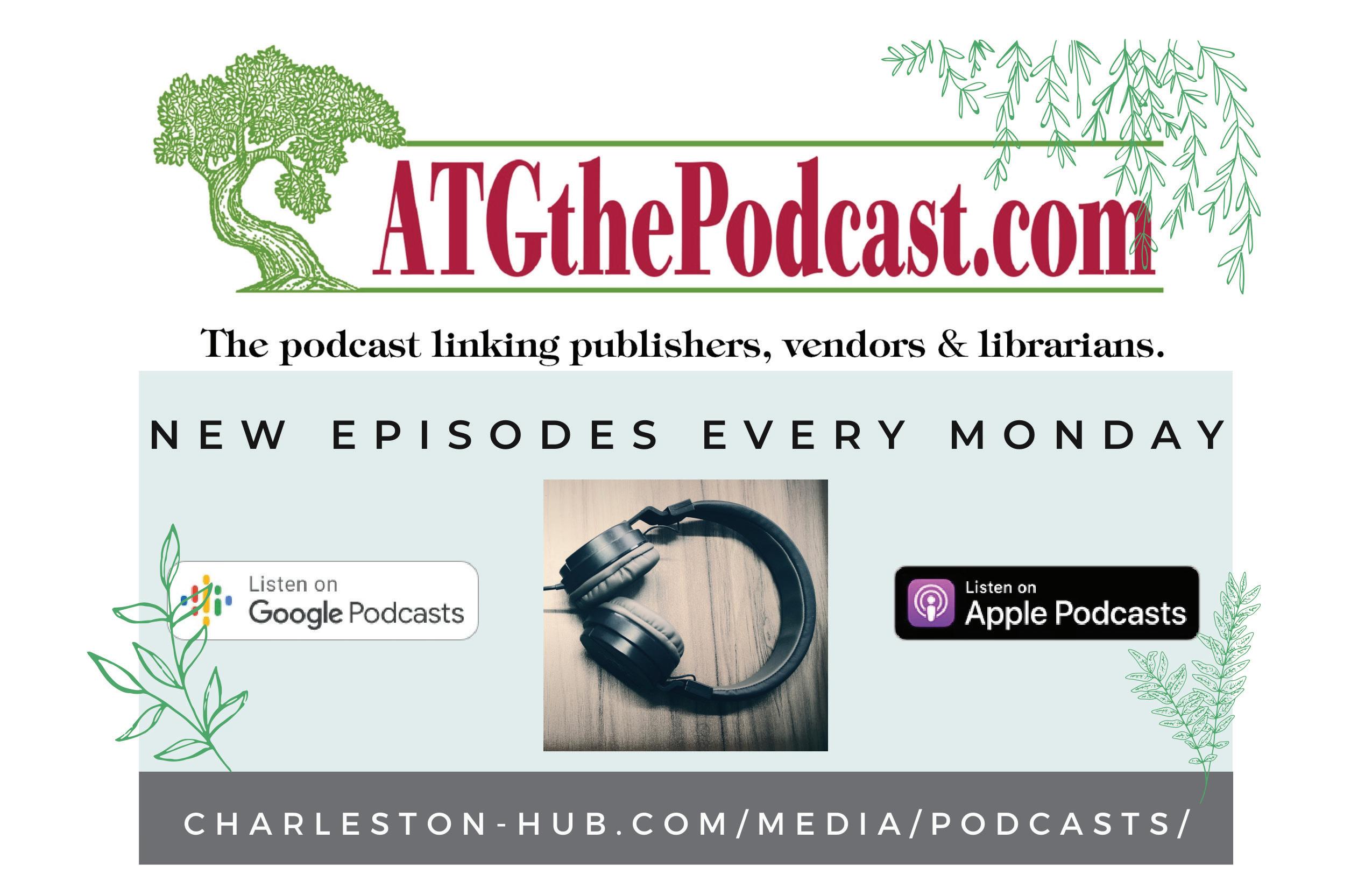
By Claudia Cornejo, MLIS (Tulane University Libraries, Cataloging and Metadata) <ccornejo@tulane.edu>
Column Editor: Lesley Rice Montgomery, MLIS (Catalog Librarian II, Tulane University Libraries’ Technical Services Department)
About the Author: Claudia Cornejo completed her MLIS at LSU in Louisiana in May 2023. Currently she is working as a Library Technician at Tulane University Libraries, where she catalogs resources, including Spanish language print books, and she also works on other special metadata projects in the Library Technical Services Department. — LRM
Doctors universally recommend healthy eating, regardless of their patients’ health concerns or conditions. When I asked health professionals what “healthy eating” means, their responses varied and often felt overly generalized. I found it helpful to browse the internet for websites dedicated to healthy eating, which offer useful tips and actual recipes. However, not all recipe websites are created equal, so some careful consideration is necessary when selecting healthy recipes from these sources. Additionally, it’s important to determine which aspect of healthy cooking you want to focus on: Are you aiming to lose weight, or do you have specific health issues? Are you willing to pay for premium features? Answering these questions will help you choose the right website(s) for healthy cooking.
Delish (https://www.delish.com/) features a wide variety of recipes, including “72 Quick & Healthy Meals That’ll Also Save You Money.” (https://www.delish.com/cooking/menus/g1281/ quick-low-calorie-cheap-meals/) Each recipe is paired with an appealing photo of the finished dish, along with a concise description, ingredient list, and cooking time. The site also offers a paid subscription, granting access to over 20 new recipes each month, in addition to its library of over 30,000 recipes. Members can save unlimited recipes, while non-members can save only one at a time. Furthermore, as a member, you can consult test kitchen editors for tips and tricks to enhance your cooking.
The Allrecipes website ( https://www.allrecipes.com/ ) features a wide array of recipes. You can select the “Healthy” option from a dropdown menu under “Meals.” The Healthy page https://www.allrecipes.com/recipes/84/healthy-recipes/ showcases 84 healthy recipes without the need to navigate to additional pages. If you have specific dietary needs, such as low-fat or low-calorie options, the site provides dedicated pages for those categories. You can also find recipes tailored to help with specific health concerns, such as diabetes and high blood pressure. A useful feature is the ability to email recipes to yourself through pop-ups while browsing. While the site doesn’t offer subscription options, it does have a paid magazine

subscription titled Allrecipes, along with free newsletters like “Dinner Tonight,” “Well Seasoned,” and “Easy Eats.”
The Good Housekeeping website ( https://www. goodhousekeeping.com/) is similar to Delish in that it features “70 Best Healthy Dinner Ideas for the Whole Family” (https://www. goodhousekeeping.com/food-recipes/healthy/g154/healthydinner-recipes/ ). However, healthy recipes are categorized under “Health” rather than “Food.” On the “Health” page, you can find recipes organized by themes, such as “15 Delicious High-Fiber Recipes” (https://www.goodhousekeeping.com/foodrecipes/healthy/g62244602/high-fiber-recipes/). The “Food” section includes a variety of topics, such as “The Best Rosh Hashanah Recipes to Celebrate the Jewish New Year” (https://www. goodhousekeeping.com/holidays/g33996744/rosh-hashanahrecipes/) and “60 Healthy Chicken Recipes That Are Anything but Boring ” ( https://www.goodhousekeeping.com/food-recipes/ healthy/g4056/healthy-chicken-dinners/). While navigating the site, I encountered prompts to subscribe for access to additional recipes after browsing a few. Subscription benefits include opportunities to become a product tester and access to money-saving deals. Users who are not subscribed can only view a limited number of recipes per visit.
The Food Network website (https://www.foodnetwork.com/) primarily features content related to its television shows. Under the dropdown menu “Recipes,” there is a “Healthy” section ( https://www.foodnetwork.com/healthy/packages/healthyevery-week ) where you can explore recipes organized into categories such as appetizers, main dishes, sides, and desserts. Additionally, the “Menus” option allows you to browse recipes by themes, including “ Lightened-Up Comfort Food ,” which features a low-calorie Fettuccine Alfredo recipe (https://www. foodnetwork.com/recipes/food-network-kitchen/creamycauliflower-alfredo-recipe-2105023). By registering for free on the site, you can save recipes and create a shopping list of ingredients. All recipes include a helpful “Ingredient Substitution Guide ” ( https://www.foodnetwork.com/recipes/ingredientsubstitution-guide) to assist with customization for dietary restrictions or food allergies.
The Taste of Home website takes you to a page featuring “53 Dinner Recipes for Weight Loss” (https://www.tasteofhome. com/collection/dinner-recipes-for-weight-loss/). Each recipe includes an instructional video, and you can save them by signing up for free. A rolling menu at the top of the page also provides access to specific recipes, such as “15 Slow Cooker Dinners to Help You Lose Weight” (https://www.tasteofhome.com/article/ slow-cooker-dinners-to-help-you-lose-weight/).
<https://www.charleston-hub.com/media/atg/>
Eating Well (https://www.eatingwell.com/) is a specialized site that organizes recipes in various ways focused on healthy eating and health maintenance. The top menu features categories like Healthy Recipes (https://www.eatingwell.com/ recipes/) and special diets (www.eatingwell.com/category/4243/ special-diets/ ), including Mediterranean and high-protein options. There are also sections dedicated to health conditions like diabetes and meal plans for dinner and weight loss. Creating an account is free, allowing you to save and rate recipes and access newsletters.
The BBC Good Food website ( https://www.bbcgoodfood. com/ ) has an engaging dropdown menu. Besides recipes organized by meal and diet types, you can find recipes by ingredient, such as chicken, fish, seafood, and pasta. The “Health” dropdown includes healthy diet plans and guides on topics like fitness and nutrition (www.bbcgoodfood.com/ health). The site offers a paid app for $0.99 for the first three months, where you can save recipes, access meal plans, and view app-only content. You can also save and print recipes for free by registering with your email.
The Taste website (https://www.taste.com.au) features a health dropdown menu with recipes and health-related articles (https://www.taste.com.au/healthy). Recipes are organized by themes, such as “A Month of 500-Calorie Spring Dinners” (https:// www.taste.com.au/healthy/galleries/500-calorie-dinnersfamilies-budget/jz42x1uo). The site also includes quick recipes and cooking tips. A notable feature is that each recipe has a health score, calculated on a scale of 1 to 10 based on nutrient density and USDA recommendations. You can save and print recipes for free after registering.
The Weight Watchers website (https://www.weightwatchers. com/us/ ) allows users to browse some recipes; however, registration for their weight loss program is required to access their collection of over 11,000 healthy recipes. While you can print a few available recipes, saving them to a personal account is not an option.
The Eat Yourself Skinny website (www.eatyourselfskinny. com ) caters to individuals aiming to eat healthily while primarily focusing on weight loss. Recipes are grouped by meal type — breakfast, lunch, and dinner — and further divided into categories like meat, chicken, or seafood. Each recipe features a structured layout, including: 1) Why you’ll love this recipe, 2) Ingredients you’ll need, and 3) How to make it. You can print recipes without registering, but saving them requires email registration, which includes daily recipe emails.
One could say that there is an infinite number of websites offering healthy recipes. The choice of website depends on the user’s needs and main concerns, whether those are healthrelated, weight loss, or both. Moreover, as highlighted by many of these websites, learning about healthy eating and cooking, along with access to a variety of recipes and instructional
materials, can come with costs. This factor also influences the decision on which websites to use.
In conclusion, based on personal experience, I can say that healthy eating looks different for everyone. Therefore, the variety of resources available online makes it easy to select and customize recipes to create a healthy menu for daily use.
A Month of 500-Calorie Spring Dinners. (n.d.). Retrieved October 3, 2024, Taste. https://www.taste.com.au/healthy/ galleries/500-calorie-dinners-families-budget/jz42x1uo
Allrecipes. (n.d.). allrecipes.com. Retrieved October 3, 2024, https://www.allrecipes.com/
BBC Good Food. (n.d.). bbcgoodfood.com. Retrieved October 3, 2024, https://www.bbcgoodfood.com/
Delish. (n.d.). delish.com. Retrieved October 3, 2024, https:// www.delish.com/
Eat Yourself Skinny. (n.d.). eatyourselfskinny. Retrieved October 3, 2024, www.eatyourselfskinny.com
Eating Well. (n.d.). eatingwell.com. Retrieved October 3, 2024, https://www.eatingwell.com
Food Network. (n.d.). foodnetwork.com. Retrieved October 3, 2024, https://www.foodnetwork.com/
Ingredient Substitution Guide. (n.d.). Retrieved October 3, 2024, Food Network. https://www.foodnetwork.com/recipes/ ingredient-substitution-guide
Lightened-Up Comfort Food. (n.d.). Retrieved October 3, 2024, Food Network. https://www.foodnetwork.com/recipes/foodnetwork-kitchen/creamy-cauliflower-alfredo-recipe-2105023 Lowder, C. (2023, October 21). 72 Quick and Healthy Meals that’ll Also Save You Money. Delish. https://www.delish.com/ cooking/menus/g1281/quick-low-calorie-cheap-meals/
Macavoy, S. (2024, September 24). 15 Delicious High-Fiber Recipes. Good Housekeeping. https://www.goodhousekeeping. com/food-recipes/healthy/g62244602/high-fiber-recipes/
Macavoy, S. (2024, September 24). The Best Rosh Hashanah Recipes to Celebrate the Jewish New Year. Good Housekeeping. https://www.goodhousekeeping.com/holidays/g33996744/roshhashanah-recipes/
Macavoy, S., & Miller, B. (2024, May 28). 70 Best Healthy Dinner Ideas for the Whole Family. Good Housekeeping. https:// www.goodhousekeeping.com/food-recipes/healthy/g154/ healthy-dinner-recipes/
Macavoy, S., & Miller, B. (2024, July 8). 60 Healthy Chicken Recipes That Are Anything but Boring . Good Housekeeping. https://www.goodhousekeeping.com/food-recipes/healthy/ g4056/healthy-chicken-dinners/
Madormo, C. (2024, February 13). 53 Dinner Recipes for Weight. Taste of Home. https://www.tasteofhome.com/ collection/dinner-recipes-for-weight-loss/
SkinnyMs. (2023, December 20). 15 Slow Cooker Dinners to Help You Lose Weight. Taste of Home. https://www.tasteofhome. com/article/slow-cooker-dinners-to-help-you-lose-weight/ Taste. (n.d.). taste.com.au. Retrieved October 3, 2024, https://www.taste.com.au/.
Taste of Home. (n.d.). tasteofhome. Retrieved October 3, 2024, https://www.tasteofhome.com/.
Weight Watchers. (n.d.). weightwatchers. Retrieved October 3, 2024, www.weightwatchers.com/us/
<https://www.charleston-hub.com/media/atg/>
Column Editor: Antje Mays (Collection Analysis Librarian, University of Kentucky Libraries) <antjemays@uky.edu>
Column Editor’s Note: Collections analysis positions are relatively new, reflecting steadily rising need for data-informed collections decision-making. Growing complexity raises the need for analytical expertise, spawning the rise of collections analysis positions. Recent library articles about collections analysis initiatives portray analytical skills and processes, software, analytical tools, and programming languages in applied settings. Yet despite the inspiration provided by these practical examples of analytical projects, the literature on systematic skill development is scant. This two-part series of articles sets out to close this gap: This first article inventories key collection analysis skills from recent job postings and introduces recent analytical projects reported in library literature. The next article will continue with a wide sweep of resources for systematic skill-building and career planning for the growing realm of data and analysis. — AM
Growing complexity across collections and scholarly communications has prompted a rise in splitting collections work into separate strategy and analysis positions. Collections strategy has long been represented as collection development, management, and/or strategy. With growing technologies, measurable data, and analytical tools, library collections work leans increasingly on analysis-derived insights and datainformed decision-making for collection assessment and strategy formulation. With this growing need, data analysis has risen in prominence over time, intensifying the need for expertise and focused time for research design and analytical processes. As analysis functions are spun off into separate positions, collections analyst positions are a more recent phenomenon and fewer in number than the long-established roles in collection development and management. Job postings containing analytical components enumerate desired analytical proficiencies. Literature about recent analysis projects hints at underlying skills and tools used. The first in a two-part series, this article reports on recent job postings’ specified skill requirements and recent analytical projects where analytical tools and skills are brought to life in real-world library settings.
A recently launched job-design study began by examining 15 recent job postings across library collections.1 These postings span the collections realm. While analytical tasks toward decision-making are mentioned in many of the postings, a few of these positions focus specifically on collections analysis and provide more detailed analytical skill requirements. Skill needs

gleaned from job postings encompass position-specific skills required for success in collections roles, data and analytical competencies, and proficiencies in software, programming, and analytical tools. Position-specific skill needs are grouped around major collections functions, encompassing experience in (1) budgeting, financial management and accounting, (2) assessment, as well as (3) data-informed collection evaluation and data-informed collection strategies. Data skills and analytical competencies encompass (1) tracking, analyzing, interpreting, and reporting data, (2) management and analysis of quantitative data, (3) data visualization, (4) knowledge of statistics, and (5) coursework in applied statistics, data science, or business analytics. Proficiencies in software, programming, and analytical tools specified across the job ads encompass (1) ILS reporting and analytics modules, (2) standards such as COUNTER, SUSHI, and ONIX, (3) software and analytical tools including Excel, Power Pivot, Python, R, Stata, SAS, SPSS, and Tableau, (4) SQL, (5) relational database design and programming, and (6) presentation software such as PowerPoint.
A recent library analytics panel2 outlines principles of datainformed collections decision-making within a philosophical framework: Ethical considerations are key in balancing student progress and outcomes with confidentiality and privacy protections. Although libraries have a long tradition of collecting quantitative data points and transactional statistics, measuring library impact is key to deriving meaning from the data. This shift toward documenting impact requires determining what to measure and considering the context of potential data points and data-informed follow-on actions. The panelists cited the example of endeavoring to measure transformative agreements’ value — metrics such as extent of faculty publications in the journals and the use of pre-paid APCs do not necessarily capture the value of pointing faculty toward publishing in the journals covered by the transformative agreement when those journals are not a draw for faculty publications. The panelists also cited the example of measuring COUNTER data and pointed out the inefficacy of heavy reliance on cost-per-use measures that do not account for small user populations and thus do not readily measure actual use intensity within the specialized disciplinespecific small user populations without ingesting additional data from other sources. The panelists noted that actionable measurements require qualitative reflection on what to measure and why as a basis for informimg which data to ingest and how to analyze the logical relationships between measurable components — a philosophical foundation that considers the underlying reasons behind the measurements.
<https://www.charleston-hub.com/media/atg/>
Data-informed collections decision-making is illustrated in a twelve-branch public library system’s analysis of usage and subject-based demand: The author developed two analysis tools to track demand for titles by subjects and branch locations to inform how many copies and which subject concentrations to house at each branch library.3 Similarly, in a small college setting that also supports graduate programs in business and professional fields, the library analyzed Covid-era resource usage and access modality. The authors recap a brief history of the library world’s increasing adoption of digital content, followed by analysis of its own academic community’s usage patterns by resource, vendor portal, and subjects, parsed by on-campus and off-site resource access. Data-derived insights informed follow-on decisions for resource allocations by format and subject coverage.4 On a related note, another project’s citation analysis using Google Scholar to identify important scholarly works provided additional data elements for informing print monograph retention and withdrawal decisions.5
For broad-based qualitative collection assessment and gap analysis, the author in a research-intensive doctoral-level university setting explored the complementary links between quantitative data points and trends and qualitative knowledgebased evaluations. The author distinguishes between quantitative analysis of collection-related measures to inform on-the-ground operations on one hand, and the qualitative knowledge-content-based assessment of the collection’s compatibility with broader intellectual trajectories to support strategic decisions on the other hand.6
Collection visualizations illuminate library-collections gap analysis and broader understanding of collection strengths and characteristics. Two recent examples of collection visualization illustrate how audiences benefit from visual communication of insights from large amounts of complex underlying data. The first study introduces a sweep of library data visualization methods, then presents the author’s own library data analysis and Tableau visualizations by descriptors including subjects, publication date ranges, and material types using bar and bubble charts for at-aglance snapshots of collection characteristics.7 The second study visualized collection metadata at scale using ArcGIS to illustrate trends and conceptual clusters including content analysis and geographic origin and focus. These factors informed subsequent decisions toward diversifying the collection.8
Collection diversity audits benefit from systematic data analysis for illustrating conceptual and geographic coverage concentrations as starting points for further collection development decisions. The first of three recent studies reports a large research-intensive university library’s largescale exploration of collection diversity by analyzing 2.8 million geographic subject headings in its MARC metadata.9 The second study10 offers historical roots of the principle of library collections mirroring the demographic and cultural characteristics of their users, then reports how several public libraries analyzed their books’ geographic, demographic, and cultural characteristics based on fictional characters and other fictional and nonfictional focal points. Some libraries designed their own in-house diversity analysis methods, while other libraries utilized the vendor tools iCurate inClusive11 and collectionHQ12 in their diversity audits. The third study13 reports a university library’s diversity audit of its children’s picture book collection using the vendor tool Diverse Bookfinder. 14 This study compared the geographic, demographic, and cultural attributes
of fictional characters and non-fictional subjects against the local area’s demographic data to determine the collection’s relatability to local library users.
Additional insights for collection decisions can be gleaned from data beyond the library sphere: In the first of two studies on student performance measures as determinants for collection assessment and collection development strategies, students’ academic performance and learning outcomes informed music score collection development. 15 In the second study, student learning outcomes and course descriptions provided performance metrics and intellectual content considerations to inform collection development focused on digital primary sources.16
Several analyses featured the use of specific analysis tools and programs: A public library system analyzed returns on its investments in library resources using a customized Python script. The analysis quantified the cost savings gained by patrons as a result of the library’s purchase of resources now being used by said patrons. This study illustrated the importance of formulating a clear research question before setting out to design the script for measuring outcomes of library investments.17 A large research university library conducted a correlation analysis of the relationships between journal usage, publication, and citation metrics using a purpose-designed relational database written in Microsoft Access.18 Several libraries report on decision insights gleaned from OCLC’s GreenGlass analysis tool: Following the merger of two universities, the merged libraries’ monograph collections required systematic evaluation and weeding decisions. GreenGlass’s intuitive webbased reporting and at-a-glance overview of holdings across customizable comparator libraries and archival collections smoothed the library’s path to decision insights.19 Another GreenGlass use case based its monograph weeding decisions on rules-based quantitative analysis and expert content-driven qualitative analysis. This analysis supported decisions regarding long-term monograph maintenance and repurposing some print spaces for other student success uses.20 Monograph analysis via GreenGlass for Groups informed the Michigan Shared Print Initiative’s systematic establishment of its collaborative print monograph collection.21 OCLC’s GreenGlass for Serials was recently developed based on the monograph-focused versions’ structure.22 Several case studies report the benefits of data as a first step toward serials decisions.23
While analytical methods abound, reality-based insights cannot be achieved without reliable data. Speakers in a recent panel stressed the importance of present and consistently structured data as fundamental to deriving meaning. Recent panelists described how missing and inconsistent serials data can thwart comprehensive serials analysis.24 Similarly, the Catalog Management Interest Group reported on the difficulties of comprehensive collection analysis in the face of missing data, specifically citing missing call numbers on ebook records as a data gap posing hindrances to comparing print and ebook collections.25
The job postings above emphasize skills in analytical thinking, specific analytical and visualization tools, programming languages and database design, knowledge of data and library standards, and proficiency in data-informed collections decision-making. The practical analysis projects reported above provide living examples of the analytical skills and tools, along with observations on
<https://www.charleston-hub.com/media/atg/>
data needs and best practices. For librarians seeking to deepen data and analytical skills, Stubbing’s overview of data-informed decisions provides an excellent and comprehensive introduction to methods and skills, illuminated by library projects to exemplify practical application of these skills.26 White’s comprehensive spreadsheet instruction covers spreadsheet skills from basics
through advanced analytics for library contexts.27 Kanji’s classic on statistical tests provides an overview of statistical methods, the purposes of the major types of statistical tests, and how to structure statistical tests.28 The next article will follow-up with a wide range of resources for systematic skill-building in analytical principles, methods, and tools.
1. Anonymized jobs used for text analysis and visualizations (xlsx). Compiled from Chronicle and ARL Jobs by author. https://works. bepress.com/antjemays/54/
2. Maria Frahm-Arp, Andrew C White, and Hugh Murphy, moderated by Amy Thurlow. “Session 3: Analytics to Make Informed Decisions: Empowering Libraries with Data-Driven Decision-Making and User-Centric Services.” Open Perspectives Forum 2024. Panel, September 26, 2024. https://communities.ebsco.com/posts/session-3-analytics-to-make-informed-decisions?channel_id=open-perspectivesforum-2024
3. Jay Peters. 2020. “Collection Development and Data: Using Data to Improve Decision Making Processes.” Alki: The Washington Library Association Journal 36 (1): 19–20.
4. Russell Michalak and Monica D. T. Rysavy. 2022. “Who Is Using What, Where? An Analysis of Stakeholder Usage of Services and Collections during the COVID-19 Pandemic.” Journal of Library Administration 62 (3): 376–86. doi:10.1080/01930826.2022.2043692.
5. Andrew Dudash and Jacob E. Gordon. 2024. “Cited by How Many? Using Google Scholar for Print Monograph Collection Analysis at a Small Academic Library.” Collection & Curation 43 (3): 69–75. doi:10.1108/CC-02-2023-0012.
6. Qiana Johnson. 2016. “Moving from Analysis to Assessment: Strategic Assessment of Library Collections.” Journal of Library Administration 56 (4): 488–98. doi:10.1080/01930826.2016.1157425.
7. Sylvia Orner. 2023. “Data Visualization for Collection Analysis: Using Tableau to Visualize an Academic Library Collection.” Pennsylvania Libraries: Research & Practice 11 (1): 34–44. doi:10.5195/palrap.2023.278.
8. B. Grantham Aldred. 2019. “Mapping the Inside of a Collection: ArcGIS as Content Analysis Tool.” Qualitative & Quantitative Methods in Libraries 8 (4): 479–93.
9. Jordan Pedersen. 2022. “Measuring Collection Diversity via Exploratory Analysis of Collection Metadata.” Serials Librarian. Vol. 82. doi:10.1080/0361526X.2022.2028499.
10. Anitra Gates, Amberlee McGaughey, Celia Mulder, and Sarah Voels. 2022. “Using Data From Collection Diversity Audits.” Computers in Libraries 42 (9): 15–19.
11. iCurate inClusive. 2024. Ingram. Company product webpage. https://www.ingramcontent.com/libraries/collection-development/ icurate#inclusive
12. collectionHQ. 2024. Glasgow: Bridgeall Libraries, Ltd. Company product webpage. https://www.collectionhq.com/
13. Linda Salem. 2022. “How Diverse Is the Academic Library Children’s Picture Book Collection? Using Diverse Bookfinder’s Content Analysis, Demographic Data, and Historical Bibliographies to Analyze a Picture Book Collection.” Collection Management 47 (2–3): 115–35. doi:10.1080/01462679.2021.1960668.
14. Diverse Bookfinder. 2024. Diverse Bookfinder. Company product webpage. https://diversebookfinder.org/
15. Bret McCandless. 2024. “Using Student Performance Data for Music Score Collection Assessment and Development.” Music Reference Services Quarterly 27 (2): 59–72. doi:10.1080/10588167.2023.2204037.
16. Challen R. Wright and Rayla E. Tokarz. 2024. “Analyzing Course Descriptions and Student Learning Outcomes for Digital Primary Source Collection Development.” Journal of Electronic Resources Librarianship 36 (2): 128–38. doi:10.1080/1941126X.2024.2337587.
17. Ross Hanney. 2023. “Reorienting Collection Analysis: Cost-Effective Item-Level Analysis and Machine Learning in Public Libraries.” Information Technology & Libraries 42 (4): 1–6. doi:10.5860/ital.v42i4.16987.
18. William H. Mischo, Mary C. Schlembach, and Elisandro Cabada. 2024. “Relationships between Journal Publication, Citation, and Usage Metrics within a Carnegie R1 University Collection: A Correlation Analysis.” College & Research Libraries 85 (2): 234–53. doi:10.5860/crl.85.2.234.
19. Marie Day and Xueying Chen. 2023. “How We Used OCLC’s GreenGlass to Manage Monographs.” Computers in Libraries 43 (3): 4–7.
20. Tim Held, 2018. “Curating, Not Weeding.” Technical Services Quarterly 35 (2): 133–43. doi:10.1080/07317131.2018.1422882.
21. Helen N. Levenson. 2015. “Michigan Shared Print Initiative and GreenGlass for Groups for Data Analysis in Developing a Collaborative Collective Collection.” Journal of Interlibrary Loan, Document Delivery & Electronic Reserve 25 (3–5): 89–105. doi:10.1080/107230 3X.2016.1254701.
22. Andy Breeding, Katy Gabrio, Ann Roll, and Barbara M. Pope. 2023. “Serials Analysis Directions Part 2: Finding Gems, Pulling Weeds, and Reclaiming Space: Case Studies from GreenGlass for Serials.” NASIG Proceedings 37:112-119. doi.10.3998/nasig.4028.
23. Luca Filippi, Rebecca Tatterson, Jen Montavon-Green, Michelle Elaine Colquitt, Amanda Calabrese, Julie Schaeffer, and Selena Chau. 2023. “Serials Spoken Here.” Serials Review 49 (3/4): 116–24. doi:10.1080/00987913.2023.2174400.
24. Donna Guerin and James Simon, moderated by Andy Breeding. “Practical Tips for Selecting, Implementing, and Using GreenGlass for Serials.” Panel, September 26, 2024. https://www.oclc.org/en/events/2024/practical-tips-for-selecting-implementing-usinggreenglass-for-serials-sept-fy25.html
25. Jeanette Kalchik and Tang Tian. 2023. “Collection Analysis Using Different Tools: Report of the Catalog Management Interest Group Meeting, ALA Core Interest Group Week, March 2023.” Technical Services Quarterly 40 (3): 214–19. doi:10.1080/07317131.2023.22 26436.
26. Amy Stubbing. Data-Driven Decisions: A Practical Toolkit for Librarians and Information Professionals. London: Facet, 2022. https:// saalck-uky.primo.exlibrisgroup.com/permalink/01SAA_UKY/ht6egi/alma9941788504702636
27. Bruce White. Spreadsheets for Librarians: Getting Results with Excel and Google Sheets. 1st ed. New York: Libraries Unlimited, 2021. doi:10.5040/9798216017967.
28. Gopal K. Kanji. 100 Statistical Tests. 3rd ed. London; Sage Publications, 2006.
<https://www.charleston-hub.com/media/atg/>
By Column Editor: Michelle Flinchbaugh (Digital Scholarship Services Librarian, Albin O. Kuhn Library & Gallery, University of
Maryland Baltimore County, 1000 Hilltop Circle, Baltimore, MD 21250; Phone: 410-455-3544)
<flinchba@umbc.edu>
In September, I wrote about the University of Maryland, Baltimore County’s (UMBC’s) newly formed Digital Scholarship Services (DSS) unit’s activities from 2018-2023. UMBC is a medium sized, fast-growing, new R1 university. The DSS unit was established with our Institutional Repository (IR) with the intent that it would do more than run the IR. In 2023, DSS hired a staff person to free time to work on the following:
1. Develop infrastructure and support for open access (OA) and research impact management. Decrease the size of the IR backlog.
2. Develop infrastructure and support for data management.
3. Develop infrastructure and support for open pedagogy.
4. Develop infrastructure and support for open science/ replicability of research.
Two separate public Maryland universities have very similar names — the University of Maryland, Baltimore (UMB), and UMBC. This causes a plethora of issues as those unfamiliar with Maryland universities mistake the two. Issues range from books ordered by UMB being sent to UMBC, new UMBC faculty erroneously giving their affiliation as UMB and versa, and citations databases crediting works clearly written by faculty with UMBC to UMB. Occasionally, UMBC is also mistaken for the University of Maryland, College Park, because as the Maryland flagship university, it’s usually called the University of Maryland, without the College Park to qualify which University of Maryland.
At the request of the Provost’s Office and the Office of the President of Research and Creative Achievement (ORCA), we took on correcting erroneous affiliation in Scopus and Web of Science in hopes of boosting our declining international rankings. A VP in ORCA had begun work on correcting Scopus affinitions and had already identified 2,375 documents misidentified as UMB instead of UMBC and Scopus had corrected them, resulting in UMBC works having been cited more than 10,000 more times than prior to the corrections. In early 2023, in advance of hiring our new staff person, we met with him to learn about his process. He introduced us to the Scopus staff he was working with, and we took over that work from him. I’ll note that UMBC doesn’t subscribe to Scopus so doesn’t have access to it, so our process relied entirely on Elsevier staff who were extremely helpful in getting this work done.
Following the established procedure, I requested author reports from Scopus for the University of Maryland, Baltimore County (UMBC), University of Maryland, Baltimore (UMB), and the University of Maryland, College Park (UMCP or UMD).
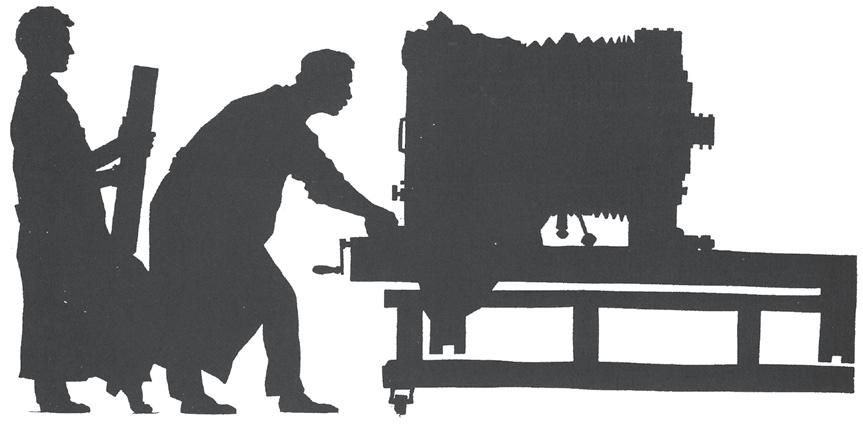
This report includes the author’s name, the number of times their works have been cited, their campus, and subject area keywords. I then combined the three reports, sorted by number of citations, highest to lowest, and worked through them from top to bottom. Given the number of corrections already done, a quick google search resolved most authors’ affiliations to be correct but for a handful. For these, Scopus provided a more specific author report showing the details of each work and, in many cases, the work and publisher’s metadata said UMBC but Scopus had recorded the affiliation as UMB. We annotated the detailed author spreadsheets with the corrections, and Scopus made them.
During this process, we learned that Scopus had started to identify UMBC works based on its zip code, 21250. As we were going through these corrections, it became clear that the vast number of remaining issues related to UMBC’s pre-1999 zip code, which was 21228. Scopus provided a report with all works with the 21228 zip code where the affiliation wasn’t UMBC and by then we’d hired the new staff person, and she went through them, annotated, and Scopus also made those corrections.
In 2024, we began work on correcting affiliations in Web of Science, which I’ll write about later.
When I proposed that DSS develop infrastructure and support for OA, I’d done a few presentations on rights retention policies aka OA or Equitable Access Policies which fell flat. I thought we needed a new approach and planned to instead begin talking to faculty about a variety of different ways that we could support OA. Then a faculty member contacted me with a question about one of his works in our IR which had an embargo on it. It turned out that he was present at one of the presentations I’d given and also a member of UMBC’s Faculty Senate (FS) Executive Council. He realized that a policy would help to eliminate embargo periods and asked me to do my presentation on OA policies for the FS Executive Council. They thought that UMBC should have a policy and formed a FS OA Policy Committee.
With members from all three of UMBC’s Colleges, the OA Committee reviewed OA Policies of UMBC peer institutions, and the newly passed Equitable Access Policy at University of Maryland, College Park (UMCP). The Committee was also interested in establishing an OA Fund so also reviewed those at peer institutions and the UMCP. The group then produced charts comparing the differences between the policies and funds, and debated how UMBC would approach. With decisions made, using the UMCP Policy as a template, we altered it to fit with the group’s decisions. The group also produced a recommendation that the Provost establish a one million dollar OA Fund for OA article processing charges (APC) and OA Agreements.
The Policy and Fund proposal were scheduled to go to the FS Executive Council in March 2024, and for a vote in the FS in April 2024. From January until the FS vote, I did extensive
<https://www.charleston-hub.com/media/atg/>
outreach, giving more than 20 presentations to academic departments and various other groups. Not all departments were able to invite me to a meeting, and I emailed faculty in those departments’ links to the proposal along with an OA FAQ, and OA Policy FAQ, and an OA Fund FAQ. During that time, we also sent the policy for legal review, and I answered various questions for campus counsel.
At the March 2024 FS Executive Council meeting, they sent the OA Fund proposal back to committee. The proposal called for funding to be awarded on a first come, first serve basis, and faculty in the College of Arts, Humanities, and Social Sciences (CAHSS) were concerned that the STEM colleges would gobble up all the money so that they wouldn’t get a fair share of the funding. That majority of faculty senators are in CAHSS, which made it unlikely to pass as written. Further, the Executive Council knew that the Provosts’ Office alone wouldn’t be able to provide a million dollars, so various campus administrators would need to be convinced to contribute to the fund. A new OA Fund Committee began work in the fall semester of this year to address the issues with the proposal. I’ll write more about this work later.
In April, the OA Policy passed a vote of the FS with minor revisions from legal and thereafter I created a Libguide on the policy, here: UMBC Open Access Policy. The UMBC President’s approval of the policy is still pending.
New National Institute of Health (NIH) data management and sharing requirements became effective on January 1, 2023. In the first two weeks of the year, our Office of Sponsored Programs (OSP) received the first question about them and forwarded it to me, and we agreed that UMBC has no system, person, or office that provides monitoring of data management plan compliance, so it would be up to the individual researcher. We also met to coordinate and link various bits of related info on our respective websites.
At that time, I mentioned that the Library was planning to increase support for data management and sharing upon the hire of a new staff, but on a very limited basis, and asked for their thoughts on what we should do. After some research and communication, we decided the Library would pilot research data
services for NIH Principal Investigators (PIs) only. First, because UMBC has no medical or nursing school, the number of NIH grants we have is quite limited so the work wouldn’t overwhelm DSS’s limited resources. Second, ORCA was working toward increasing our portfolio of NIH Grants and the availability of the service might make researchers more willing to apply for NIH grants. Finally, it also supported the NIH switch to the new and more stringent data management and sharing requirements. The Pilot was advertised broadly, and during the first year we spent about 4 hours assisting three researchers.
At a webinar I attended, I heard from another Librarian that their faculty were receptive to 10-15 minute mini-presentations on data management and sharing topics, so we decided to see if faculty on our campus were receptive to them. I designed a short presentation titled “Using DMPTool to Create a Data Management and Sharing Plan,” “Documenting Data for Research Reproducibility,” and “FAIR Data” and gave three presentations, one at a departmental meeting and the other to individual faculty members. During the course of the year, I was also asked to present on data management topics to a couple of committees, and I also talked with a new grants administrator in one of our colleges about data management.
As I talked with people, I heard about various issues and problems that researchers were having with research data. To try to get a handle on the issues and problems that exist around research data at UMBC, I prepared a survey on research data management needs. I’ll write about the results of that survey and other work we’ve done on research data in another article.
While the OA Policy is a major step toward developing infrastructure and support for OA, the OA Fund Committee will require that I continue to work on OA extensively for another year while also increasing the research data work. We did a lot of work on affiliation corrections, but we didn’t reduce the size of the IR backlog. Further, all of the OA outreach increased the IR submissions coming in, presenting the possibility that the two-year backlog of IR work would grow rather than shrink. This required a shift in focus to do everything possible to make our IR processes more efficient, and I’ll also write about that effort in the future.
<https://www.charleston-hub.com/media/atg/>
Column Editor: Steve Rosato (Director of Digital Book Services for Academic Libraries, OverDrive, Cleveland, OH 44125) <srosato@overdrive.com>
When it comes to the Open Access (OA) content movement, we have certainly come a long way. The impetus for this movement started at the tail end of the twentieth century, as academic librarians around the world faced a growing challenge in trying to include as many journals as possible in their collections while balancing the constraints of ever-tightening budgets and rising subscription costs for publications. This led to difficult choices.
At the same time, the emergence of the Internet presented a new means for disseminating valuable research information at little or no cost. This confluence of events helped to give rise to OA.
This important movement has continued to grow, with numerous research institutes and universities around the world supporting OA, along with governments in many countries advancing mandates in support of OA publishing. As the debate over OA continues, it is worth examining where this discussion stands today.
There are two sides to the OA content coin. The most obvious benefit is the substantive cost savings for institutions from high-priced subscriptions, allowing budget resources to be directed to additional priorities. OA content delivers a host of systemic advantages in widening access, making knowledge equitable and inclusive, increasing innovation and collaboration, as well as fostering a democratic and efficient infrastructure for academic publishing.
On the flip side, OA is not a sustainable business model. Publishers and authors lose the revenue on which they depend. After all, publishers have staff to pay, must fund employee benefits, meet the demands of infrastructure costs for creating digital and print editions, and facilitate quality control. For publishers, creating new revenue models to mitigate losses created by the trend toward OA may be possible. Still, there needs to be more recourse for replacing that revenue stream for authors.
The benefits of OA for institutions are clear and apparent, especially as access needs and budget pressures grow. At the same time, there is an upside for publishers who facilitate OA, too. Publishers can offset the costs of OA by charging authors (or their institutions/funders) Article Processing Charges (APCs), a standard model where authors or their sponsors pay to make their work freely available. Some publishers have embraced this approach, offering “transformative agreements” or Readand-Publish models with universities and research institutions, where institutions pay a combined fee that covers both access to subscription content and APCs for making some articles OA.

OA is also a means by which publishers can strengthen their brand and reputation within the academic community and serve as an avenue to meet compliance requirements. This service will be increasingly important as some universities and research institutions mandate OA policies going forward. Embracing OA offers publishers a vital opportunity to position themselves as proactive contributors to the future of academia, serving as innovators and thought leaders.
Another plus for publishers in offering and promoting OA options is the potential to create stronger partnerships with academic libraries. Through shared values of democratizing knowledge, publishers, institutions, and authors can help to fuel a more open and inclusive ecosystem.
Governments and global initiatives are increasingly favoring open science and open knowledge. Many government and institutional funders, especially in Europe through Plan S and in the U.S. through the National Institutes of Health, are pushing for greater OA. This pressure comes in the form of mandates that research must be published as OA. According to the Registry of Open Access Repositories Mandatory Archiving Policies (ROARMAP) — a searchable international registry that maps the expansion of OA mandates adopted by universities, research institutions, and research funders — more than 1,000 policies have been put in place around the world.1
ROARMAP estimates there are 148 OA policies currently in the U.S. and 120 in the UK.2 Presently, the U.S. and the UK are responsible for nearly 25% of global OA policies. However, the same report predicts similar policies will soon be mandated across China, Japan, South Korea, and India, spurring the international OA movement. The government’s embrace of OA follows in the footsteps of universities and other research institutions that champion OA policy creation and implementation. To date, academic and research institutions are responsible for nearly 80% of all OA policies worldwide.3
“Overdrive has invested in updates across its platforms to support OA availability.”
By offering OA options, publishers have a chance to play an instrumental role in supporting this movement. An embrace of OA also ensures publishers remain compliant with these government mandates and can continue to attract research funded by these bodies. Publishers will benefit by positioning themselves as forward-thinking players in line with these evolving policy trends, gaining goodwill with governments and academic institutions. Publishers can also tap into sustainability funding, grants, or institutional partnerships designed to support open publishing infrastructure and initiatives. These partnerships can compensate for some of the lost revenue from subscriptions.
<https://www.charleston-hub.com/media/atg/>
For community colleges, as well as colleges and universities that are bouncing back from the historic enrollment declines of the past 5+ years, OA content plays a vital role in addressing some of the resource challenges they face. These institutions can find support from partners, such as OverDrive, through its Libby and Kanopy online apps. To that end, Overdrive has invested in updates across its platforms to support OA availability. With a focus on a quality selection of OA content, OverDrive offers a compelling resource for colleges and universities, ensuring a return on investment for this thoughtfully curated digital collection.
Some notable OA content available through OverDrive includes a newly added NASA collection to Kanopy. Libby has a robust OA catalog, including collections from Taylor & Francis, New York University Press, Springer Nature, BiblioAsia, Central European University Press, and Duke University Press, to name some of the more prominent suppliers. Springer Nature states that it uses its OA program under the Springer, Palgrave Macmillan, and Apress imprints to support its broader commitment to the United Nations Sustainable Development Goals.4 Taylor & Francis’ OA catalog includes books and chapters across all subjects covered by Routledge, CRC Press, and their other imprints in humanities, social sciences, and behavioral sciences.5 Central European University Press offers a wide range of humanities and social sciences subjects.6
“Many government and institutional funders, especially in Europe through Plan S and in the U.S. through the National Institutes of Health, are pushing for greater OA.”
While open access hasn’t transformed the academic publishing landscape overnight, it has firmly established itself and continues to gain momentum. The question now is less about whether OA will become dominant and more about how quickly and in what forms.
The future will see continued growth in OA content as business models evolve and ongoing negotiations between institutions, funders, publishers, and researchers create sustainable and equitable systems for scholarly communication.
It is worth noting that this transition is not uniform across all disciplines or global regions, and the specifics of how OA will develop may vary. However, the overall direction towards greater openness in academic content seems crystal clear. A broad embrace of OA is what is needed to ensure the most robust environment for academic pursuit. All stakeholders have an important role to play in fulfilling this promise. Clearly, we have come a long way, but there is more hard work to be done.
1. https://www.f1000.com/resources-for-researchers/openresearch/open-access-policies-mandates/
2. https://www.f1000.com/resources-for-researchers/openresearch/open-access-policies-mandates/
3. https://www.f1000.com/resources-for-researchers/openresearch/open-access-policies-mandates/
4. https://www.springernature.com/gp/researchers/sdgprogramme/oa-sdg-books
5. https://marketplace.overdrive.com/Marketplace/ SimultaneousUse
6. https://marketplace.overdrive.com/Marketplace/ SimultaneousUse
<https://www.charleston-hub.com/media/atg/>
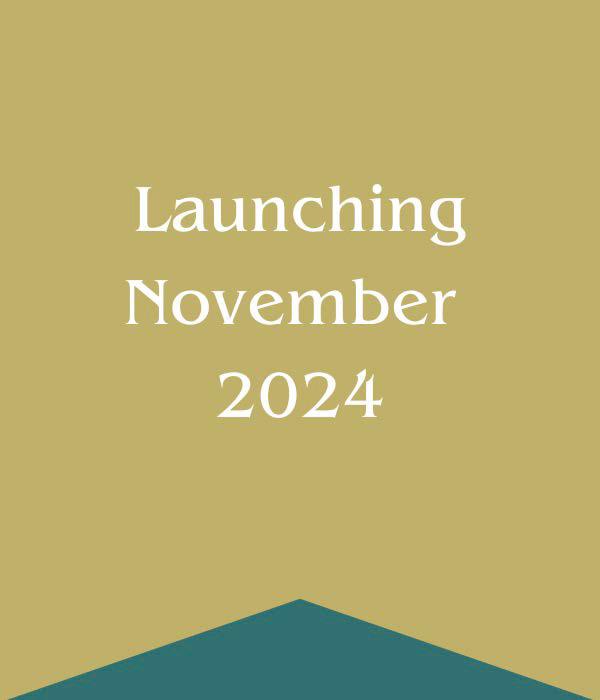
Katina is a digital publication that uniquely addresses the value of librarians to society and elevates their role as trusted stewards of knowledge. Named after Katina Strauch, the visionary founder of the Charleston Conference, it is written by and for the international communities of librarians, vendors, and publishers.
Katina’s mission is to improve library and information science and inspire a sense of fulfillment among its worldwide professionals. It delivers content that is easy to understand, engaging, informative and accurate. It covers key topics, emerging trends, transformative technologies, and library resources, and offers guidance on career and organizational development. By celebrating librarian contributions to open science, scholarship, and the enrichment of society, Katina aims to provide a springboard for community discussion and engagement through three content sections.
Katina Features and Editors:


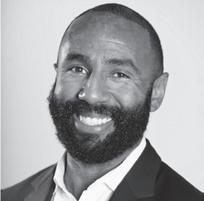
Resource Reviews: Builds on the groundwork set by The Charleston Advisor to provide critical reviews of products and resources for the information industry.
Senior Editor: Jill Emery
Collection Development and Management Librarian, Portland State University
Open Knowledge: Addresses the evolving roles of libraries and librarians and their contributions towards an open knowledge ecosystem.
Senior Editor: Curtis Brundy
Associate University Librarian for Scholarly Communications and Collections, Iowa State University
The Future of Work: Offers practical insight into the future of work, careers, and organizational development.
Senior Editor: Tony Zanders Founder and CEO, Skilltype
Managing Editor and Executive Director: Leah Hinds | Developmental Editor: Elizabeth Weiss
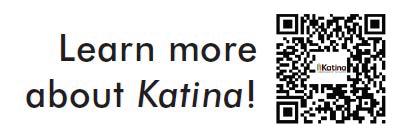
Interview conducted by Michael Upshall (ConsultMU) <michael@consultmu.co.uk>
Transcript edited by Leah Hinds (Executive Director, Charleston Hub) <leah@charlestonlibraryconference.com>
The following is an excerpt of an interview that was conducted for ATG the Podcast that aired on September 8, 2024. Listen to the full episode here
Michael Upshall: Well, Clifford, welcome to ATG the podcast. We’re very pleased to have you on the podcast today. You’ve been involved with the Coalition for Networked Information for many years. What we’d like to do today is to talk a little bit about your background, how you got to the Coalition, and a little bit about your role there. So thank you for joining. It’s great to be here with you.

When you started with your studies, you actually started out studying maths before moving to computing. Why did you switch from one to the other?
Clifford Lynch: Well, a couple reasons, and you have to remember how long ago that was. I mean, we’re talking I started college in 1972, gosh, and I really had no exposure to computers until my second year in college. You know, they just weren’t a thing for most students in high school at that time. So, it was a mix of just discovering something that was really interesting and also realizing that much as I enjoyed mathematics, I wasn’t really sure I wanted to spend my life as a research mathematician.
MU: It sounds like very soon after getting involved in computing, you found yourself on a very interesting library project to California doing online catalogs.
CL: Yeah, actually, I had started about the same time, shortly after I started getting involved in computers. I ran into a professor at Columbia’s library school, Theodore Hines, who was doing a lot of work with a language called SNOBOL4, a symbolic text and computing language. And through him, I got very interested in a lot of the sort of textual and related applications of computing, which at that time were very esoteric and connected up with a fellow named Ed Brownrigg, who was at New York University. I went to work for him when I was still in college doing some library applications there. Then in 1980, give or take, I went with Ed Brownrigg to the University of California Office of the President, which was the headquarters for what was at the time a nine-campus system, to build a very large scale library automation system, basically a union catalog for all of the collections of the University of California’s roughly 100 libraries, under the slogan, “One university, one library.” The idea being anyone at any of the campuses could search the entire collection. And that was, of course, backed up
with a whole series of interlibrary loan arrangements and things to physically get material to people. So that was, for the time, an enormous project, and really quite innovative. One of the things that’s really striking to me about it, even looking back, is that this was about the same time as automatic teller machines were coming into fairly wide deployment. If you think about the public’s interaction with computers, the first places they were seeing it were ATMs and library catalogs, which was just fascinating. So it was a whole adventure trying to make this kind of thing user-accessible. And as we went down the path from there, we moved on to many other things. One of the things we did very early was to make the system accessible not just from in library terminals but first from dial-up terminals and then later on from Internet access and to open that up, really because it was a public institution in California, to the world — which was quite unheard of at the time. So we actually had people using the system from all over the globe. It is really quite interesting. As things progressed through the 80s, we also started putting up abstracting and indexing databases. One of the early ones we did, which was very high impact, was to add the National Library of Medicine’s Medline database to the system, which again was striking, in that it really opened up health information to the public in a way that had never been done before. And at a scale that had never been done before. Let us say it was met with mixed reactions by physicians around California when patients walked in with stacks of article abstracts asking, “Well, what about this?” But that was a wonderful experience. We had a great team there.
The last thing I’ll just mention about the University of California, because it’s relevant for a lot of things, is that in order to really deploy that online catalog at that scale, we needed a pretty sophisticated computer network. And we actually worked with Bolt, Baranek and Newman (BBN), the original contractor on the ARPANET, to put in a ARPANET-like packet switch network to support this, which became the basis for a lot of the inter-campus networking at the University of California until I left the university in ’97. Inter-campus networking was essentially a library function that reported to me, a library automation function. So, I was really very deeply involved in networks.
MU: It sounds amazing that you had this first involvement with libraries and you got a chance to work with one of the biggest and, still today, one of the largest catalogs. The California e-scholarship system is one of the biggest institutions
<https://www.charleston-hub.com/media/atg/>
and repositories. It’s quite amazing and sort of fortuitous. They’ve continued to be a leader throughout. So, do you think that early experience sort of stood you in good stead for your later involvement in CNI?
CL: Yeah, the California Digital Library (CDL) and the UC Libraries collectively are wonderful. Absolutely remarkable. Fabulous work. Yeah, because a lot of what played out through my time at CNI really was outgrowth, extensions and evolutions of things that got their start back when I was at UC. Network -based computing, the shift to digital content, and then the shift to largely centralized digital content. All of the policy issues around government information on the Internet, scholarly publishing on the Internet, many of those things had their roots back then.
MU: Let’s talk about the Coalition for Networked Information. You weren’t actually the founder, but you were there pretty early on. I think you joined around 1997, but I think it was Paul Evan Peters who started it. What was the basis? What was the idea behind it?
CL: So actually, while I was certainly not the founder, there was a sort of a complex prehistory to the Coalition that I was very heavily involved in. The person for whom I worked for a long time at the University of California was a man named Richard West, who was chief information officer for administration and had IT and a lot of other things under him. He had a number of colleagues around the country who were either chief librarians or chief information officers, who shared his feeling that there was just a wealth of opportunity that was being opened up in the 1990s by the large-scale rollout of the Internet that was going to affect every facet of higher education activities: teaching, learning, research, libraries. And there were a number of informal groups among those people who got together and ultimately decided to found CNI. And they recruited Paul in as the founding director.
MU: And how did you get involved?
CL: Well, I was part of a lot of those discussions in that prehistory. And when Paul came in, I ran one of the sub-projects, certainly. He was a good friend, and I worked very closely with him throughout his time there. Well, really I knew him before CNI, but I worked with him very closely through his tenure at CNI. And like everybody else, I was quite devastated by his sudden and untimely death.
MU: Why the word coalition, which is still not common for groups today?
CL: I think... I don’t really know exactly the source of that, other than to, you know, sort of characterize it along the lines of coalitions of the willing. We didn’t want to have what I’d characterize as a membership organization, you know, which was like about representing a sector or something. The way, for example, some library organizations are, but rather to bring together a diverse group of organizations bound by a common interest or a common vision. And that’s very much what happens. You see, certainly the predominant membership in CNI is research universities, but once you start looking beyond that, you very quickly see foundations, government agencies, publishers, technology providers, really quite an assortment of organizations. And if you really go back to the membership as it was in the ’90s, it was even more diverse, I would say, because you know since then we’ve had an enormous amount of consolidation in the industries if you think about library automation systems, if you think about publishing. But you’ve also had some really interesting structural changes. So, for
example, if you look in the very early days, companies like Sun, DEC, and IBM were represented among our members, and Apple. The way that those companies engaged with the higher-ed sector started changing really dramatically in the 2000s. There were a number of joint projects that were done between various libraries and companies like DEC and Sun back in the ’90s or early 2000s, and we just don’t see things like that any more.
MU: So that’s what you mean by networked information, by working across borders, as it were, with technology providers, institutions, and bringing them all together.
CL: So that’s one piece of it. Another piece of it, though, which is very much a product of its times, was if you go back and you look at the early ’90s particularly, there was still a lot of excitement around standalone PCs. We had phenomena like CD-ROMs. Remember the New Papyrus notions of, you know, publishing things on physical media that could be plugged into standalone machines. The whole idea of networking was still very much in flux at that time. And we wanted to put a firm stake in the ground that we believe the future was the network, was network access, using the network to share information and also using the network to interconnect information. That makes sense. Very much the kind of ideas that subsequently played out in things like Gopher and then ultimately the World Wide Web.
MU: You’re preaching to the converted here as the publisher of the first British Encyclopedia on CD -ROM. I remember the excitement of just getting all this stuff on screen. It’s just amazing. Fascinating. So, you mentioned that it was rather different in the early days, and you certainly talked about consolidation. How do you think CNI today compares with that organization from the ’90s?
CL: Well, I mean, if you look at what we were doing at CNI in the ’90s and into maybe 2005 or so time frame, a tremendous amount of it was, I think you used the term in a prior conversation with me about sort of evangelistic consultation, something like that, which really I thought characterized it beautifully. The amount of time that Paul spent, that I spent, and that other people involved in CNI spent talking to scholarly societies, to research groups, to foundations, to government agencies, just getting them to understand there was this network out there and here are the kinds of things you can do with it and you’re going to need to think about how this affects your strategies for disseminating information, collecting information, sharing information, and collaboration. I mean, it was just a huge lift. The number of organizations that needed to be brought up to speed on that were just stunning.
And, you know, every one of them had a slightly different situation, and so it was really very much a question of going out and you know talking it through with people wherever they were, and you know how it affected the things they most cared about at the time. There was also a whole enormous subtext of threat to economic models as well, particularly for some of the scholarly societies which have always had fragile economic models. Those sorts of threats still exist today, but perhaps we can come back to that in a slightly different way.
MU: So today, CNI is very much a discussion body, a little bit less of the evangelism. How do you facilitate the dialogue and discussion within your members, which is a rather different initial evangelism mode?
CL: Well, you know, I think we’re a little bit more than a discussion body. We certainly are a discussion body; I think we are sometimes very effective as an incubator for projects that
<https://www.charleston-hub.com/media/atg/>
are launched among our members. A place where our members can connect with other like-minded members, find a common problem, set out to do some work on it, and then subsequently serve as a reporting out vehicle for that, a showcase for that. I think another function we play is very much one of an early warning radar. I see a significant part of my role as identifying trends, developments, technologies, issues that need to be on our members’ radar for five-year strategic planning, which is very, very different than almost all of the other organizations I know, which emphasize heavily, you know, stuff you can take home and use right now.
MU: I remember reading about you described as an oracle in the culture of networked information. So clearly there’s a view of CNI as providing some sort of authoritative guidance, of awareness, and understanding of current trends in an informed way. Do think that’s the case?
CL: We try, we try. I like to think we’ve got it. You know, we have a history of getting it mostly right. If you look at a number of the really important developments, you will see those reflected as featured plenaries or similar things at CNI very, very early on. And there are some that are still coming to roost. And I would also say, as time has gone on, particularly in the last seven or eight years, I think we have been focusing a bit more on the research enterprise broadly.
You know, CNI had a lot of its roots in collaborations between information technology and libraries. But that conversation now has gotten much broader and much more complicated. And in particular, you know, the whole nature of how we do research is changing in really significant ways. And that’s affecting, of course, not just how we do research, but how we disseminate the results, the collaboration tools around the research, trends like research data management, which is something that CNI has been all over since the turn of the century, and which was regarded as a little bit loony on the topic till around 2015. I can remember telling people that in 2002, 2003, that this was going to be a major piece of budgetary investment for them. And they’re like, no, couldn’t happen. But it seems to have. So anyway, one that I’m watching very, very closely now is the trend towards automated labs on a large scale. When we first brought CNI back together in person, as the pandemic diminished in December 21, the plenary session was a look at something called the Cloud Lab that Carnegie Mellon had just sunk an enormous amount of money into. Basically, they were working with a company called Emerald Cloud Lab, which was founded by a bunch of CMU graduates, and had set up a commercial facility out near San Francisco Airport. And, basically, they duplicated that roughly in collaboration with Emerald in a building slightly off campus in Pittsburgh for Carnegie Mellon and other educational institutions in the area, other startups. And that’s gone operational now on a large scale. They were just starting to build it in 2021.
Now, if you think about the implications of this for everything, from the way it changes the balance of capital and operating expenses for faculty in the science, all the way through issues around productivity, utilization of equipment. It’s a real game changer. And of course, it interfaces very neatly on one side into research data management infrastructure, the whole set of trends around scientific reproducibility and clear documentation of scientific research. And it’s very amenable if you want to put machine learning things in the loop to semi-autonomous robotic research. So, we’ve had that very strongly on our radar screen since ’21. And the reactions were everything from “I gotta go back and talk to my provost about this right now.” To, “We
need to be thinking about what this means all the way through. I have no idea what this has to do with my institution and my library.” But I feel like this is exactly what we should be doing, getting carefully selected key developments like this on people’s radar screens early.
MU: Absolutely. Do you think that the relatively small size of CNI, you have around 200 members, has enabled that kind of focus development to take place? If you compare it with major events like the Charleston Conference that we’re both familiar with, with thousands of attendees, much larger scale, but very different in sort of tone and focus. Do you think that small, relatively small, number of members facilitates the kind of joint development that you’ve described?
CL: Yes, but let me say a couple of particular things about that which are important to understand. Membership in CNI is institutional. Institutions make a commitment to CNI and are typically represented by a very small number of people, most commonly two, in leadership roles in the institution. Typically, one of them is the head of the library operations. The other might be a CIO, a head of research computing, conceivably, a chief research officer. We are finding we’re getting more engaged with those folks as time goes on. And we really deliberately limit the attendance at CNI meetings to a very small number of reps per institution, two plus speakers, if any. We keep the meetings small, exactly to facilitate that sort of thing. Backing that up, we make a great effort to capture a lot of what goes on in the meetings on video, and make that available to our members in the broader community. So what we do gets a good deal of dissemination to all the people at our member institutions and also the broader community.
MU: Sounds like a good formula. Clearly it seems to be working.
You’ve mentioned this Carnegie Mellon collaboration, can we move on to some of the current issues that your members are facing? And of course, you’ll know all these topics. One of the big ones is open access. And you mentioned before that open access, with societies and their fragile economics, open access seems to some societies to sort of be like a dagger to the heart to the kind of operation that they’ve traditionally carried on. So, what’s your view looking at the position of open access in the U.S.? You’re familiar with the OSTP/Nelson memo, the move towards more immediate deposit and availability. Do you think the guidance is going to have the desired effect?
CL: This is a complicated area as I think you correctly suggest there; it’s one in which the specifics are playing out very differently in different geographical regions. So the situation in Europe, in the UK, in Latin America, is very different. And as far as publications, internal articles and things like this, this is really not on the top of our list — a lot of other organizations are involved in this now, advocating for it, trying to sort out the economic models. And it’s not clear to me that we add an enormous amount of value there. We have certainly disseminated information about the policies and talked through some of the very real mechanical issues of trying to get in compliance with those. For example, this whole question of how federal funders actually keep track of whether the papers were indeed deposited where they were supposed to be is a real nuisance for a lot of institutions and investigators. And the more we can figure out ways to just make that run smoothly, the better, obviously, it is for everybody. I would say that there is quite a lot of momentum at this point behind the embargo-free federal deposit kind of models. And as long as the funders remain resolute on that, which ultimately is a political
<https://www.charleston-hub.com/media/atg/>
process that I’m not going to try and call the outcome of at this point, I think we will see a steady move towards more and more material being deposited embargo free. I think it is important to note that at least in the U.S., I don’t think that repositories other than the repositories that are specifically identified by the federal agencies as depository repositories, if you will, are going to be playing a very big role in that. I think that the situation is very different in some other countries, but I think that for whatever reasons in the U.S., they’ve chosen not to emphasize institutional repositories as a key part in that.
I think that preprint repositories are kind of an underestimated factor here as well. I mean, I continue to be astounded by the reach and impact of arXiv at Cornell, for example; it’s just an essential sort of thing at this point. So those are a few thoughts on that.
Going back to the longer view of CNI and its role, you will find that 20 years ago when open access was a very novel idea in most quarters, we were paying a good deal more attention to that and getting our members up to speed. But a number of more specialized and more focused organizations have come in to do that. We’re always happy to relinquish the territory to those kinds of organizations for data sets and research data management. I would say that we are still more engaged and we’re watching quite carefully the policy pronouncements coming out of OSTP and the federal agencies in that area as well as other developments, but even there, we are, I would say, certainly less heavily involved, particularly in the details than we were ten years ago. And we’ve seen, you know, a number of organizations come in who have a very specific focus there.
MU: So perhaps you’re saying that in some respects, open access is kind of a battle won. But when you look at something like research integrity, which is almost like a sort of side effect of open access, that seems to be a growing and rather disturbing problem when you look at the number of retracted articles. What’s your take on that?
CL: I think we’ve clearly got several different problems going on here, and they are serious. I think there’s an adjacent set of issues around research security, which often are mentioned in the same breath where, you know, people speak of research integrity and security. But I think that they actually are rather different issues and it’s helpful to separate them out. Having said that, I can’t help but wonder at times, at least in my more paranoid moments, whether some of these eruptions of largescale problems in research integrity don’t have some roots in attempts to more deliberately undermine the functioning of the research enterprise. You just have to wonder sometimes with things at this scale. I think we’ve got a major challenge right now around the research integrity issue, in that nobody is eager to take responsibility for it. The universities want the publishers to do it. The publishers want the universities to do it. The government isn’t sure what it wants — some days it wants to do it. Other days it wants the universities to do it. So I think one of the first prerequisites to really getting this cleaned up is
going to have to be some consensus on locus of responsibility and roles. And I do believe that there are players, at least in the US federal government, who are making some effort to get those conversations happening, which I think just can’t happen soon enough.
MU: That’s good news, because it’s always alarming when you read a succession of posts that all talk about it not being my problem.
CL: Yeah, and I read the same ones you do. It’s just ridiculous. I mean, I have seen some of these flow charts, you probably have too, of how a research misconduct investigation proceeds and the various handoffs between government, university and publisher. And the constraints on those handoffs. It’s unbelievable.
MU: But I think there are some obvious candidates for rapid changes. I think that the journal special issue seems to me a very, very suspect kind of concept, which played into the hands of many open access publishers because it was just so easy to implement. And when you read about thousands of special issues coming from one publisher in the space of one year, this is just getting ridiculous.
CL: Although, let me share the very connected dilemma that is very much on my mind, and I don’t think has fully surfaced yet, although we got a good foretaste of it in the pandemic. On the one hand, we have had a growing commitment for at least 25 years now to the use of preprints, which I think are a wonderful thing, in that they vastly accelerate the growth of knowledge, the speed of discovery. They really do, in my view, make a difference. Certainly, we saw in the pandemic, when there was a great, great need for rapid dissemination, rapid discovery, rapid breakthroughs. A huge reliance on preprint servers, even in areas where disciplines and sub-disciplines and contexts, whereas before the pandemic, they were exceedingly reluctant to adopt preprints, in part because they were preprints in areas that affected the decisions of policymakers and of practitioners who were not in a good position to independently make judgments about an un-refereed manuscript. So here we are now. We’ve got this research integrity problem, but we’ve also got a huge commitment to preprints, which I don’t see reversing. And we have a whole set of issues around junk science and similar things, which are not exactly research integrity problems. They’re somewhat related to it, but not exactly the same. And we’re going to need to address it, as a society, and this is not something that the scholars can work out all by themselves. As a society, we’re going to need to come to some kind of understanding about this situation.
Editor’s Note: Thank you to Michael Upshall for conducting a series of podcast interviews for ATG the Podcast, and to Cliff Lynch for agreeing to speak with us. Check out ATG the Podcast for more!
<https://www.charleston-hub.com/media/atg/>
Interview conducted by Michael Upshall (ConsultMU) <michael@consultmu.co.uk>
Transcript edited by Leah Hinds (Executive Director, Charleston Hub) <leah@charlestonlibraryconference.com>
The following is an excerpt of an interview that was conducted for ATG the Podcast that aired on August 12, 2024. Listen to the full episode here.
Michael Upshall: Peter, welcome to ATG the podcast. It’s a real privilege, I think, to have one of the best-known figures in open access, the author of one of the most read introductions to open access (titled, as you might expect, Open Access), and a commentator in the whole area for many years.
Peter Suber: Thanks, Michael. Thanks for inviting me.
MU: Where I thought we might begin is to look at your background. You actually have an academic background. You started out as a philosopher.

PS: That’s right. I was a philosophy professor for more than 20 years. And then I got infatuated with open access and I wanted to work on it. There were only a handful of other people working on it at the time. This was early in our history, but they were doing it as professors. And I thought that would be nice. I could keep my job, but I decided I really had to work on it full time. So, I stepped down. I had a tenured senior professorship and I just left it for my second career.
MU: Fascinating. But before we even get to your involvement with open access, you also qualified as a lawyer, I believe.
PS: Yes, I’m also a lawyer, a non-practising lawyer, which means I don’t have clients, but I use my legal knowledge in advocating open access. For example, one of the perceived obstacles to open access is copyright. There are many, many copyright-safe ways to provide open access and I’m able to explain those.
MU: Sounds fascinating. So, let’s go into this, how you got involved with open access, because I think then it must have been a rarity, even today it’s a rarity. Most academics keep well away from policy issues, and exactly how their content is distributed. So why the fascination with open access?
PS: It’s a good question, apart from the fact that it’s interesting and important, which is usually a good enough explanation for anybody’s passion. I was a publishing scholar in my field, both philosophy and law, when the Internet came along. And when the Internet came along, I was fascinated by it. I should also add that I was a geek: I taught computer programming in my college. I just wanted to play with this new platform — there was a lot of excitement about it. In fact, it’s
hard to recover the excitement of the Internet in its early days. Everybody was excited about it. And I wanted to see how it worked; I wanted to put videos online; I wanted to view videos online. I wanted to see how extensive it could be, how useful it could be. And, of course, there was a lot of junk on the Net in the early days. There were early versions of blogs, which really were trivial. You know, here’s what I had for breakfast. But there were also more important things on the Web, and I wanted to start to disentangle those and see what utility it might have. So, I started to put my scholarly publications online — mostly, I admit, to play with HTML, to see how that worked. And I needed some examples, so I just picked those. But I put them online. And, of course, I wasn’t thinking particularly about the business model; I just put them online, which at the time meant by default they were freely available to anybody. You didn’t have to pay. And that meant they were open access, in today’s terminology. They were not the fancy-formatted PDF versions of those; they were just playing HTML. But I noticed almost immediately that I started to get responses from scholars of exactly the kind I always wanted as a publishing scholar. You want to be part of a larger conversation; you want people to read it. Even if they criticize it, you want to be assured that they actually did read the thing, and you’re now a voice in a debate.
I got invited to publish in journals. I got invited to attend conferences. I got just plain feedback by email. Did you think about this argument or how do you respond to that argument? That’s exactly what I wanted. I was not getting that kind of feedback from the print editions of the same publications, even when they were fairly old. In other words, they’d been around long enough for people to find and read, and respond, if they felt like it. And so, I could have concluded, well, people just don’t care about what I’m writing. And maybe that’s also true to some extent. But once they were online, I started getting this feedback. So, some people did care, and they care to a greater extent, or at least the open-access character of the publications, and the existence of email, made it easier for them to reach out to the author. But I realized that this new geeky platform, which was so cool in other ways, was also a serious platform for scholarship, and that it would make scholarship finally achieve some of the ends that scholars themselves had in mind when they published their works. And so, I began to look around for other people, other scholars who had noticed this about the Internet or the Web. And there were a few, but very, very few. I connected
<https://www.charleston-hub.com/media/atg/>
with them. We conversed. There were new initiatives all the time. Even then (this was the mid-90s), there were a very small number of open access journals. Some were peer reviewed, and every now and then another one would pop up. People began to notice the potential for doing peer review journals on the Web, which is not the only scholarly application of open access, but I began to connect with them, and I wanted to read about the other scholarly developments that were taking place on the Web, especially the ones that were free of charge.
At this time, I was still employed as a full-time professor of philosophy. I really hoped that somebody would track all of these developments, write them up so that I could read them and get back to my other job. But nobody was doing that. They were occasionally launching a new initiative, and I applaud that. But nobody was writing up the latest developments for those who were following with interest. And so I decided I should do it! I started doing it with friends, the few friends that I had already met who cared about this. Then I made an email discussion list in my email application, which meant I could just add a new person and click a button, and my latest thoughts would go out to everybody on that list. Then I thought, well, if I’m going to just send a depersonalized email of new developments to a list of people, why don’t I make it a public list of people that anybody can sign up for? That was the beginning of my newsletter.
At first, the newsletter was really nothing more than these occasional emails that I would send to friends. But once it shifted platforms from an email to being a public newsletter, I began to take it more seriously, or I began to shift to the genre of a newsletter, and I began to write more like a journalist covering breaking news and more like a commentator on what’s happening in that news and whether it’s good or bad for scholarship and covering the debates about open access. Anyway, that was the origin of my newsletter. I had a sabbatical shortly after that started; I wrote an issue of the newsletter about once a week for the whole year, and then I had to go back to my job. The deal was you could get a sabbatical if you taught for a full year afterwards, because the sabbatical was an investment in your professional development. I went back, I shifted the newsletter to monthly so that I could get my work done, and I also launched a blog, so that I could post intermediate-sized thoughts without pushing them to the newsletter. But I also decided that year I should resign from my position, and work on open access full time. I did, and that was my last year of teaching. That was 2003.
MU: Is that the year when you went to the Harvard Office of Scholarly Communication?
PS: I started at the Office for Scholarly Communication in 2013, which was ten years later. So, after I quit my teaching position, I lived on grants. I had no salary, and I had no tenure either, of course. Giving up tenure, I thought, well, most people in the world don’t have tenure. How hard could it be? But I also knew that I had been funded already to work on open access, that it was a cause that some funders cared about, and I thought I could live on grants. I did pause to think, well, could I live on grants indefinitely? And how hard would that be? I didn’t really know, but I just knew that I had to work on this full time. And I did get funded initially. Then I renewed my funding, and then I got another funder. I made do until I got a salaried position again, ten years later: I lived on grants for ten years. That was the period of my most intensive work in public on open access. That’s when I wrote the news that appeared every month for a decade, but also a blog, articles, and a lot of public speaking.
Once I took the job at Harvard, it was a salaried job to run an office, and it was to implement open access; it was not the same as writing or speaking constantly about open access. I stepped back from the limelight, but I was still working 100% of my time on open access, and that gave me new insights into it, because the implementation has its own complexities. I was able to comment more on those nuts-and-bolts issues when I commented at all, and I was still writing a little bit. Since then, I’ve written less than I did during that grant-funded decade, but I still write, I still speak.
MU: I’m of a similar generation to you, and I recognize that kind of amazing opportunity provided by new technology. I was doing encyclopedias at the time, and we used to get one or two letters a month from people saying, you know, this fact is wrong, that fact is wrong. And then suddenly you publish online, and you get feedback, and you can find out what people are reading and what people are looking up. It’s amazing. It’s so fascinating.
PS: That anecdote about the encyclopedia reminds me of a test that Nature ran comparing the Encyclopaedia Britannica to Wikipedia. This was in the early days of Wikipedia, when it was notoriously unreliable. They took, I think, ten articles on historical subjects, and gave them to expert scholars in the field, and asked them to grade or to evaluate them. The Encyclopaedia Britannica articles got relatively higher grades than the Wikipedia articles, and the reviewing scholars pointed out errors in both the Wikipedia articles and the Britannica articles. But the interesting thing is the errors in the Wikipedia articles were corrected the next day, and the errors in the Encyclopaedia Britannica had to wait for the next edition, which was years away.
MU: Absolutely. The changes introduced by technology are fascinating and there’s a period when everything seems to be possible. So, the real important milestone in open access is the Budapest Initiative, which I believe you were part of. It took place around that time that you left your philosophy post.
PS: Yes, the people who wrote the Budapest Initiative convened in 2001, which was my sabbatical year, the year I was working intensively on open access while still employed. We released our public statement in 2002. Yes, that was an important milestone, especially for us. We were brought together because we were all working on open access. We were among the few who were doing that at the time. We were brought together by the Open Society Institute (which is now called the Open Society Foundations). It was unclear whether all of us had the same vision, and whether our visions were even compatible with each other. So, one purpose of the meeting was to get together and talk about that: if our visions were compatible, let’s start to work together or let’s articulate a common vision, and start to pursue it, because we were very uncoordinated. My newsletter was called the Free Online Scholarship. This thing that we now call Open Access, was really called free online scholarship, but at that meeting we decided to call it open access.
Since people ask, I’ll just say, yes, we did it by analogy to open-source software. Open access is to scholarship, as opensource is to software. I liked Free Online Scholarship because it’s self-explanatory, and open access is not quite self-explanatory. That’s been a problem every now and then, because people either get the definition completely wrong, or they feel free to stretch it in certain ways. Some people think the term is ambiguous. One thing we did in the Budapest Statement was to define it, and the definition is not ambiguous, but maybe
<https://www.charleston-hub.com/media/atg/>
the term is ambiguous. One fact of our history is that the term spread further and faster than our definition. That’s just a fact and I’m sure it happens all the time with other initiatives, other movements. But it’s not a difficult concept. I’m happy with the term, and I started using it right away. I changed the title of my newsletter to the Open Access Newsletter. That’s when we coined the term. It’s also when we identified at least two strategies to achieve open access, the ones we now call green and gold. We did not call them that in the statement. Those terms are also not self-explanatory, and that also has caused problems. We distinguished open access through repositories as “green” from open access through journals as “gold.” We recommended them both and, by the way, to go back to the point, that we were trying to decide whether our approaches were compatible when we all agreed on this. We all agreed you could deliver open access through repositories or through journals. There was disagreement among us on whether journals were better than repositories for this purpose or the other way around. Those disagreements have never been resolved. In other words, they still, in the general scholarly world, disagree about those priorities. But they agree, they should agree, that both are vehicles for delivering bona-fide open access. We did that, and we got the Open Society Foundations to fund some initial steps toward open access. Up to $3 million, that is it gave the first $3 million to this cause. Since then, many other funders have been attracted to open access and began funding it themselves.
That statement was the first public, call it “manifesto” or “declaration,” for open access, the first public definition of open access, the first use of the term, and very soon many others followed. The next couple were slightly different. After that, most of the new declarations basically repeated the earlier declarations or elaborated them for some special field. That’s fine, but it seemed to me that there was a general consensus on what open access was, and what it would take to deliver it. There was just a lot of new work going on. Many of the later declarations were simply signs of approval: we like this, we’re calling on our constituents to help support it and deliver it.
MU: One of the remarkable things about the Budapest Declaration is how 20 years have gone past, and yet that declaration still stands up pretty well as a statement of what open access is. I find that quite remarkable, when you think of all the different manifestations and sort of variations on open access that have popped up since then. So I think you must have got something right back at that time.
PS: Yes. Thanks. I agree with that. We didn’t get into the kinds of details that people are debating today, like “What’s the best business model for an open access journal?” or “What’s the best business model for an open access book?” However, in the FAQ that accompanied the Budapest Initiative, we said there were many different possible business models, and we supported experimentation and further study. We didn’t think anybody ever had to settle on just one as the only one compatible with the definition; we should expect a range of different business models. I think that was the right approach to take, but it also supports the current experimentation. So I’m very glad to see that. Some business models are actually not very good. The fact that they’re not very good doesn’t mean open access is bad. It means that business model has problems, and there are other ones that we could try or should try instead.
MU: I think another reason for the success of your book Open Access, which came out about 2012, is that it doesn’t go into great detail about business models, but sticks to the principles. I read it maybe just a couple of years ago, and it
struck me as still standing up today as a clear statement of what Open Access is. But of course, there are lots of things that have happened since then to make a new edition or rewrite it.
“I
started to put my scholarly publications online — mostly, I admit, to play with HTML, to see how that worked… but I noticed almost immediately that I started to get responses from scholars of exactly the kind I always wanted as a publishing scholar. You want to be part of a larger conversation; you want people to read it.”
PS: That’s a good question. The day after the book was published, I launched an online wiki with my updates and supplements. It’s a short book, and there were many points I wanted to make that didn’t fit into the short book. I wanted to post them as quickly as possible, so I waited until the day of publication, then I posted them. Once I had that online wiki, I used it to post further supplements and updates. I’ve never stopped; I tapered off a couple of years ago, but I still add an occasional new update. Today there are more than 800 updates and supplements. I encourage anybody who reads the book or likes the book to at least look at the updates and supplements, because they bring it more up to date. If I make a point or a conclusion in the book, and it’s the subject of further studies, either to support the conclusion or to criticize the same conclusion, I post it there, so people can follow the debate. I’m glad that most new studies have confirmed the conclusions that I made, and very few have criticized them or shown them to be not quite as true as we thought.
I’ve never been strongly tempted to make a second edition. One reason is that it would have to be just about as short. It’s part of a series at MIT Press of short books on important topics. The only second edition that would really satisfy me would be one that’s much, much longer, that took all these updates and supplements into account, that would be like four times longer. If I had to write another short introduction to open access, it might be completely different. The hot issues in 2012 were a little different from the hot issues today. And by the way, the same is true with the Budapest Initiative. I’m not tempted to write that new book addressing the current hot issues, because I addressed them in other ways, in public talks, or in social media, or in journal articles. But on Budapest, just for a second, the issues we addressed in 2001 (published in 2002), we revisited, and we published a ten-year anniversary statement, in which we reaffirmed the basic principles of the Budapest Statement, but also added many new detailed recommendations that addressed the hot issues of the time.
And we did that again on the 20th anniversary. On that anniversary, we did something a little different. On the tenth anniversary, we deliberately wrote a long list of recommendations to be more helpful. That is, some of them were getting into very specific areas. For the 20th anniversary, we decided to write a small new set of recommendations, isolating what we thought of as the top priorities; so we wrote only four recommendations. And those are still the four that I think of as the hottest issues, the most important ones today: they’re about supporting open access on open infrastructure, reforming research assessment,
<https://www.charleston-hub.com/media/atg/>
moving away from APCs, and moving away from what are called transformative agreements or read-and-publish agreements. By studying those four, we hope to draw attention to the toppriority issues when we could have made, you know, a hundred detailed recommendations on more specific points. I hope the strategy works, and that people are taking our judgment seriously about what are the biggest issues, and our arguments in favor of how to approach those issues.
MU: I was just going to come on to APCs and transformative agreements, because some people would say that the whole open-access mission has been to some extent distorted by the use of APCs, which has just kind of continued subscription publishing by another name. Do you see it that way, that APCs have distorted the whole open-access movement?
PS: Yes. On the one hand, they’re compatible with genuine open access; in that sense they have not distorted the whole open access movement. On the other hand, I think they’re a bad business model for open access. They were just starting at the time of the first Budapest statement. It was too early to make a judgment, and we didn’t make a judgment. It was one of the many business models included in our general statement; there are many business models, and let’s experiment with them. Since then, there’s been a lot of experimentation with them.
There have been many results. One result that everybody knows is that the large for-profit corporate publishers found they could make money with APCs roughly comparable to the money they make from subscriptions, and that made them happy to shift over. It took them a while to realize that, and until they realized that, they were pretty strong opponents of open access. Now they’re generally in favor, provided they can charge for it, significant amounts for it, and provided they can own the intellectual property. I think both of those are mistakes. That is, I want to avoid open access in which publishers own
the copyrights, and I want to avoid open access that charges somebody on the author’s side, charges the authors themselves, because that excludes authors who can’t afford to pay. It excludes authors on economic grounds, independently of the value of what they have to say. I prefer business models that don’t do that, so I’m one of the people who is speaking against APCs. It’s not true that the Budapest initiative encouraged APCs, but it opened the door to APCs. That’s true. I didn’t speak out against them until, let’s say, the evidence built up that they were inequitable, that they were harmful, that they were exclusionary, and that there were alternatives that would work at least as well.
We’re still in that period: the non-APC business models are proving themselves. There’s more than one, more than ten, actually, and they’re all being tested, which is a good thing. We should be empirical about this. They are growing, which is a good thing. Awareness of them is relatively low. It’s still the case, it’s been a case for about 15 years, that most people think all open access is journal-based, as opposed to repository based. That is, all of it is gold rather than green. They tend to think all of it is based on APCs, when in fact, relatively little of it is based on APCs. But we still face the misunderstanding that open access means APC-based open access. That’s a mistake or a misunderstanding that we have to correct. You’ve probably heard me say, many times, that the biggest obstacle to open access is misunderstanding. I still believe that one of the top misunderstandings is that people believe the only way to deliver open access is through APCs. Just not true.
Editor’s Note: Thank you to Michael Upshall for conducting a series of podcast interviews for ATG the Podcast, and to Peter Suber for agreeing to speak with us. Check out ATG the Podcast for more!
<https://www.charleston-hub.com/media/atg/>
Column Editor: Jim O’Donnell (University Librarian, Arizona State University) <jod@asu.edu>
The Internet and the Web have been around for a generation now and the world is flooded with the information they bring us. But half the world’s population remains unconnected or poorly connected and thus excluded from opportunities of many kinds. Remote locations, economically disadvantaged communities (especially schools and libraries), people living under politically oppressive regimes, linguistic minorities, and people in war zones and refugee camps all struggle without the advantages most of us take for granted. Even in many places where connectivity is possible, moreover, social and economic disadvantage disenfranchise many.
Best estimates show that, in the least developed countries, Internet usage reaches 27% of the population, and even that is biased strongly towards male users. Women in rural areas are the least advantaged of all. Digital equity is not only about providing access to technology and the Internet, but also educating people on how to use these tools safely and effectively.
Yes, network for everyone is a great idea. What do we do until then? For some years now, behind the driving energy of my Backtalk co-columnist Ann Okerson, the Offline Internet Consortium (OLI) has been finding mostly small and regional organizations that work to use technology and intelligence to extend connectivity and the benefits of networked information to places and people who are otherwise struggling. From Malaysia’s State Library of Sarawak to ASU’s SolarSpell to Swiss-based Kiwix, dozens of these venturesome folk are making miracles of information access happen in improbable places.
Now the consortium has commissioned and published an important white paper, The Power of Offline Internet: Beyond the Binary of Connectivity. In it, consultant Nichole Saad brings together research and virtual fieldwork to report on the successes and possibilities. It’s an important document, available on the OLI website at https://www.offlineinternet.org/the-power-ofoffline-internet/.
How can “offline Internet” work? There are a variety of technology solutions. A common one is to create a laptop-sized
2 ACS Publications
60 Against the Grain
3 American Economic Assoc.
13 American Physical Society
5 Association for Computing Machinery
39 ATGthePodcast
7 Brepols Publishers
59 Charleston Conference 2024
25 Frontiers Media SA
17 Harrassowitz
23 INFORMS
11 International Monetary Fund
49 Katina Publication
19 Knowable Magazine
9 OverDrive
29 University of Chicago Press
15 University of Michigan Press
FOR ADVERTISING INFORMATION CONTACT
Toni Nix, Advertising Manger, Against the Grain, Charleston Hub <justwrite@lowcountry.com> • Phone: 843-835-8604
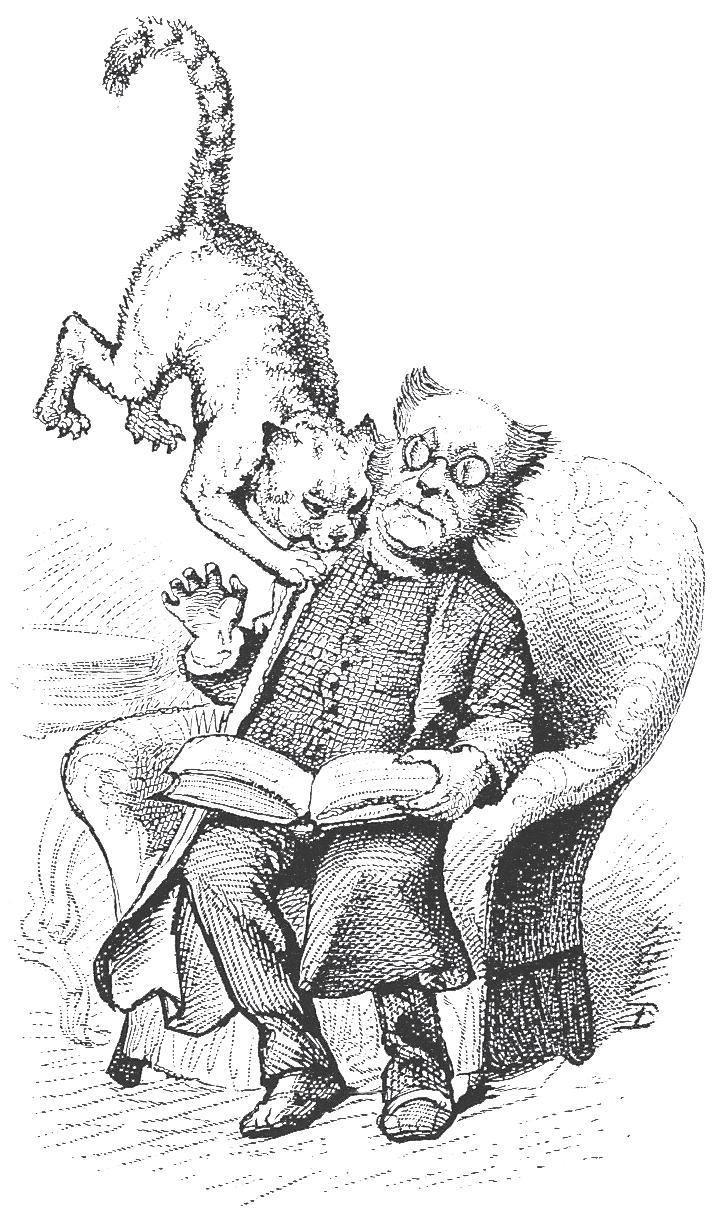
hosting device with a Raspberry Pi computer, an SD card or other storage device, and a small wifi hub, powered by solar panels on the device. The device can be populated with appropriately selected content and then it can be taken where users are, either to share and communicate information directly or to use the wifi hub to transmit it locally to their phones. (The world is fuller than you would think of people with phones but poor or no data plans.) The host with the offline Internet device may be a teacher, a health worker, or a Peace Corps volunteer. The key to success is in the relationships those hosts can build with people who need good quality information.
There are other ways to break through the technology barrier. In the most adverse cases, satellite TV dishes can download compressed files or smuggled flash pens can carry surprising quantities of current, uncensored information. The limits of human ingenuity in this regard have not been reached. In various of the OLI consortium groups, work progresses on multiple tracks: technology and standards development, content collection and curation, outreach to particular agencies and populations, and of course the inevitable challenge of finding resources to support this kind of work.
We know we need to address, wherever and however possible, the fact of global digital exclusion. Waiting on Elon Musk to fill the sky with satellites is problematic in a hundred ways, while the need for information is urgent and often very local. Understanding connectivity as a spectrum, ranging from the most privileged high-speed connections down to the most ingenious of local solutions, will enable us to find sustainable solutions soon for people in highly challenged conditions.
Work for OLI members has various sources of funding and energy. The consortium itself has benefitted since 2023 from a focused and generous grant from the Arcadia Fund, well known for their commitment to open access information and cultural preservation, as well as global environmental issues.
The white paper doesn’t only report what is possible. It is also a call to action for policy-makers, development agencies, libraries, and educational systems to recognize that many things are now possible to make a difference for people in need of a richer information environment. Librarians, in particular, always on the front line of connecting people with the information they need, have a role to play in raising consciousness and also often in participating directly in the implementation of solutions.
What is to be done? Where need for information is great, the OLI consortium can help connect would-be users to organizations that can help find ways to provide information.
<https://www.charleston-hub.com/media/atg/>

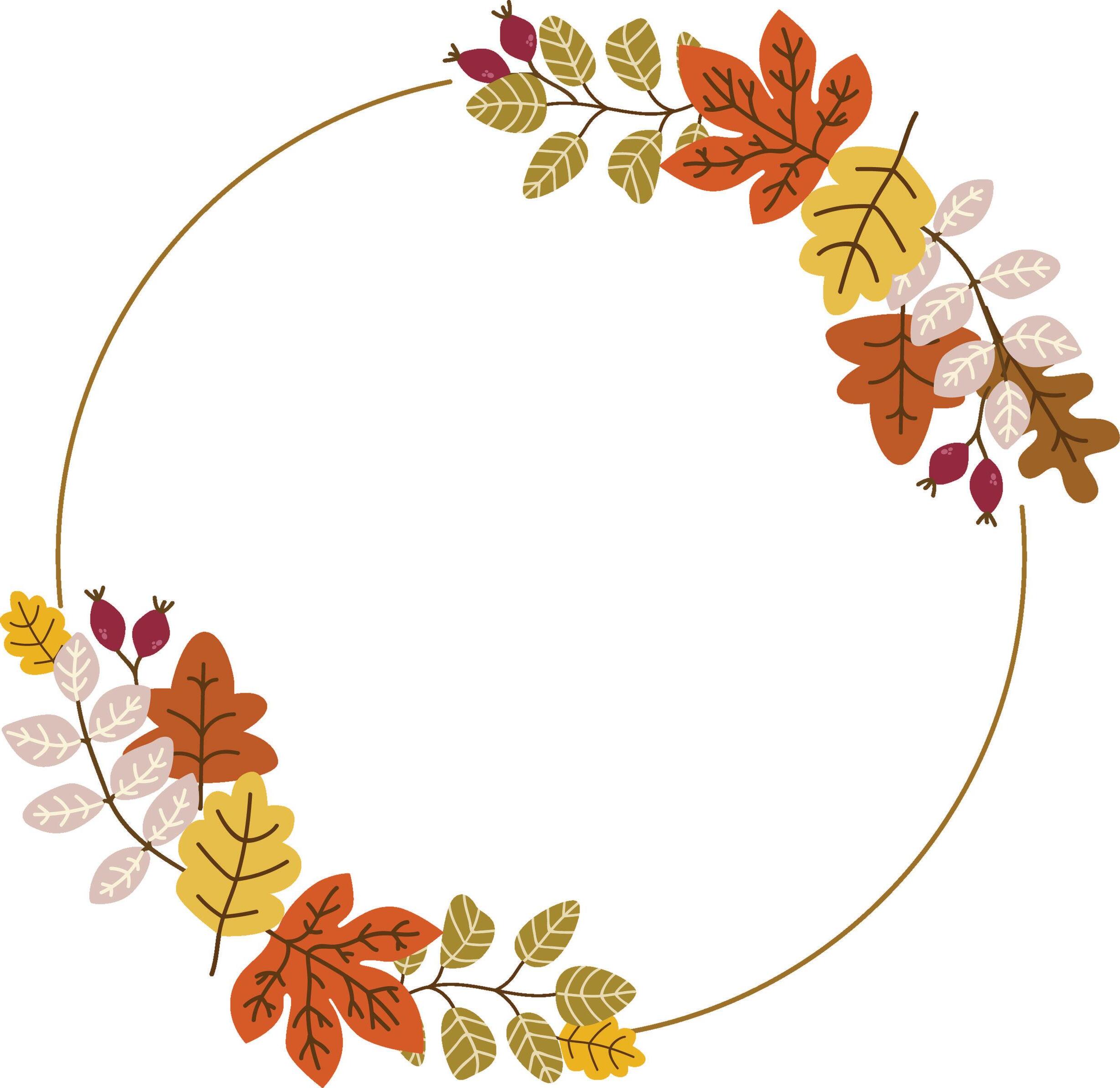
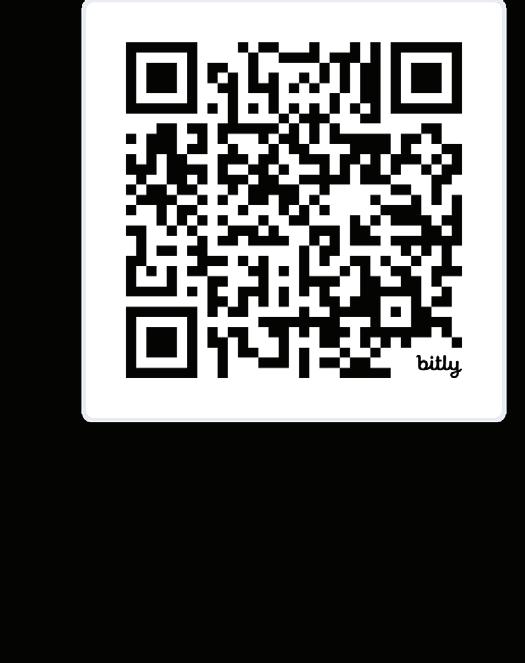
We hope you enjoy the 2024 Charleston Conference! Scan the QR code to be directed to the app.

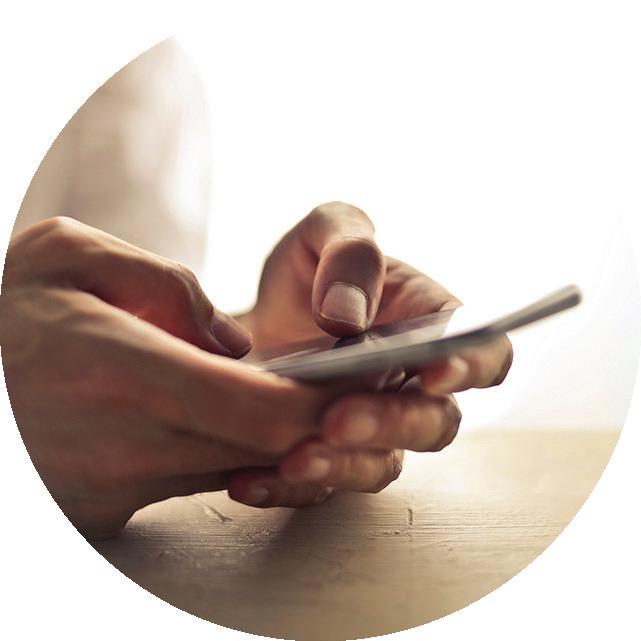
TO ADVERTISE IN ATG
Contact Toni Nix at <justwrite@lowcountry.com> Click the links below for information on how to Subscribe, Submit Content, or Contact Us
Against the Grain (ISSN: 1043-2094) is your key to the latest news about libraries, publishers, book jobbers, and subscription agents. Our goal is to link publishers, vendors, and librarians by reporting on the issues, literature, and people that impact the world of books and journals. ATG eJournal will be published five times a year (February, April, June, September, and November) and will be distributed to ATG subscribers, Charleston Library Conference attendees, and registered members on the Charleston Hub.
Find ATG on the Charleston Hub at www.charleston-hub.com